List of AMD Ryzen 3 processors
|
|
|
|
|
List of AMD Ryzen 3 processors
Here is the list of chips for the group of processors AMD Ryzen 3 with the basic technical details. As well as a link to their respective global characteristics.
Note: Commissions may be earned from the link above.
Processors:
| AMD Ryzen 3 PRO 5475U | 2022 Q1 | 7 nm FinFET | 4 | 8 | 2700 | 4100 | 8000 | 64000 | 16 | 15 |
| AMD Ryzen 3 PRO 5450U | 2020 Q3 | 7 nm FinFET | 4 | 8 | 2600 | 4000 | 8000 | 64000 | 16 | 15 |
| AMD Ryzen 3 PRO 5350GE | 2021 Q2 | 7 nm FinFET | 4 | 8 | 3600 | 4200 | 8000 | 64000 | 16 | 35 |
| AMD Ryzen 3 PRO 5350G | 2021 Q2 | 7 nm FinFET | 4 | 8 | 4000 | 4200 | 8000 | 64000 | 16 | 65 |
| AMD Ryzen 3 PRO 4450U | 2020 Q3 | 7 nm FinFET | 4 | 8 | 2500 | 3700 | 4000 | 64000 | 16 | 15 |
| AMD Ryzen 3 PRO 4350GE | 2020 Q3 | 7 nm FinFET | 4 | 8 | 3500 | 4000 | 4000 | 64000 | 20 | 35 |
| AMD Ryzen 3 PRO 4350G | 2020 Q3 | 7 nm FinFET | 4 | 8 | 3800 | 4000 | 4000 | 64000 | 20 | 65 |
| AMD Ryzen 3 Pro 4200G | 2020 Q3 | 7 nm | 4 | 8 | 3800 | 4100 | 8000 | 64000 | 12 | 65 |
| AMD Ryzen 3 PRO 2200GE | 2018 Q1 | 14 nm | 4 | 4 | 3200 | 3600 | 4000 | 64000 | 8 | 35 |
| AMD Ryzen 3 PRO 2200G | 2018 Q2 | 14 nm | 4 | 4 | 3500 | 3700 | 4000 | 64000 | 8 | 65 |
| AMD Ryzen 3 PRO 2100GE | 2018 Q2 | 14 nm | 4 | 4 | 3200 | 3600 | 4000 | 64000 | 8 | 35 |
| AMD Ryzen 3 5425U | 2022 Q1 | 7 nm FinFET | 4 | 8 | 2700 | 4100 | 8000 | 32000 | 16 | 15 |
| AMD Ryzen 3 5425C | 2022 Q2 | 7 nm FinFET | 4 | 8 | 2700 | 4100 | 8000 | 32000 | 16 | 15 |
| AMD Ryzen 3 5400U | 2021 Q1 | 7 nm FinFET | 4 | 8 | 2600 | 4000 | 8000 | 32000 | 16 | 15 |
| AMD Ryzen 3 5300U | 2021 Q1 | 7 nm FinFET | 4 | 8 | 2600 | 3800 | 4000 | 32000 | 12 | 15 |
| AMD Ryzen 3 5300GE | 2021 Q1 | 7 nm FinFET | 4 | 8 | 3600 | 4200 | 8000 | 64000 | 16 | 65 |
| AMD Ryzen 3 5300G | 2021 Q1 | 7 nm FinFET | 4 | 8 | 4000 | 4200 | 8000 | 64000 | 16 | 65 |
| AMD Ryzen 3 5125C | 2022 Q2 | 7 nm FinFET | 2 | 4 | 3000 | 3000 | 8000 | 32000 | 16 | 15 |
| AMD Ryzen 3 4300U | 2020 Q1 | 7 nm FinFET | 4 | 4 | 2700 | 3700 | 4000 | 32000 | 12 | 15 |
| AMD Ryzen 3 4300GE | 2020 Q3 | 7 nm | 4 | 8 | 3500 | 4000 | 4000 | 128000 | 16 | 35 |
| AMD Ryzen 3 4300G | 2020 Q3 | 7 nm FinFET | 4 | 8 | 3800 | 4000 | 4000 | 64000 | 16 | 65 |
| AMD Ryzen 3 4100 | 2022 Q2 | 7 nm FinFET | 4 | 8 | 3800 | 4000 | 4000 | 128000 | 24 | 65 |
| AMD Ryzen 3 3300X | 2020 Q2 | 7 nm FinFET | 4 | 8 | 3800 | 4300 | 16000 | 64000 | 20 | 65 |
| AMD Ryzen 3 3300U | 2019 Q1 | 12 nm | 4 | 4 | 2100 | 3500 | 4000 | 32000 | 12 | 15 |
| AMD Ryzen 3 3250U | 2020 Q1 | 14 nm | 2 | 4 | 2600 | 3500 | 4000 | 32000 | 12 | 15 |
| AMD Ryzen 3 3250C | 2020 Q4 | 14 nm | 2 | 4 | 2600 | 3500 | 4000 | 32000 | 12 | 15 |
| AMD Ryzen 3 3200U | 2019 Q1 | 14 nm | 2 | 4 | 2600 | 3500 | 4000 | 32000 | 12 | 15 |
| AMD Ryzen 3 3200GE | 2019 Q3 | 12 nm | 4 | 4 | 3300 | 3800 | 4000 | 64000 | 20 | 35 |
| AMD Ryzen 3 3200G | 2019 Q3 | 12 nm | 4 | 4 | 3600 | 4000 | 4000 | 64000 | 12 | 65 |
| AMD Ryzen 3 3100 | 2020 Q2 | 7 nm FinFET | 4 | 8 | 3600 | 3900 | 16000 | 64000 | 20 | 65 |
| AMD Ryzen 3 2300X | 2018 Q3 | 12 nm | 4 | 4 | 3500 | 4000 | 8000 | 64000 | 20 | 65 |
| AMD Ryzen 3 2300U | 2018 Q1 | 14 nm | 4 | 4 | 2000 | 3400 | 4000 | 32000 | 12 | 15 |
| AMD Ryzen 3 2200U | 2018 Q1 | 14 nm | 2 | 4 | 2500 | 3400 | 4000 | 32000 | 12 | 15 |
| AMD Ryzen 3 2200GE | 2018 Q1 | 14 nm | 4 | 4 | 3200 | 3600 | 4000 | 64000 | 8 | 35 |
| AMD Ryzen 3 2200G | 2018 Q1 | 14 nm | 4 | 4 | 3500 | 3700 | 4000 | 64000 | 12 | 65 |
| AMD Ryzen 3 1300X | 2017 Q3 | 14 nm | 4 | 4 | 3500 | 3700 | 8000 | 64000 | 20 | 65 |
| AMD Ryzen 3 1200 AF | 2020 Q2 | 12 nm | 4 | 4 | 3100 | 3400 | 8000 | 64000 | 20 | 65 |
| AMD Ryzen 3 1200 | 2017 Q3 | 14 nm | 4 | 4 | 3100 | 3400 | 8000 | 64000 | 20 | 65 |
Specifications and performance of the AMD Ryzen 3 processors
AMD Ryzen 3000 release date, news and rumors
AMD Ryzen 3rd Generation could seriously threaten Intel.
Audio player loading…
Thanks to all the AMD Ryzen 3000 CPUs on the market these days, you could say that Team Red is on its way to processor dominance. AMD improved the market with their first-generation Ryzen chips and, with the Ryzen 2nd-generation back in 2018, they managed to double Intel’s sales. It’s no surprise that Ryzen’s 3rd generation came with a lot of hype. Thankfully, Team Red managed to beat all expectations.
That’s because the AMD Ryzen 3000 CPUs introduced the 7-nanometer(nm) Zen 2 architecture into the mainstream. And, they managed to do so with an accessible price tag for the average buyer. Now, you can get a CPU with 16-cores and 32-threads without getting a high-end workstation thanks to the Ryzen 9 3950X, which broke world overclocking records when it was released. AMD has also released processors to win the hearts of budget gamers with chips like the Ryzen 3100.
Considering Intel’s problems with releasing the 10nm Cannon Lake chips and it’s still having issues even in 2021, it’s no wonder that the AMD Ryzen 3000 processors have been such a big hit.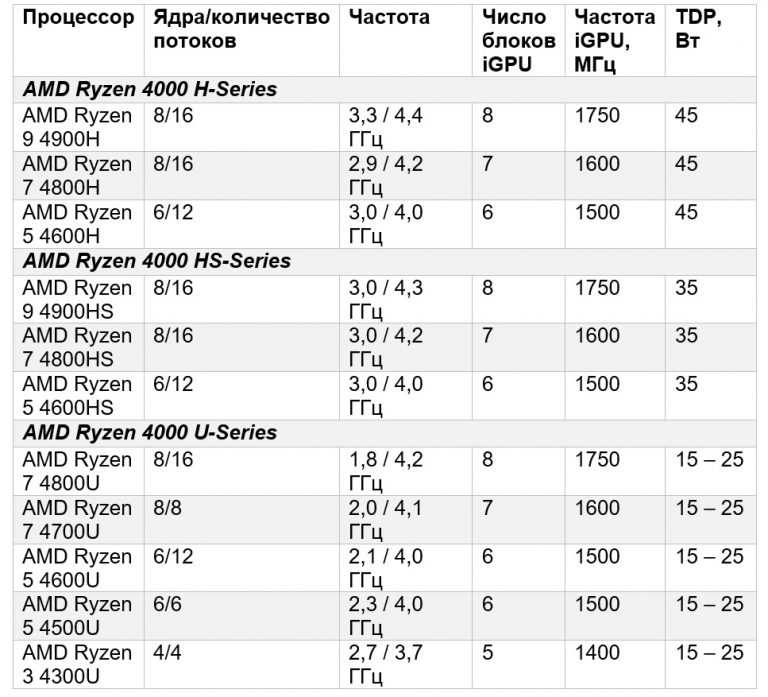 And, thanks to the introduction of the new AMD Ryzen 5000 chips as well as the Ryzen 5000 CPUs for laptops, Team Red is establishing itself as the go-to chipmaker for content creators, gamers, and even casual users for the foreseeable future.
And, thanks to the introduction of the new AMD Ryzen 5000 chips as well as the Ryzen 5000 CPUs for laptops, Team Red is establishing itself as the go-to chipmaker for content creators, gamers, and even casual users for the foreseeable future.
Take a look at this page to learn everything you need to know about AMD Ryzen 3000. These older CPUs are still worth considering in 2021, especially because the Ryzen 5000 stock is as limited as ever. With a long list of modern motherboards already supporting Ryzen 5000, it should be easy for you to upgrade later when they’re more readily available.
AMD Ryzen 9 3900X | 5 stars | Incredible performance, PCIe 4.0, Beats Intel at the same price | Single core performance still behind, Included heatsink may not be enough
AMD Ryzen 7 3700X | 4.5 stars | Incredible price to performance; Affordable; Included cooler | Single-threaded performance still falls behind Intel
AMD Ryzen 5 3600X | 5 stars | Excellent performance; Affordable; Includes a cooler | Still 6-cores
AMD Ryzen 5 3600 | 5 stars | Top-tier gaming performance; Easy upgrade path; High value | Only six cores
AMD Ryzen 3 3300X | 4.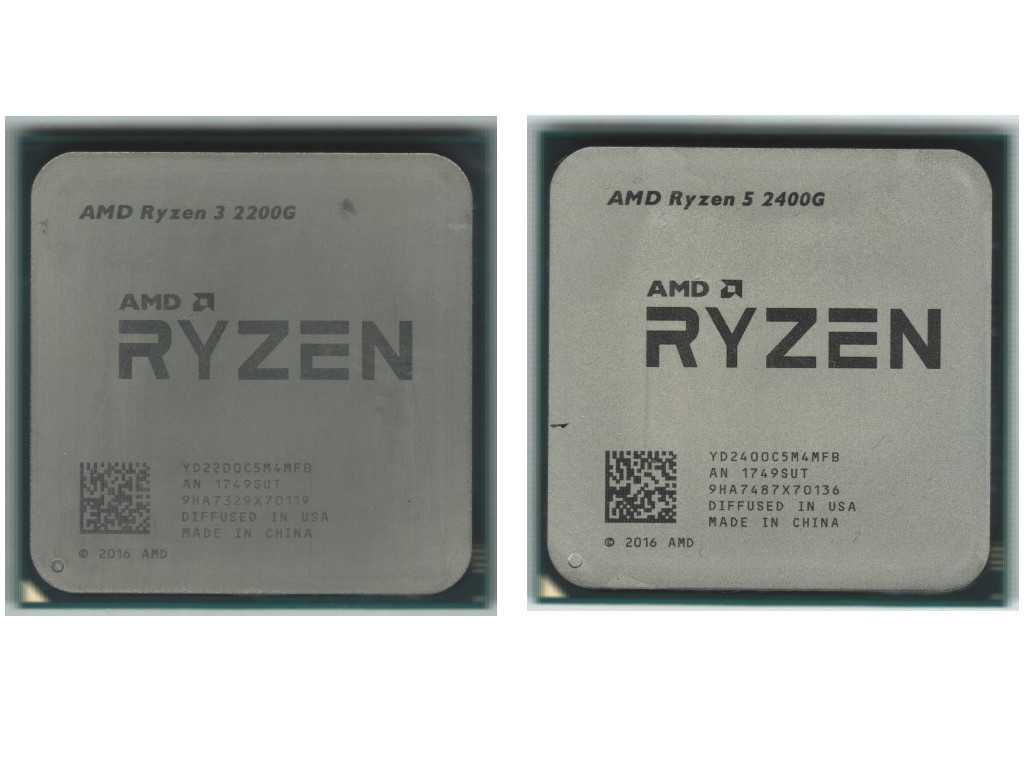 5 stars| Excellent multi-core performance, Affordable, Mid-range gaming performance for cheap | Not a huge jump over Ryzen 3 3100
5 stars| Excellent multi-core performance, Affordable, Mid-range gaming performance for cheap | Not a huge jump over Ryzen 3 3100
AMD Ryzen 3 3100 | 4.5 stars | Excellent performance, Affordable, Doesn’t suck up much power | Not as fast as the 3300X, May bottleneck high-end GPUs
Cut to the chase
- What is it? AMD’s 3rd generation of mainstream processors for laptops and desktops
- When is it out? Out since July 7, 2019
- What will it cost? Starting at $99 (about £79, AU$150)
AMD presenting the AMD Ryzen 3rd Generation at CES 2019. (Image Credit: TechRadar)
AMD Ryzen 3rd Generation release date
The AMD Ryzen 3rd Generation processors, first announced at CES 2019, are out now. Many of them finally hit the streets on July 7. The Ryzen 9 3900 and Ryzen 5 3500X, on the other hand, both came out on October 8. The AMD Ryzen 9 3950X, the surprise reveal of E3 2019, came out later on November 25.
AMD presenting the AMD Ryzen 3rd Generation at CES 2019. (Image Credit: TechRadar)
AMD Ryzen 3rd Generation price
At AMD’s Computex 2019 keynote, Team Red showcased several processors from the Ryzen 5 3600 to the Ryzen 9 3900X. These CPUs offer seriously impressive options from the mid-range to the high-end. Curiously, there have been no announcements of any 7nm Zen 2 processors for the budget sector, but at least AMD launched new APUs in the Ryzen 3 3300G and Ryzen 5 3400G at $99 (£94, AU$144) and $149 (£139, AU$240), respectively.
- AMD Ryzen 9 3950X: $749 (about £590, AU$1,080)
- AMD Ryzen 9 3900X: $499 (about £390, AU$720)
- AMD Ryzen 7 3800X: $399 (about £310, AU$580)
- AMD Ryzen 7 3700X: $329 (about £260, AU$480)
- AMD Ryzen 5 3600X: $249 (about £200, AU$360)
- AMD Ryzen 5 3600: $199 (about £160, AU$290)
- AMD Ryzen 5 3400G: $149 (£139, AU$240)
- AMD Ryzen 3 3300X: $120 (about £100, AU$190)
- AMD Ryzen 3 3300G: $99 (£94, AU$144)
- AMD Ryzen 3 3100: $99 (about £79, AU$150)
The AMD Ryzen 3rd Generation delivers significant performance bumps, with power consumption taking a nosedive.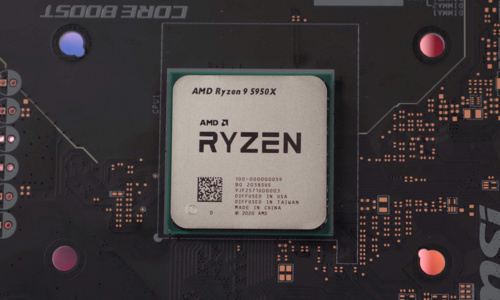 (Image credit: TechRadar)
(Image credit: TechRadar)
AMD Ryzen 3rd Generation specs
Now that the AMD Ryzen 3rd Generation lineup has been released, we know exactly what’s inside these new 7nm processors for consumers. You should experience perceptible performance bumps, with power consumption taking a nosedive. Improvements all around.
The 7nm Zen 2 architecture found in AMD Ryzen 3rd Generation processors allows AMD to bring TDP down to just 65W in the Ryzen 5 3600, for one. It also implements a considerable 15% improvement to IPC (instructions per clock) performance. This should see performance go up, resulting in some of the best processors for gaming.
With the Ryzen 5 3600X, AMD takes the performance of the budget-minded Ryzen 5 2600X to another level, increasing IPC (instructions per clock) performance and clock speed while keeping the same price point.
Of course, if we can’t talk about AMD’s affordable releases without mentioning the AMD Ryzen 3 3300X, which delivers mid-range gaming performance for much cheaper, and its lower-specced sibling, the AMD Ryzen 3 3100.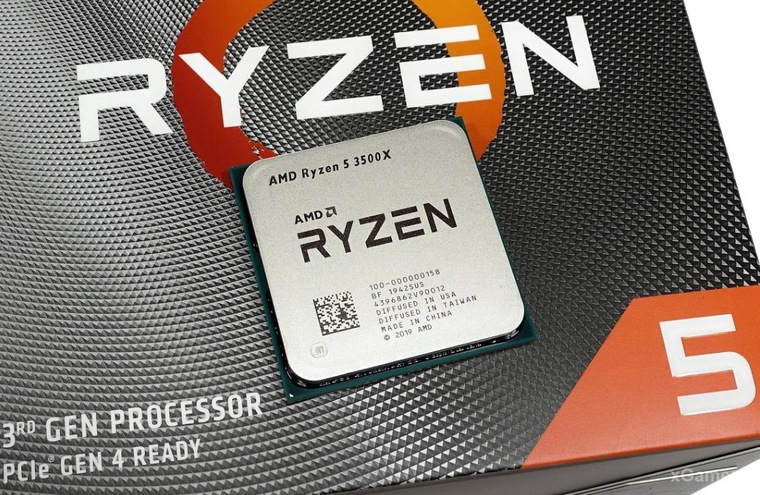 The Ryzen 3 3300X boasts double the amount of L3 cache over its predecessor and manages to be about 10-20% faster with its 4 cores, 8 threads and 4.3GHz in boost clock. The Ryzen 3 3100, on the other hand, has the same amount of L3 cache, as well as the same number of cores and threads. However, it has a boost clock of only 3.6GHz.
The Ryzen 3 3300X boasts double the amount of L3 cache over its predecessor and manages to be about 10-20% faster with its 4 cores, 8 threads and 4.3GHz in boost clock. The Ryzen 3 3100, on the other hand, has the same amount of L3 cache, as well as the same number of cores and threads. However, it has a boost clock of only 3.6GHz.
On the high-end, there’s the Ryzen 9 3950X, an absolute monster of a processor, with 16 cores and 32 threads and a boost clock of 4.7GHz. These specs are stunning in their own right, but what really takes it to the next level is that it manages to do it with a relatively low 105W TDP.
Next to it is the AMD Ryzen 9 3900X, and while it’s not as impressive as the 3950X – at least on paper – it still packs 12-cores and 24-threads of high-performance power. With boost clocks up to 4.6GHz, it’s an impressive amount of power for that 105W TDP, even if temperatures get a little high. And, for about the same price point, the Ryzen 9 3900X is between 25%-40% faster than the Intel Core i9-9900K in multi-threaded loads.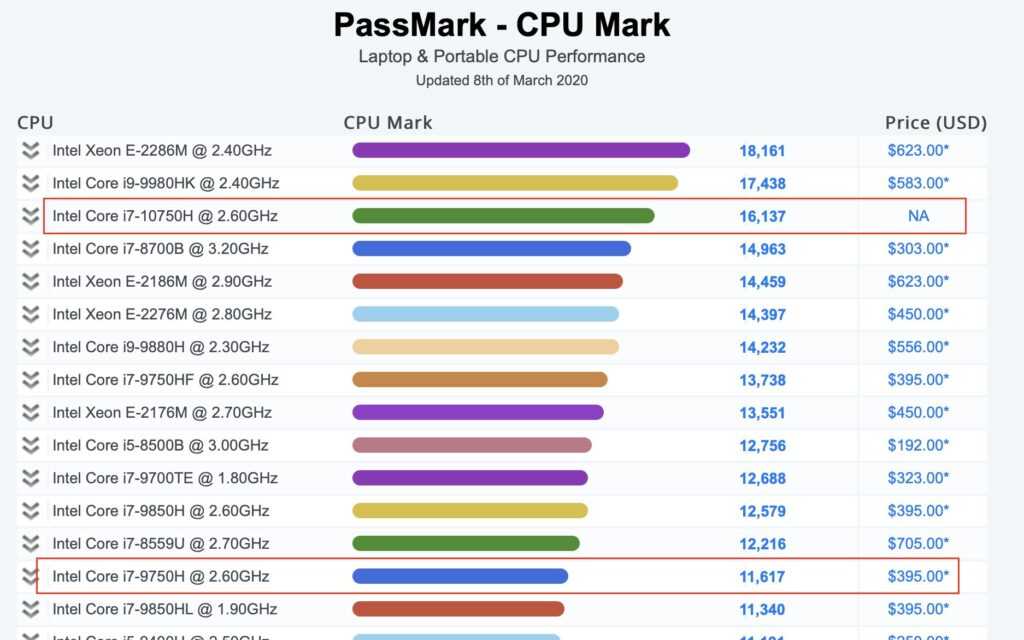
And there’s the AMD Ryzen 7 3700X, which boasts 8-core, 16-thread and a TDP of just 65W. Just like the Ryzen 9 3900X, it’s also an absolute beast when it comes to multi-threaded workloads.
As far as the rumored new wave of Ryzen 3000 processors, well, the AMD Ryzen 9 3900 would be a lower-powered version of the excellent AMD Ryzen 9 3900X, with a similar relationship between the Ryzen 7 3700 and the Ryzen 7 3700X. They apparently will have the same core and thread counts as their X counterparts, only with a 65W TDP.
However, AMD Ryzen 3rd Generation is more than just the mid-range and the top-end. If a new leak is to be trusted, we may be seeing an AMD Ryzen 3 3100 and an AMD Ryzen 3 3300X, both of which would be 4-core, 8-thread entry-level 65W processors.
We went ahead and listed out all the specs of the confirmed Ryzen 3000 processors below:
- AMD Ryzen 9 3950X – 16-cores, 32-threads | 4.7GHz boost, 3.5GHz base | 105W
- AMD Ryzen 9 3900X – 12-cores, 24-threads | 4.
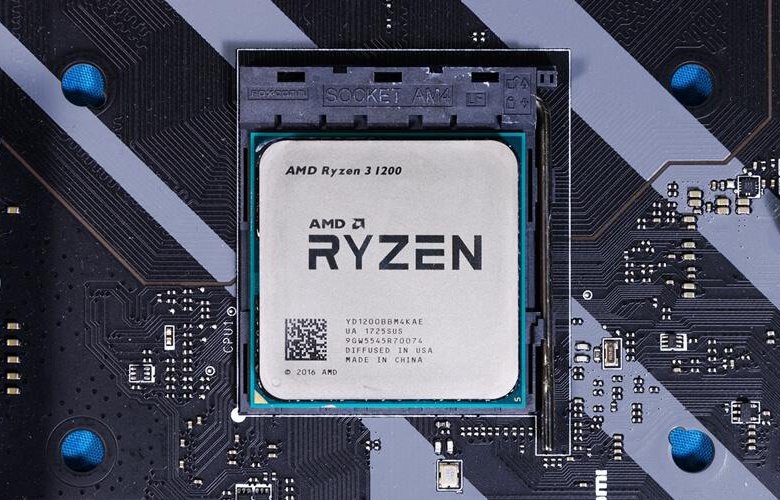 6GHz boost, 3.8GHz base | 105W
6GHz boost, 3.8GHz base | 105W - AMD Ryzen 7 3800X – 8-cores, 16-threads | 4.5GHz boost, 3.9GHz base | 105W
- AMD Ryzen 7 3700X – 8-cores, 16-threads | 4.4GHz boost, 3.6GHz base | 65W
- AMD Ryzen 5 3600X – 6-cores, 12-threads | 4.4GHz boost, 3.8GHz base | 95W
- AMD Ryzen 5 3600 – 6-cores, 12-threads | 4.2GHz boost, 3.6GHz base | 65W
- AMD Ryzen 3 3300X – 4-cores, 8-threads | 4.3GHz boost, 3.5GHz base | 65W
- AMD Ryzen 5 3400G – 4-cores, 8-threads | 4.2GHz boost, 3.7GHz base | 65W
- AMD Ryzen 3 3100 – 4-cores, 8-threads | 3.6GHz boost, 3.5GHz base | 65W
At every level, AMD Ryzen 3rd Generation brings better performance and concurrently lowers power consumption over the previous generation. Of course, AMD boasted some benchmarks where it flexed on the competition, but that’s par for the course.
The X570 chipset also marks a generational improvement in computing.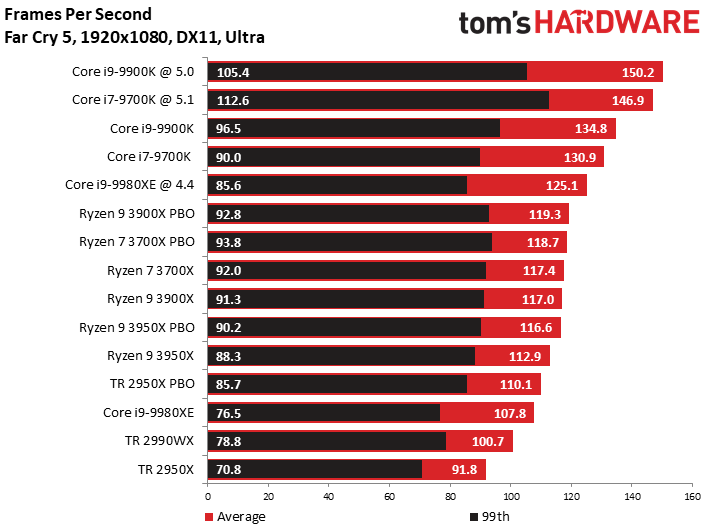 Along with the faster processors, the biggest improvement is the support for PCIe 4.0, exclusive to AMD. This new generation of PCIe brings faster graphics cards and SSDs to AMD’s platform. It delivers up to 51% faster SSD performance, along with 69% faster graphics performance – though that will be exclusive to AMD Navi graphics cards for now.
Along with the faster processors, the biggest improvement is the support for PCIe 4.0, exclusive to AMD. This new generation of PCIe brings faster graphics cards and SSDs to AMD’s platform. It delivers up to 51% faster SSD performance, along with 69% faster graphics performance – though that will be exclusive to AMD Navi graphics cards for now.
X570 also brings native support to four SuperSpeed USB ports, with a maximum bandwidth of 10Gbps. This will support both USB-A and USB-C connections, and while it’s not as fast as Thunderbolt 3, the native support should lead to wider adoption across desktop motherboards.
Ryzen isn’t just about desktop components. At E3 2019, Microsoft revealed that its follow up to the Xbox, Project Scarlett, will be powered by a custom SoC made of a Zen 2 processor and an AMD Navi GPU. Slated for a «Holiday 2020» release, Project Scarlett is rumored to be four times more powerful than the Xbox One X having the ability to run games at 120FPS and potentially 8K resolutions.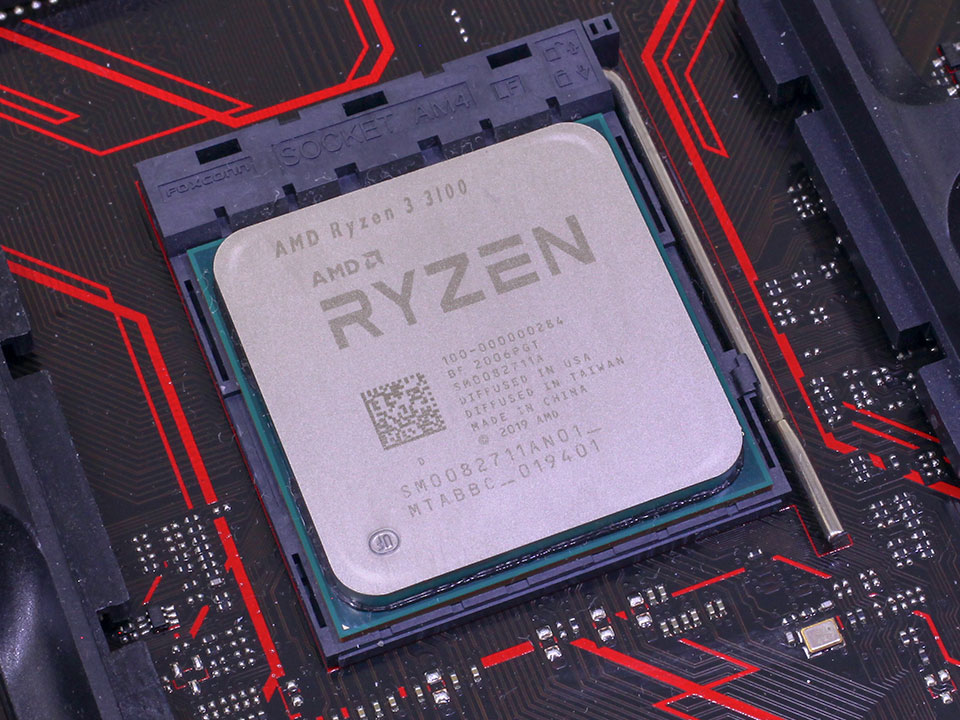
- AMD Ryzen Threadripper 3rd Generation HEDT processors could be even more impressive
Kevin Lee was a former computing reporter at TechRadar. Kevin is now the SEO Updates Editor at IGN based in New York. He handles all of the best of tech buying guides while also dipping his hand in the entertainment and games evergreen content. Kevin has over eight years of experience in the tech and games publications with previous bylines at Polygon, PC World, and more. Outside of work, Kevin is major movie buff of cult and bad films. He also regularly plays flight & space sim and racing games. IRL he’s a fan of archery, axe throwing, and board games.
Ryzen 3 — AMD — WikiChip
Ryzen 3 (pronounced Rye-Zen) is a family of low-end performance 64-bit quad-core x86 microprocessors introduced by AMD in late-2017. Ryzen 3 is based on the Zen microarchitecture and is manufactured on GF’s 14 nm process. Ryzen 3 is marketed toward the low-end performance market. The Ryzen 3 is positioned against Intel’s low-end mainstream Core i3 processors, offering competitive performance at lower prices.
The Ryzen 3 is positioned against Intel’s low-end mainstream Core i3 processors, offering competitive performance at lower prices.
Introduced in July 2017, the Ryzen 3 family is aimed at low-end performance and budget processors. Ryzen 3 are situated below the Ryzen 5 family with 4 cores but no simultaneous multithreading.
Introduced in July 2017, Zen-based Ryzen 3 processors are manufactured on GlobalFoundries 14 nm process. All models have:
| 1200 | $ 109.00
€ 98.10 |
27 July 2017 | 4 | 4 | 8 MiB
8,192 KiB |
2 MiB
2,048 KiB |
3.1 GHz
3,100 MHz |
65 W
65,000 mW |
64 GiB
65,536 MiB |
3.4 GHz
3,400 MHz |
3. 4 GHz 4 GHz
3,400 MHz |
3.1 GHz
3,100 MHz |
3.1 GHz
3,100 MHz |
✔ | ✘ | ✘ |
| 1300X | $ 129.00
€ 116.10 |
27 July 2017 | 4 | 4 | 8 MiB
8,192 KiB |
2 MiB
2,048 KiB |
3.5 GHz
3,500 MHz |
65 W
65,000 mW |
64 GiB
65,536 MiB |
3.7 GHz
3,700 MHz |
3.7 GHz
3,700 MHz |
3.6 GHz
3,600 MHz |
3.6 GHz
3,600 MHz |
✔ | ✔ | ✘ |
| 2200G | $ 99. 00 00
€ 89.10 |
12 February 2018 | 4 | 4 | 4 MiB
4,096 KiB |
2 MiB
2,048 KiB |
3.5 GHz
3,500 MHz |
65 W
65,000 mW |
64 GiB
65,536 MiB |
3.7 GHz
3,700 MHz |
3.65 GHz
3,650 MHz |
✔ | ✔ | ✘ | ||
| 2200GE | 19 April 2018 | 4 | 4 | 4 MiB
4,096 KiB |
2 MiB
2,048 KiB |
3.2 GHz
3,200 MHz |
35 W
35,000 mW |
64 GiB
65,536 MiB |
3.6 GHz
3,600 MHz |
✔ | ✔ | ✘ | ||||
| PRO 1200 | 4 | 4 | 8 MiB
8,192 KiB |
2 MiB
2,048 KiB |
3.1 GHz
3,100 MHz |
65 W
65,000 mW |
64 GiB
65,536 MiB |
3.4 GHz
3,400 MHz |
✔ | ✘ | ✔ | |||||
| PRO 1300 | 4 | 4 | 8 MiB
8,192 KiB |
2 MiB
2,048 KiB |
3.5 GHz
3,500 MHz |
65 W
65,000 mW |
64 GiB
65,536 MiB |
3.7 GHz
3,700 MHz |
✔ | ✘ | ✔ | |||||
| PRO 2200G | 10 May 2018 | 4 | 4 | 4 MiB
4,096 KiB |
2 MiB
2,048 KiB |
3.5 GHz
3,500 MHz |
65 W
65,000 mW |
64 GiB
65,536 MiB |
3.7 GHz
3,700 MHz |
✔ | ✘ | ✔ | ||||
| PRO 2200GE | 10 May 2018 | 4 | 4 | 4 MiB
4,096 KiB |
2 MiB
2,048 KiB |
3.2 GHz
3,200 MHz |
35 W
35,000 mW |
64 GiB
65,536 MiB |
3.6 GHz
3,600 MHz |
✔ | ✔ | ✔ |
Zen-based mobile Ryzen 3 processors were introduced in early 2018. Those processors feature dual and quad core models as well as an integrated graphics processor. All models have:
Introduced in September 2018, the Ryzen 3 2300X processor, a Pinnacle Ridge chip with four of its eight cores disabled and no integrated graphics, provides a small IPC improvement through various memory and cache ennhancements as well as a modest clock frequency improvement over its predecessors. It was joined from July 2019 by models with integrated graphics based on Picasso. All models have:
Zen+ based mobile Ryzen 3 processors were introduced in January 2019. These processors feature two or four cores and an integrated graphics processor. They also include the IPC and clock frequency improvements of the Zen+ architecture compared to the previous Zen processors. All models have:
They also include the IPC and clock frequency improvements of the Zen+ architecture compared to the previous Zen processors. All models have:
AMD Zen 3 Ryzen 5000 Price, Benchmarks, Specs and Release Date
(Image credit: Fritchenz Frenz)
With the Ryzen 5000 series, it’s fair to say that AMD had finally, and fully, eclipsed Intel’s performance dominance in desktop PCs. AMD’s Zen 3 architecture landed in the new Ryzen 5000 series, breaking the 5GHz barrier with a newer version of AMD’s most successful architecture to date and taking our list of best CPUs for gaming by storm. We’ve got plenty of gaming and application benchmarks, power measurements, and thermal testing here in this article to serve as a guide to the performance you can expect from AMD’s most dominant series of processors in more than a decade. We also have pricing guides and links to tips on where to find the chips at retail, and you can see how the Ryzen 5000 chips rank compared to Intel’s chips in our CPU Benchmark Hierarchy.
The desktop PC was first on AMD’s Zen 3 chopping block, but the new microarchitecture powers AMD’s full lineup of next-gen processors, including the Ryzen 5000 «Vermeer» desktop processors that have taken over our list of Best CPUs and the EPYC Milan data center processors. AMD has also now announced its new Ryzen 5000 Mobile series, which is coming to retail soon in a host of new laptops. This base design also powers the promising new Ryzen 5000G ‘Cezanne’ APUs that are coming to a desktop PC near you later this year.
The first four Ryzen 5000 series desktop PC models stretch from the $299 Ryzen 5 5600X up to the $799 Ryzen 9 5950X. Barring shortages, the CPUs are on shelves now and represent a massive shift in the AMD vs Intel CPU wars. At launch, the Ryzen 5000 processors finally eclipsed Intel’s chips in every single metric that matters, like single- and multi-threaded workloads, productivity applications, and 1080p gaming performance, all by surprising margins.
AMD’s Zen 3 features a ground-up rethinking of the microarchitecture that finally allowed it to take the 1080p gaming performance lead from Intel.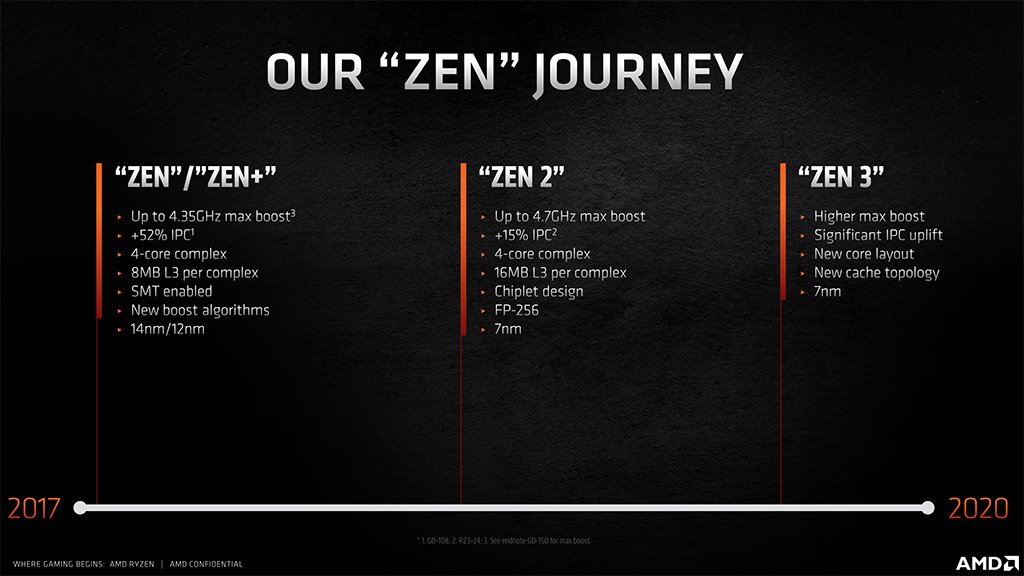 Paired with a 19% boost to instructions per cycle (IPC) throughput and peak rated boost speeds of up to 4.9 GHz, Zen 3 is the magic 7nm bullet that finally upset Intel from its position at the top of our CPU gaming benchmarks.
Paired with a 19% boost to instructions per cycle (IPC) throughput and peak rated boost speeds of up to 4.9 GHz, Zen 3 is the magic 7nm bullet that finally upset Intel from its position at the top of our CPU gaming benchmarks.
However, Intel fired back with the Alder Lake processors, like the Core i9-12900K, Core i7-12700K, and Core i5-12400 which retook the lead, at least at the comparable price points.
Here’s the Zen 3 Ryzen 5000 series processors that AMD launched as its initial salvo, and given that the company is launching its Zen 4 Ryzen 7000 chips by the end of the year, we don’t think we’ll see newer models any time soon:
| Zen 3 Ryzen 5000 Series Processors | RCP (MSRP) | Cores/Threads | Base/Boost Freq. | TDP | L3 Cache | Graphics |
|---|---|---|---|---|---|---|
| Ryzen 9 5950X | $799 | 16 / 32 | 3.4 / 4.9 GHz | 105W | 64MB (2×32) | N/A |
| Ryzen 9 5900X | $549 | 12 / 24 | 3. 7 / 4.8 GHz 7 / 4.8 GHz |
105W | 64MB (2×32) | N/A |
| Ryzen 7 5800X | $449 | 8 / 16 | 3.8 / 4.7 GHz | 105W | 32MB (2×16) | N/A |
| Ryzen 5 5600X | $299 | 6 / 12 | 3.7 / 4.6 GHz | 65W | 32MB (2×16) | N/A |
| Ryzen 7 5700G | ? | 8 / 16 | 3.8 / 4.6 | 65W | 20MB | RX Vega 8 |
| Ryzen 7 5700GE | ? | 8 / 16 | 3.2 / 4.6 | 35W | 20MB | RX Vega 8 |
| Ryzen 5 5600G | ? | 6 / 12 | 3.9 / 4.4 | 65W | 12MB | RX Vega 7 |
| Ryzen 5 5600GE | ? | 6 / 12 | 3.4 / 4.4 | 35W | 12MB | RX Vega 7 |
| Ryzen 3 5300G | ? | 4 / 8 | 4.0 / 4.2 | 65W | 10MB | RX Vega 6 |
| Ryzen 3 5300GE | ? | 4 / 8 | 3.6 / 4.2 | 35W | 10MB | RX Vega 6 |
AMD followed up that impressive roster with a new lineup to face down Intel’s Alder Lake:
| Price Street/MSRP | Design — Arch. |
E/P – Core|Thread | P-Core Base/Boost (GHz) | TDP / PBP / MTP | L3 Cache | |
| Ryzen 7 5800X3D | $449 | Zen 3 — Vermeer | 8P | 16T | 3.4 / 4.5 | 105W | 96MB |
| Ryzen 7 5700X | $299 | Zen 3 — Vermeer | 8P | 16T | 3.4 / 4.6 | 65W | 32MB |
| Ryzen 5 5600 | $199 | Zen 3 — Vermeer | 6P|12T | 3.5 / 4.4 | 65W | 32MB |
| Ryzen 5 5500 | $159 | Zen 3 — Cezanne | 6P | 12T | 3.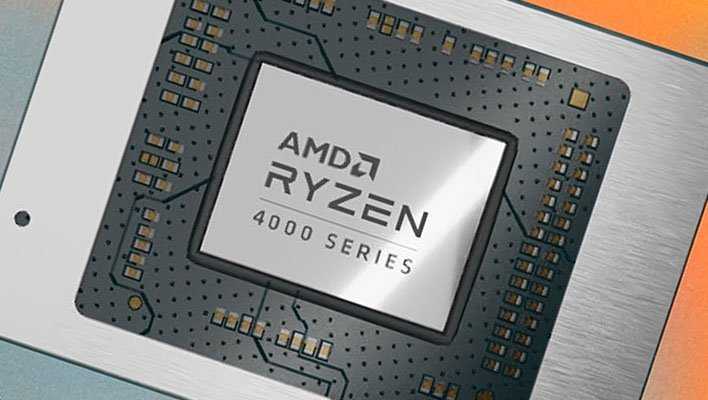 6 / 4.2 6 / 4.2 |
65W | 16MB |
| Ryzen 5 4600G | $154 | Zen 2 — Renoir | 6P | 12T | 3.7 / 4.2 | 65W | 8MB |
| Ryzen 5 4500 | $129 | Zen 2 — Renoir | 6P | 12T | 3.6 / 4.1 | 65W | 8MB |
| Ryzen 3 4100 | $99 | Zen 2 — Renoir | 4P | 8T | 3.8 / 4.0 | 65W | 4MB |
AMD’s new Cezanne and Renoir chips take a new approach of using Zen 3 and Zen 2-powered APU silicon with disabled integrated graphics units to tackle the low-end, while the Ryzen 7 5800X3D retook the gaming performance crown.
We also took the Ryzen 7 5700X, Ryzen 5 5600, and the Ryzen 5 5500 all for a spin, and we’re working to test the last few of the new AMD Ryzen 5000 entrants. We’ll do a full update of the article below after we’ve retested the entire Ryzen 5000 stack. For now, you can check out these charts with the new competitive positioning and the following face-offs, all of which will help highlight the current competitive positioning:
| Price Street/MSRP | Design — Arch. | E/P – Core|Thread | P-Core Base/Boost (GHz) | E-Core Base/Boost (GHz) | TDP / PBP / MTP | Memory Support | L3 Cache | |
| Ryzen 9 5950X | $600 ($799) | Zen 3 — Vermeer | 16P | 32T | 3.4 / 4.9 | — | 105W | DDR4-3200 | 64MB (2×32) |
| Core i9-12900K / KF | $589 (K) — $564 (KF) | Alder Lake | 8P+8E | 16C/24T | 3. 2 / 5.2 2 / 5.2 |
2.4 / 3.9 | 125W / 241W | DDR4/5-3200/4800 | 30MB |
| Ryzen 9 5900X | $450 ($549) | Zen 3 — Vermeer | 12P | 24T | 3.7 / 4.8 | — | 105W | DDR4-3200 | 32MB (1×32) |
| Ryzen 7 5800X3D | $449 | Zen 3 — Vermeer | 8P | 16T | 3.4 / 4.5 | — | 105W | DDR4-3200 | 96MB |
| Core i7-12700K / KF | $409 (K) — $384 (KF) | Alder Lake | 8P+4E | 12C/20T | 3.6 / 5.0 | 2.7 / 3.8 | 125W / 190W | DDR4/5-3200/4800 | 25MB |
| Ryzen 7 5800X | $350 ($449) | Zen 3 — Vermeer | 8P | 16T | 3.8 / 4.7 | — | 105W | DDR4-3200 | 32MB |
| Price Street/MSRP | Design — Arch. |
E/P – Core|Thread | P-Core Base/Boost (GHz) | E-Core Base/Boost (GHz) | TDP / PBP / MTP | Memory Support | L3 Cache | |
| Core i7-12700K / KF | $409 (K) — $384 (KF) | Alder Lake | 8P+4E | 12C/20T | 3.6 / 5.0 | 2.7 / 3.8 | 125W / 190W | DDR4/5-3200/4800 | 25MB |
| Ryzen 7 5800X | $350 ($449) | Zen 3 — Vermeer | 8P | 16T | 3.8 / 4.7 | — | 105W | DDR4-3200 | 32MB |
| Ryzen 7 5700X | $299 | Zen 3 — Vermeer | 8P | 16T | 3.4 / 4.6 | — | 65W | DDR4-3200 | 32MB |
| Core i5-12600K / KF | $289 (K) — $264 (KF) | Alder Lake | 6P+4E | 10C/16T | 3.7 / 4.9 | 2.8 / 3.6 | 125W / 150W | DDR4/5-3200/4800 | 16MB |
| Ryzen 7 5700G (APU) | $295 ($359) | Zen 3 — Cezanne | 8P | 16T | 3. 8 / 4.6 8 / 4.6 |
— | 65W | DDR4-3200 | 16MB |
| Ryzen 5 5600X | $225 ($299) | Zen 3 — Vermeer | 6P | 12T | 3.7 / 4.6 | — | 65W | DDR4-3200 | 32MB |
| Ryzen 5 5600G (APU) | $220 ($259 ) | Zen 3 — Cezanne | 6P | 12T | 3.9 / 4.4 | — | 65W | DDR4-3200 | 16MB |
| Ryzen 5 5600 | $199 | Zen 3 — Vermeer | 6P|12T | 3.5 / 4.4 | — | 65W | DDR4-3200 | 32MB |
| Core i5-12400 / F | $192 — $167 (F) | Alder Lake | 6P+0E | 6C/12T | 4.4 / 2.5 | — | 65W / 117W | DDR4/5-3200/4800 | 18MB |
| Ryzen 5 3600X | $250 ($240) | Zen 2 | 6P | 12T | 3.8 / 4.4 | — | 95W | DDR4-3200 | 32MB |
| Ryzen 5 3600 | $229 ($200) | Zen 2 | 6P | 12T | 3. 6 / 4.2 6 / 4.2 |
— | 65W | DDR4-3200 | 32MB |
| Ryzen 5 5500 | $159 | Zen 3 — Cezanne | 6P | 12T | 3.6 / 4.2 | — | 65W | DDR4-3200 | 16MB |
| Ryzen 5 4600G (APU) | $154 | Zen 2 — Renoir | 6P | 12T | 3.7 / 4.2 | — | 65W | DDR4-3200 | 8MB |
| Price Street/MSRP | Design — Arch. | E/P – Core|Thread | P-Core Base/Boost (GHz) | TDP / PBP / MTP | Memory Support | L3 Cache | |
| Ryzen 5 5500 | $199 | Zen 3 — Cezanne | 6P | 12T | 3.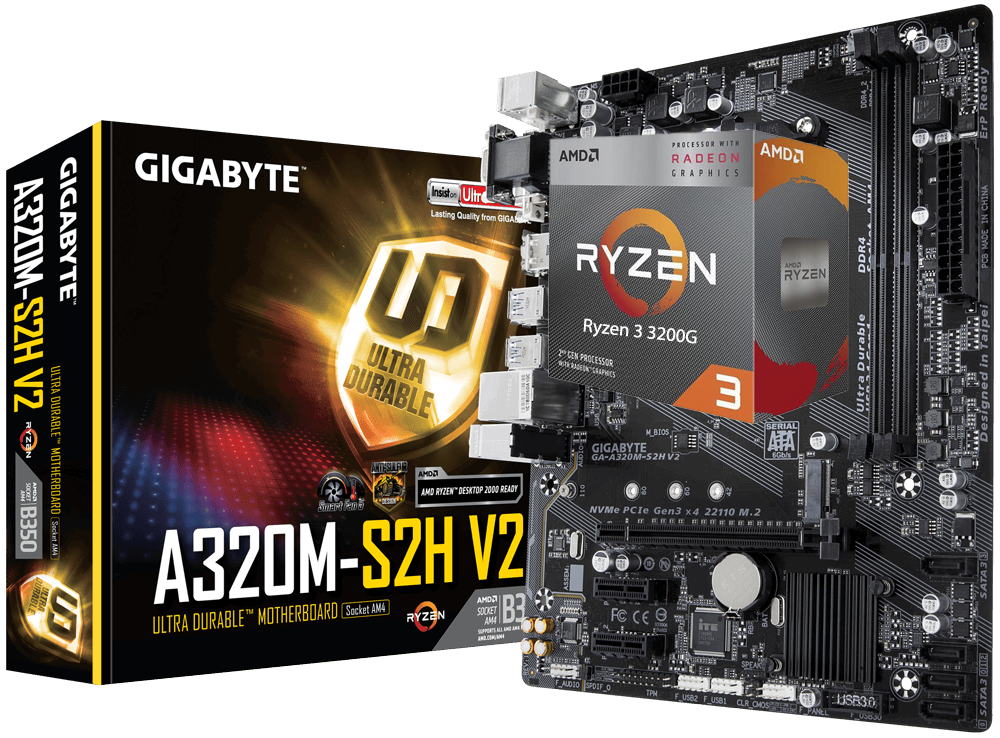 6 / 4.2 6 / 4.2 |
65W | DDR4-3200 | 16MB |
| Ryzen 5 4600G (APU) | $154 | Zen 2 — Renoir | 6P | 12T | 3.7 / 4.2 | 65W | DDR4-3200 | 8MB |
| Core i3-12100 / F | $122 — $97 (F) | Alder Lake | 4P+0E | 4C/8T | 3.3 / 4.3 | 60W / 89W | DDR4/5-3200/4800 | 12MB |
| Ryzen 5 4500 | $129 | Zen 2 — Renoir | 6P | 12T | 3.6 / 4.1 | 65W | DDR4-3200 | 8MB |
| Ryzen 3 4100 | $99 | Zen 2 — Renoir | 4P | 8T | 3. 8 / 4.0 8 / 4.0 |
65W | DDR4-3200 | 4MB |
- Ryzen 7 5800X3D vs Core i7-12700K and Core i9-12900K Face-Off: The Rise of 3D V-Cache
- Intel Core i9-12900K vs Ryzen 9 5900X and 5950X: Alder Lake and Ryzen 5000 Face Off
- Intel Core i5-12600K vs AMD Ryzen 5 5600X and 5800X Face Off: Ryzen Has Fallen
- Intel Core i7-12700K vs AMD Ryzen 9 5900X and 5800X Face Off: Intel Rising
- Intel Core i5-12400 vs AMD Ryzen 5 5600X Face-Off: The Gaming Value Showdown
Check out those articles above for the latest performance and pricing info. We’ll update the rest of the article once we’re done retesting the new Ryzen 5000 models. The historical view follows:
AMD’s Zen 3 Ryzen 5000 series begins with the impressive 16-core 32-thread Ryzen 9 5950X that has a recommended $799 price tag. This chip boosts up to 4.9 GHz, has 64MB of unified L3 cache, and a 105W TDP rating. As you’ll see in the CPU benchmark comparisons below, AMD’s Ryzen chip is faster than Intel’s 10-core Core i9-10900K in pretty much everything, which isn’t surprising — Intel has no equivalent for the mainstream desktop.
As you’ll see in the CPU benchmark comparisons below, AMD’s Ryzen chip is faster than Intel’s 10-core Core i9-10900K in pretty much everything, which isn’t surprising — Intel has no equivalent for the mainstream desktop.
The $549 Ryzen 9 5900X slots in as the more mainstream contender, at least by AMD’s definition of ‘mainstream,’ with 12 cores and 24 threads that boost up to 4.8 GHz. Intel’s Rocket Lake Core i9-11900K exceeds the 5900X’s AMD’s single-threaded prowess while still trailing in gaming and multi-threaded work.
The 6-core 12-thread $299 Ryzen 5 5600X’s base clocks come in at 100 MHz less than the previous-gen 3600XT, while boosts are 100 MHz higher at 4.6 GHz. AMD’s previous-gen 6C/12T Ryzen 5 3600XT had a 95W TDP, but AMD dialed that back to 65W with the 5600X, showing that Zen 3’s improved IPC affords lots of advantages. Despite the reduced TDP rating, the 5600X delivers explosive performance gains.
The Ryzen 5 5600X’s $300 price tag establishes a new price band for a mainstream processor, so Intel doesn’t have chips with an identical price range; the Core i5-11600K is the nearest Intel comparable. This chip carries a $262 price tag for the full-featured model, while the graphics-less 11600KF weighs in at $237.
This chip carries a $262 price tag for the full-featured model, while the graphics-less 11600KF weighs in at $237.
But AMD does have a glaring hole in its product stack: You’ll have to shell out an extra $150 to step up from the $300 6C/12T Ryzen 5 5600X to the $450 8C/16T Ryzen 7 5800X, which is a steep jump that leaves room for the 10700K to operate. Based upon product naming alone, it appears there is a missing Ryzen 7 5700X in the stack, but it remains to be seen if AMD will actually introduce that model.
AMD also recently announced the Ryzen 9 5900 and Ryzen 7 5800 processors, but those are destined for OEMs, meaning you won’t be able to find them at retail. The company also announced its Ryzen 5000 Mobile ‘Cezanne’ processors at CES 2021, bringing the power of Zen 3 to laptops for the first time, which we’ll dive into further below. AMD has also announced its long-anticipated Ryzen 5000G chips that come armed with the Zen 3 architecture and Vega graphics. These chips are headed to OEMs now and will come to retail outlets soon, meaning enthusiasts will soon have a lower-cost path to entry-level gaming, which will be helpful in these times of shortages.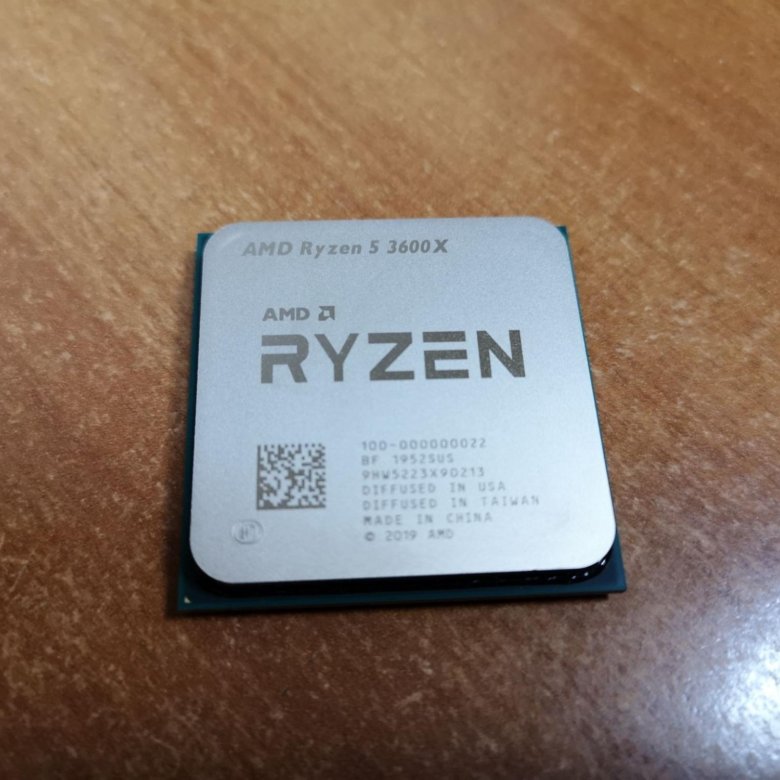
As odd as it sounds, Intel may have one hidden advantage — pricing. AMD now positions the Ryzen 5000 series as the premium brand. As a result, AMD has pushed pricing up by $50 across the stack compared to its Ryzen XT models. However, the XT family doesn’t really represent AMD’s best value; its own Ryzen 3000 series, which comes at much lower price points, holds that crown.
However, AMD still maintains the performance-per-dollar lead that justifies the price tag. Let’s see below how that shakes out.
AMD Zen 3 Ryzen 5000 Series At A Glance
- 1080p gaming performance leadership
- Ryzen 9, 7, and 5 models
- CPUs from 6C/12T up to 16C/32T
- Same optimized 7nm process as Ryzen XT models
- Zen 3 microarchitecture delivers 19% IPC improvement
- 24% gen-on-gen power efficiency improvement — 2.8X better than 10900K
- Higher peak frequencies for most models — 4.9 GHz on Ryzen 9 5950X
- Lower base frequency for all models, offset by increased IPC
- L3 cache now unified in a single 32MB cluster per eight-core chiplet (CCD)
- Higher pricing across the stack (~$50)
- No bundled cooler with Ryzen 9 and Ryzen 7 models
- Drop-in compatible with the AM4 socket
- No new chipset/motherboards launched
- Current-gen 500-series motherboards work now (caveats below)
- Beta support for 400-series motherboards has already begun
- All Zen 3 desktop, mobile, and APU CPUs will carry Ryzen 5000 branding
- Same 142W maximum socket power for AM4 socket as previous-gen
- Same 12nm GlobalFoundries I/O Die (IOD)
AMD Ryzen 5000 Series Specifications
Here we can see the full Ryzen 5000 series product stack, and how the new CPUs stack up against Intel’s Comet Lake. The first big thing you’ll notice is the increased Precision Boost clock rates, which now stretch up to 4.9 GHz. However, we also see a broad trend of lower base frequencies for the Ryzen 5000 series compared to the previous-gen processors, but that isn’t too surprising considering the much higher performance-per-watt that we’ll outline below.
The first big thing you’ll notice is the increased Precision Boost clock rates, which now stretch up to 4.9 GHz. However, we also see a broad trend of lower base frequencies for the Ryzen 5000 series compared to the previous-gen processors, but that isn’t too surprising considering the much higher performance-per-watt that we’ll outline below.
| Zen 3 Ryzen 5000 Series Processors | RCP (MSRP) | Cores/Threads | Base/Boost Freq. | TDP | L3 Cache |
|---|---|---|---|---|---|
| Ryzen 9 5950X | $799 | 16 / 32 | 3.4 / 4.9 | 105W | 64MB (2×32) |
| Core i9-10980XE | $815 (retail) | 18 / 36 | 3.0 / 4.8 | 165W | 24.75MB |
| Ryzen 9 3950X | $749 | 16 / 32 | 3. 5 / 4.7 5 / 4.7 |
105W | 64MB (4×16) |
| Ryzen 9 5900X | $549 | 12 / 24 | 3.7 / 4.8 | 105W | 64MB (2×32) |
| RKL-S Core i9-11900K (KF) | $539 (K) — $513 (KF) | 8 / 16 | 3.5 / 5.3 | 125W | 16MB |
| Core i9-10900K / F | $488 — $472 | 10 / 20 | 3.7 / 5.3 | 125W | 20MB |
| Ryzen 9 3900XT | $499 | 12 / 24 | 3.9 / 4.7 | 105W | 64MB (4×16) |
| Ryzen 7 5800X | $449 | 8 / 16 | 3.8 / 4.7 | 105W | 32MB (2×16) |
| Core i9-10850K | $453 | 10 / 20 | 3.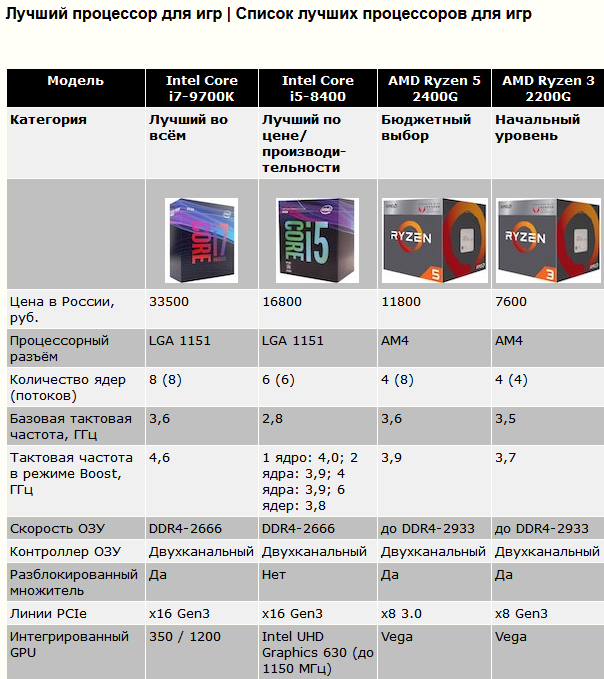 6 / 5.2 6 / 5.2 |
95W | 20MB |
| RKL-S Core i7-11700K (KF) | $399 (K) — $374 (KF) | 8 / 16 | 3.6 / 5.0 | 125W | 16MB |
| Core i7-10700K / F | $374 — $349 | 8 / 16 | 3.8 / 5.1 | 125W | 16MB |
| Ryzen 7 3800XT | $399 | 8 / 16 | 3.9 / 4.7 | 105W | 32MB (2×16) |
| Ryzen 5 5600X | $299 | 6 / 12 | 3.7 / 4.6 | 65W | 32MB (1×32) |
| RKL-S Core i5-11600K (KF) | $262 (K) — $237(KF) | 6 / 12 | 3. 9 / 4.9 9 / 4.9 |
125W | 12MB |
| Core i5-10600K / F | $262 — $237 | 6 / 12 | 4.1 / 4.8 | 125W | 12MB |
| Ryzen 5 3600XT | $249 | 6 / 12 | 3.8 / 4.5 | 95W | 32MB (1×32) |
AMD obviously leans on its improved IPC rather than raw clock speeds, thus boosting its power efficiency and reducing heat generation. The Ryzen 5 5600X is the best example of that — despite only a slight reduction to the base frequency, the chip drops to a 65W TDP compared to its predecessor’s 95W.
What’s not as impressive? AMD has continued with the precedent it set with its Ryzen XT series: Bundled coolers no longer come with processors with a TDP higher than 65W. That means the Ryzen 5 5600X will be the only Ryzen 5000 chip that comes with a cooler in the box. AMD said it decided to skip bundled coolers in higher-TDP models largely because it believes most enthusiasts looking for high-performance CPUs use custom cooling anyway. AMD also still specs a 280mm (or greater) AIO liquid cooler for the Ryzen 9 and 7 CPUs, which significantly adds to the overall platform costs.
AMD said it decided to skip bundled coolers in higher-TDP models largely because it believes most enthusiasts looking for high-performance CPUs use custom cooling anyway. AMD also still specs a 280mm (or greater) AIO liquid cooler for the Ryzen 9 and 7 CPUs, which significantly adds to the overall platform costs.
AMD continues to only guarantee its boost frequencies on a single core, and all-core boosts will vary based on the cooling solution, power delivery, and motherboard BIOS. The Ryzen 5000 series CPUs still expose the same 20 lanes of PCIe 4.0 to the user (another four are dedicated to the chipset) and stick with DDR4-3200 memory. Memory overclocking capabilities have also improved vastly, particularly regarding fabric clocking that allows tuners to run the memory in optimized ‘coupled’ 1:1 mode. We’ve seen plenty of reports of reaching DDR4-4000 in coupled mode, and we’ve done it ourselves. However, as with all overclocking, your mileage may vary – we could only achieve a stable DDR4-4000 overclocked in coupled mode with one of our four samples (The 5950X). (For more about overclocking head to our How to Overclock a CPU article.)
(For more about overclocking head to our How to Overclock a CPU article.)
Ryzen 5000 Mobile
Before we jump to performance benchmarks for the desktop chips, AMD announced the ‘Cezanne’ Ryzen 5000 Mobile processors that bring the powerful Zen 3 architecture to the notebook market for the first time, opening the door for the company to finally have a larger presence in the highest-end gaming notebooks. That means that we’ll finally see AMD’s chips paired with the highest-end mobile GPUs when the new Ryzen 5000 Mobile processors come to market in February, which could shake up our Best Gaming Laptops rankings.
| Cores / Threads | Base / Boost | TDP | GPU CU / Boost | Cache | |
| Ryzen 9 5980HX | 8 / 16 | 3.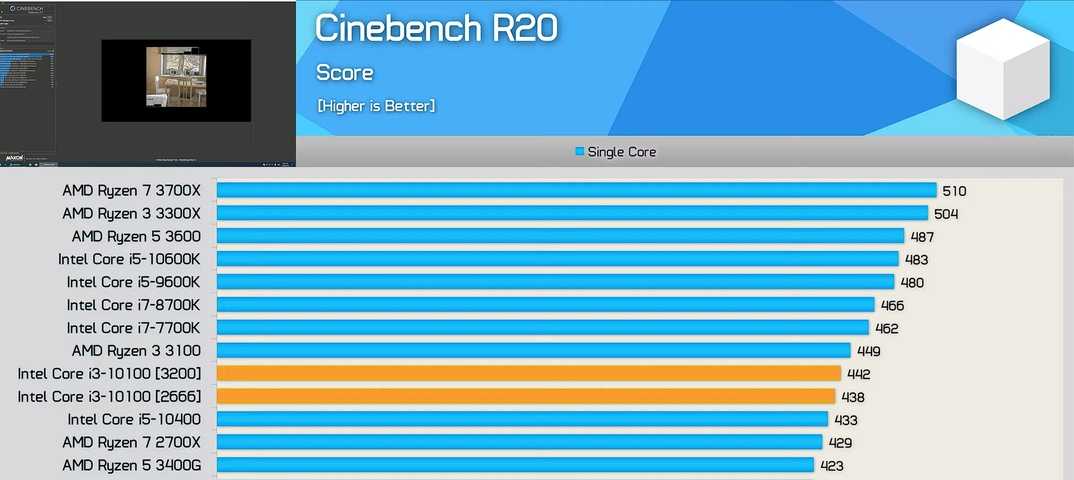 3 / 4.8 3 / 4.8 |
45W+ | 8 / 2.1 GHz | 20MB |
| Ryzen 9 5980HS | 8 / 16 | 3.0 / 4.8 | 35W | 8 / 2.1 GHz | 20MB |
| Ryzen 9 5900HX | 8 / 16 | 3.3 / 4.6 | 45W+ | 8 / 2.1 GHz | 20MB |
| Ryzen 9 5900HS | 8 / 16 | 3.0 / 4.6 | 35W | 8 / 2.1 GHz | 20MB |
| Ryzen 9 4900H | 8 / 16 | 3.3 / 4.3 | 45W | 8 / 1.75 GHz | 12MB |
| Ryzen 9 4900HS | 8 / 16 | 3.0 / 4.3 | 35W | 8 / 1.75 GHz | 12MB |
| Ryzen 7 5800H | 8 / 16 | 3. 2 / 4.4 2 / 4.4 |
45W | 8 / 2.0 GHz | 20MB |
| Ryzen 7 4800H | 8 / 16 | 2.9 / 4.2 | 45W | 7 / 1.6 GHz | 12MB |
| Ryzen 7 5800HS | 8 / 16 | 2.8 / 4.4 | 35W | 8 / 2.0 GHz | 20MB |
| Ryzen 7 4800HS | 8 / 16 | 2.9 / 4.2 | 35W | 7 / 1.6 GHz | 12MB |
| Ryzen 5 5600H | 6 / 12 | 3.3 / 4.2 | 45W | 7 / 1.8 GHz | 19MB |
| Ryzen 5 4600H | 6 / 12 | 3.0 / 4.0 | 45W | 6 / 1.5 GHz | 11MB |
| Ryzen 5 5600HS | 6 / 12 | 3.0 / 4.2 | 35W | 7 / 1.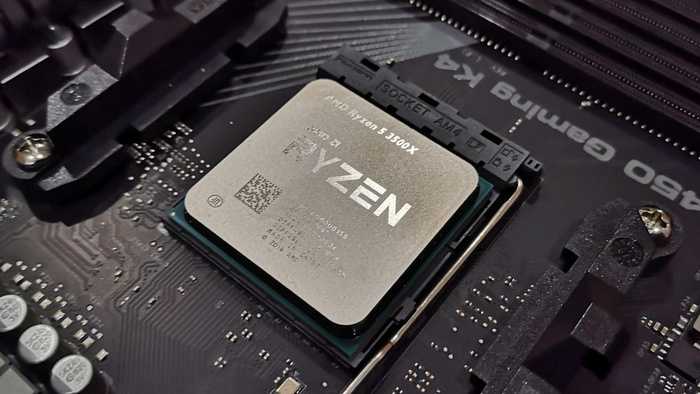 8 GHz 8 GHz |
19MB |
| Ryzen 5 4600HS | 6 / 12 | 3.0 / 4.0 | 35W | 6 / 1.5 GHz | 11MB |
AMD says the new chips set the new standard for battery life in x86 notebooks and remain the only 8-core x86 chips for ultrathin laptops. The 13 new processors span from low-power 15W chips up to two new overclockable 45W+ HX-series models designed to bring desktop PC-like gaming performance to notebooks. The Ryzen 5000 mobile processors all come with threading enabled, the 7nm Vega graphics engine with higher graphics boost clocks than the prior-gen models, support CPPC (Collaborative Power and Performance Control) technology, which we’ll dive into shortly, and have higher CPU boost clocks than the previous-gen.
As before, the H-series models are designed for notebooks that will use discrete graphics. The two 45W+ eight-core HX models carve out a new high-performance niche by bringing CPU, memory, and fabric overclocking to AMD-powered notebooks for the first time, but overclocking headroom will largely be dictated by the thermal and power characteristics of each notebook. Naturally, bulkier notebooks with more robust cooling and power delivery will unlock better overclockability.
Naturally, bulkier notebooks with more robust cooling and power delivery will unlock better overclockability.
The two H models slot in with eight- and six-core variants and a 45W TDP rating, with the former having eight CUs that boost to 2.0 GHz, while the latter has seven CUs that stretch up to 1.8 GHz.
AMD also expanded its HS series with four chips with boost clocks that reach up to 4.8 GHz within the 35W TDP envelope. AMD segments the HS stack with three eight-core models with varying base and boost clocks, but these models have lower base clocks than the H-series models to accommodate the 35W TDP envelope. AMD also has a lone six-core twelve-thread model to round out the bottom of the H-Series stack. AMD also segments the HS models with either seven or eight Vega CUs, with peak boost clocks weighing in at 2.1 GHz.
| Cores / Threads | Base / Boost | GPU CU / Boost | Cache | |
| Ryzen 7 5800U — Zen 3 | 8 / 16 | 1. 9 / 4.4 9 / 4.4 |
8 / 2.0 GHz | 20MB |
| Ryzen 7 4800U | 8 / 16 | 1.8 / 4.1 | 8 / 1.75 GHz | 8MB |
| Ryzen 7 5700U — Zen 2 | 8 / 16 | 1.8 / 4.3 | 8 / 1.9 GHz | 12MB |
| Ryzen 7 4700U | 8 / 16 | 2.0 / 4.1 | 7 / 1.6 GHz | 8MB |
| Ryzen 5 5600U — Zen 3 | 6 / 12 | 2.3 / 4.2 | 7 / 1.8 GHz | 19MB |
| Ryzen 5 4600U | 6 / 12 | 2.1 / 4.0 | 6 / 1.5 GHz | 8MB |
| Ryzen 5 5500U — Zen 2 | 6 / 12 | 2.1 / 4.0 | 7 / 1.8 GHz | 11MB |
| Ryzen 5 4500U | 6 / 6 | 2.3 / 4.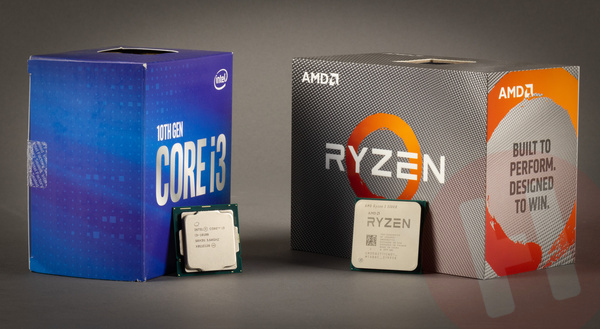 0 0 |
6 / 1.5 GHz | 8MB |
| Ryzen 3 5400U — Zen 3 | 4 / 8 | 2.6 / 4.0 | 6 / 1.6 GHz | 10MB |
| Ryzen 3 4300U | 4 / 4 | 2.7 / 3.7 | 5 / 1.4 GHz | 4MB |
| Ryzen 3 5300U — Zen 2 | 4 / 8 | 2.6 / 3.8 | 6 / 1.5 GHz | 6MB |
The 15W U-Series models slot in for thin and light devices and will often lean on the integrated graphics units. AMD recently chose to unify its Ryzen Mobile branding under the same Ryzen 5000 umbrella as its desktop chips to clear up the confusion with the Ryzen 4000 series processors that came with an older architecture than desktop Ryzen 3000 models.
However, AMD also sprinkled in three Zen 2 ‘Lucienne’ chips in the Ryzen 5000 Mobile stack, muddying the waters. AMD says this approach meets specific pricing criteria and customer (OEM) demand on the lower end of its product stack. These Zen 2-powered Ryzen 3, 5, and 7 models slot into the lowest-end 15W U-series category.
AMD says this approach meets specific pricing criteria and customer (OEM) demand on the lower end of its product stack. These Zen 2-powered Ryzen 3, 5, and 7 models slot into the lowest-end 15W U-series category.
The Zen 2 variants come with the same design as their predecessors, but again, the targeted enhancements to the SoC (all of the same modifications listed below apply) and increased clock rates result in higher performance.
The Ryzen 7, 5, and 3 families also include one Zen 3 model apiece with either eight cores and 16 threads, or four cores and eight threads. Unlike the previous-gen Ryzen 4000 chips, all of the 15W models come threading enabled.
We’re primarily focused on the desktop PC chips for this article, but you can head to our AMD Announces Ryzen 5000 Mobile ‘Cezanne’ Processors, Zen 3 and Overclocking Comes to Laptops article for an overview of the mobile chips, including Ryzen 5000 Mobile benchmarks. We also have our AMD Ryzen 5000 Mobile ‘Cezanne’ SoC Deep Dive: Zen 3 Powers Into Notebooks article that has all the deep-dive architectural details.
AMD Ryzen 5000 Zen 3 Performance Benchmarks and Comparisons
AMD Ryzen 9 5950X and Ryzen 9 5900X Gaming and Application CPU Benchmarks
Here you can see the geometric mean of our gaming tests at 1080p and 1440p, with each resolution split into its own chart.
We’re accustomed to Intel dominate the gaming charts, so these cumulative measurements are quite shocking: AMD’s stock Ryzen 9 5950X and Ryzen 9 5900X lead Intel’s heavily-overclocked Core i9-10900K and Core i7-10700K in our 1080p gaming suite in average frame rates (Intel’s overclocked chips hold a slight lead in 99th-percentile measurements).
Image 1 of 2
(Image credit: Tom’s Hardware)
(Image credit: Tom’s Hardware)To put things in perspective, take a glance at the delta in 1080p gaming between the previous-gen Ryzen 9 3900XT, which basically runs overclocked right out of the box, compared to the Ryzen 9 5950X. That’s a huge generational leap. AMD has made big gains in a single generation.
Flipping over to the 1440p chart improves things a bit for Intel, but only slightly — the overclocked Core i9-10900K returns to its normal spot at the top of the chart, and it still has better 99th percentile frame rates after overclocking. However, AMD still beats Intel in both average and 99th-percentiles at stock settings, cementing the company’s lead.
Image 1 of 14
(Image credit: Tom’s Hardware)
(Image credit: Tom’s Hardware) (Image credit: Tom’s Hardware) (Image credit: Tom’s Hardware) (Image credit: Tom’s Hardware) (Image credit: Tom’s Hardware) (Image credit: Tom’s Hardware) (Image credit: Tom’s Hardware) (Image credit: Tom’s Hardware) (Image credit: Tom’s Hardware) (Image credit: Tom’s Hardware) (Image credit: Tom’s Hardware) (Image credit: Tom’s Hardware) (Image credit: Tom’s Hardware)Here are the individual results of our Ryzen 9 5950X and Ryzen 9 5900X real-world game benchmarks at both 1080p and 1440p resolutions. For further analysis of each title, and to see our synthetic gaming benchmarks, head to our review.
For further analysis of each title, and to see our synthetic gaming benchmarks, head to our review.
Image 1 of 2
(Image credit: Tom’s Hardware)
(Image credit: Tom’s Hardware)These measurements include the geometric mean of both the most important lightly- and heavily-threaded tests in our application suite, which gives us a broad sense of overall performance. We’re quite accustomed to AMD’s chips leading in the multi-threaded rankings while trailing, sometimes by a big amount, in the single-threaded performance ranking. Zen 3 changes that entirely and easily leads both rankings. This is the underpinnings of the solid performance we see in nearly every workload we throw at the Ryzen 5000 series CPUs.
Image 1 of 29
(Image credit: Tom’s Hardware)
(Image credit: Tom’s Hardware) (Image credit: Tom’s Hardware) (Image credit: Tom’s Hardware) (Image credit: Tom’s Hardware) (Image credit: Tom’s Hardware) (Image credit: Tom’s Hardware) (Image credit: Tom’s Hardware) (Image credit: Tom’s Hardware) (Image credit: Tom’s Hardware) (Image credit: Tom’s Hardware) (Image credit: Tom’s Hardware) (Image credit: Tom’s Hardware) (Image credit: Tom’s Hardware) (Image credit: Tom’s Hardware) (Image credit: Tom’s Hardware) (Image credit: Tom’s Hardware) (Image credit: Tom’s Hardware) (Image credit: Tom’s Hardware) (Image credit: Tom’s Hardware) (Image credit: Tom’s Hardware) (Image credit: Tom’s Hardware) (Image credit: Tom’s Hardware) (Image credit: Tom’s Hardware) (Image credit: Tom’s Hardware) (Image credit: Tom’s Hardware) (Image credit: Tom’s Hardware) (Image credit: Tom’s Hardware) (Image credit: Tom’s Hardware)Here’s a rollup of a selection of our mainstream application tests, but we have far more tests in our full review.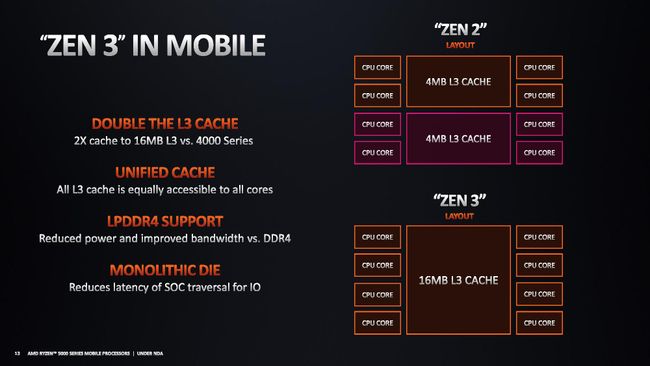 We also have testing in the Adobe suite, SPECWorkstation3, and SpecViewPerf 2020 for those interested in professional applications.
We also have testing in the Adobe suite, SPECWorkstation3, and SpecViewPerf 2020 for those interested in professional applications.
Again, head to our Ryzen 9 5950X and 5900X review for more benchmarks and in-depth analysis, including power testing, thermals, overclocking, and efficiency measurements.
AMD Ryzen 7 5800X and Ryzen 5 5600X Gaming and Application Performance Benchmarks
Here you can see the geometric mean of our gaming tests at 1080p and 1440p, with each resolution in its own chart. Again, this gives us a broad sense of overall gaming performance for the Ryzen 5 5600X and Ryzen 7 5800X.
We tested the Ryzen 5 5600X with both the bundled Wraith Stealth cooler (marked as HSF in the charts above) and the Corsair h215i 280mm liquid cooler (AIO) to measure the difference in gaming. Overall, the Wraith Spire cooler provides the same level of gaming performance as the AIO cooler.
Image 1 of 4
(Image credit: Tom’s Hardware)
(Image credit: Tom’s Hardware) (Image credit: Tom’s Hardware) (Image credit: Tom’s Hardware)In terms of value, the $300 Ryzen 5 5600X wrecks Intel’s halo $490 Core i9-10900K in our 1080p gaming suite. The 5600X even takes away the overall performance crown, too. The 10900K is a bit more impressive in our 1440p suite, but not by much — it trails the 5600X at stock settings, and overclocking the 10900K only yields a scant 1 fps advantage. For all intents and purposes, the processors have effectively tied after overclocking.
The 5600X even takes away the overall performance crown, too. The 10900K is a bit more impressive in our 1440p suite, but not by much — it trails the 5600X at stock settings, and overclocking the 10900K only yields a scant 1 fps advantage. For all intents and purposes, the processors have effectively tied after overclocking.
The 5600X is even more dominating over the chips in its price range. At stock, the Ryzen 5 5600X beats the Core i5-10600K in both 1080p and 1440p gaming by ~25% and 13%, respectively. Overclocking the Core i5-10600K to 5.0 GHz doesn’t help much — the Intel chip still trails the stock 5600X by 7% at 1080p and effectively ties the 5600X at 1440p. Naturally, overclocking the Ryzen 5 5600X gives it the lead.
The $300 Ryzen 5 5600X is $35 more expensive than the Core i5-10600K, though, so we turn to Intel’s higher-end $375 Core i7-10700K to see how it stacks up. If gaming is your primary goal, paying $75 more for the 10700K than the 5600X is a waste of money.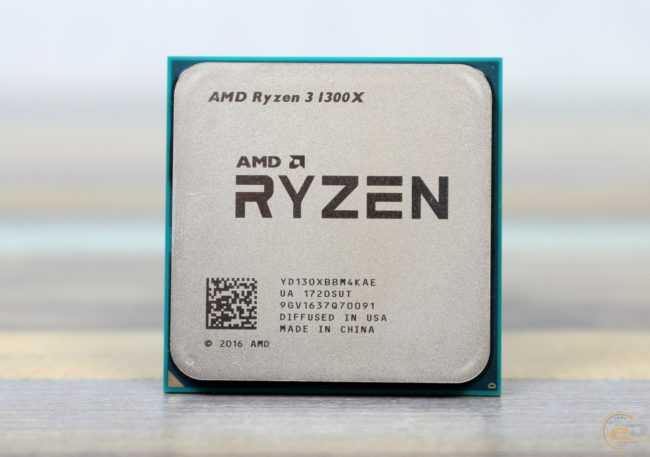 The stock 5600X beats the10700K by 15% at 1080p, and ~8% at 1440p. Overclocking the 10700K doesn’t help, either – the stock 5600X ties the overclocked 10700K at 1080p and trails by a mere 3 fps at 1440p. Overclocking the Ryzen 5 5600X gives it the lead over the pricey 10700K.
The stock 5600X beats the10700K by 15% at 1080p, and ~8% at 1440p. Overclocking the 10700K doesn’t help, either – the stock 5600X ties the overclocked 10700K at 1080p and trails by a mere 3 fps at 1440p. Overclocking the Ryzen 5 5600X gives it the lead over the pricey 10700K.
Finally, if you step up a tier to the $450 Ryzen 7 5800X, you won’t get much extra over the 5600X, at least as far as gaming is concerned. The Ryzen 5 5600X matches the overclocked Ryzen 7 5800X step-for-step at both stock and overclocked settings in both resolutions, making the Ryzen 5 5600X the new mainstream gaming champ.
Image 1 of 14
(Image credit: Tom’s Hardware)
(Image credit: Tom’s Hardware) (Image credit: Tom’s Hardware) (Image credit: Tom’s Hardware) (Image credit: Tom’s Hardware) (Image credit: Tom’s Hardware) (Image credit: Tom’s Hardware) (Image credit: Tom’s Hardware) (Image credit: Tom’s Hardware) (Image credit: Tom’s Hardware) (Image credit: Tom’s Hardware) (Image credit: Tom’s Hardware) (Image credit: Tom’s Hardware) (Image credit: Tom’s Hardware)Here you can see the game-by-game breakdown of the benchmarks compared to Intel’s Comet Lake chips, but you can head to our Ryzen 5 5600X review for a more detailed analysis.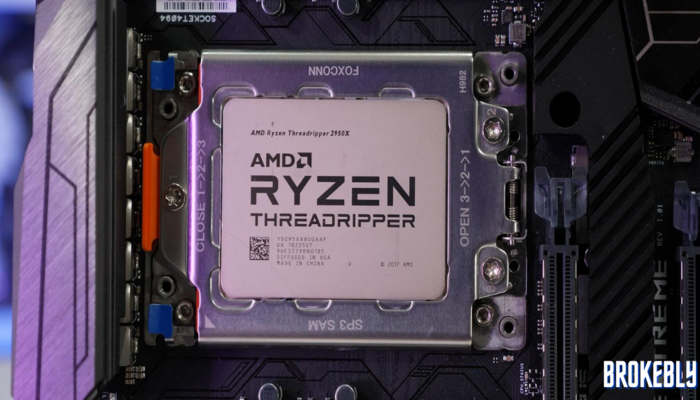 You can’t go wrong with either the Ryzen 7 5800X or Ryzen 5 5600X for gaming, but if you don’t need a lot of threaded heft for frequent heavy workloads, the Ryzen 5 5600X is the best value.
You can’t go wrong with either the Ryzen 7 5800X or Ryzen 5 5600X for gaming, but if you don’t need a lot of threaded heft for frequent heavy workloads, the Ryzen 5 5600X is the best value.
Image 1 of 2
(Image credit: Tom’s Hardware)
(Image credit: Tom’s Hardware)These geometric means of the lightly- and heavily-threaded tests in our application suite tell quite the story. Again, AMD now dominates on both sides of the ball.
As we saw in our gaming tests, there is little to no difference between single-threaded performance with the bundled Wraith Spire and Corsair h215i coolers, but we see a bigger difference in heavily-threaded applications. We recorded a 4% boost to performance with the h215i in our cumulative measure, but it’s important to note that this varies on the workload. With that in mind, be aware that we’ve charted performance with our h215i cooler throughout the rest of the application testing.
However, regardless of the cooler, one thing remains true — the Ryzen 5 5600X easily beats the 10600K in threaded applications and even challenges the 10700K that comes with two more cores and a $75 premium.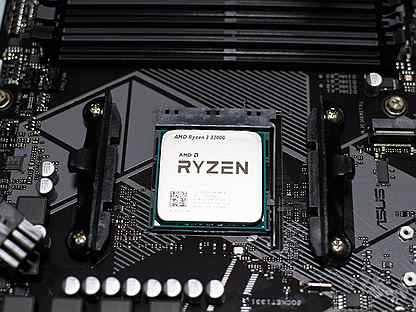 That makes the 5600X a solid bang-for-your-buck for heavy applications. If you need more performance and want to step up a tier, the Ryzen 7 5800X provides a solid boost through its additional two cores — but you have to pay $150 more for the privilege.
That makes the 5600X a solid bang-for-your-buck for heavy applications. If you need more performance and want to step up a tier, the Ryzen 7 5800X provides a solid boost through its additional two cores — but you have to pay $150 more for the privilege.
Moving over to the single-threaded performance rankings really highlights the 5600X’s strengths — the stock Ryzen 5 5600X beats the full roster of Intel chips, including the Core i9-10900K, in our ranking — and that’s even after we overclock the Intel chips to the limits.
The Ryzen 5 5800X is a nice step up from the 5600X for lightly threaded work, but overclocking both chips yields a small 1.5% advantage for the Ryzen 7 5800X. That isn’t a difference you’ll feel in any lightly threaded app, making the Ryzen 5 5600X the price-to-performance champ for lightly-threaded work, too. You certainly won’t be left wanting if you decide to step up to the Ryzen 7 5800X, either.
Image 1 of 48
(Image credit: Tom’s Hardware)
(Image credit: Tom’s Hardware) (Image credit: Tom’s Hardware) (Image credit: Tom’s Hardware) (Image credit: Tom’s Hardware) (Image credit: Tom’s Hardware) (Image credit: Tom’s Hardware) (Image credit: Tom’s Hardware) (Image credit: Tom’s Hardware) (Image credit: Tom’s Hardware) (Image credit: Tom’s Hardware) (Image credit: Tom’s Hardware) (Image credit: Tom’s Hardware) (Image credit: Tom’s Hardware) (Image credit: Tom’s Hardware) (Image credit: Tom’s Hardware) (Image credit: Tom’s Hardware) (Image credit: Tom’s Hardware) (Image credit: Tom’s Hardware) (Image credit: Tom’s Hardware) (Image credit: Tom’s Hardware) (Image credit: Tom’s Hardware) (Image credit: Tom’s Hardware) (Image credit: Tom’s Hardware) (Image credit: Tom’s Hardware) (Image credit: Tom’s Hardware) (Image credit: Tom’s Hardware) (Image credit: Tom’s Hardware) (Image credit: Tom’s Hardware) (Image credit: Tom’s Hardware) (Image credit: Tom’s Hardware) (Image credit: Tom’s Hardware) (Image credit: Tom’s Hardware) (Image credit: Tom’s Hardware) (Image credit: Tom’s Hardware) (Image credit: Tom’s Hardware) (Image credit: Tom’s Hardware) (Image credit: Tom’s Hardware) (Image credit: Tom’s Hardware) (Image credit: Tom’s Hardware) (Image credit: Tom’s Hardware) (Image credit: Tom’s Hardware) (Image credit: Tom’s Hardware) (Image credit: Tom’s Hardware) (Image credit: Tom’s Hardware) (Image credit: Tom’s Hardware) (Image credit: Tom’s Hardware) (Image credit: Tom’s Hardware)Here you can a selection of some of the most important application benchmarks, like rendering, encoding, and web browsing, but we have more analysis and far more benchmarks, including power, efficiency, thermals, and overclocking testing, in our Ryzen 5 5600X review. Stay tuned for our full Ryzen 7 5800X review, too.
Stay tuned for our full Ryzen 7 5800X review, too.
AMD Zen 3 Ryzen 5000 Series Motherboards
AMD didn’t launch a new chipset with the Ryzen 5000 series; instead, the CPUs drop right into existing 500-series chipsets, like X570, B550 and A520 models. These boards require an AGESA 1.0.8.0 (or newer) BIOS to boot a Zen 3 processor, but AMD has been shipping silently shipping supporting BIOSes since summer. As a result, every 500-series motherboard on the market should have a downloadable BIOS available.
While the early BIOS revisions ensure the processors will work on the most basic level, you’ll have to update to an AGESA 1.1.0.0 (or better) BIOS for the best performance. These revisions are available for all 500-series motherboards. Many motherboard vendors are also distributing newer BIOS revisions with enhanced functionality.
(Image credit: AMD)
AMD originally announced it wouldn’t provide Zen 3 support for 400-series motherboards, but due to concerns from the enthusiast community, the company reversed course.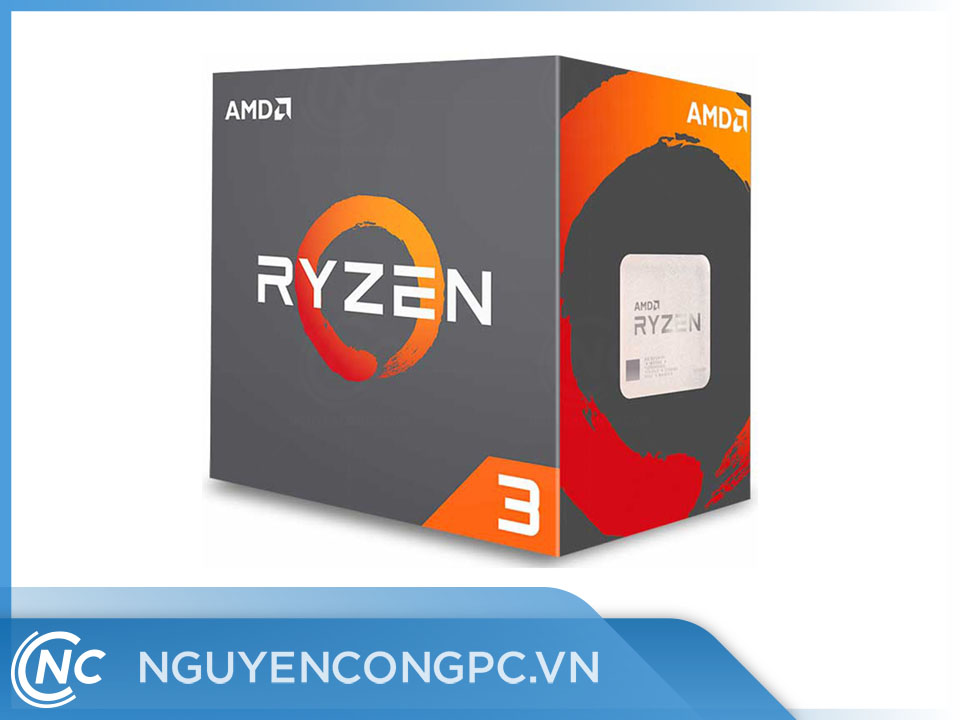 Now AMD will also provide support for 400-series chipsets, but the BIOS updates are under development, and the first beta BIOSes will be officially available in January of 2021. That hasn’t stopped several vendors from offering the leading versions of the new BIOS, which you can already find in the wild.
Now AMD will also provide support for 400-series chipsets, but the BIOS updates are under development, and the first beta BIOSes will be officially available in January of 2021. That hasn’t stopped several vendors from offering the leading versions of the new BIOS, which you can already find in the wild.
However, a series of important restrictions apply to 400-series upgraders, which you can read more about here. Note: You lose support for PCIe 4.0 on 400-series boards, but most gamers will not, and should not, care — PCIe 4.0 makes no meaningful performance difference in gaming.
AMD Ryzen 5000 Series Pricing and Availability
The Ryzen 5000 series are available now, but the chips have been subject to severe shortages, leading to price gouing. Here’s some advice on how to score a chip. Fortunately, prices have been on the rebound for the Ryzen 7 5800X and Ryzen 5 5600X, and supply continues to improve.
We also expect to eventually hear about Threadripper 5000 products with the Zen 3 architecture, but we aren’t sure when AMD will bring the new design to its ultra-powerful high end desktop (HEDT) lineup.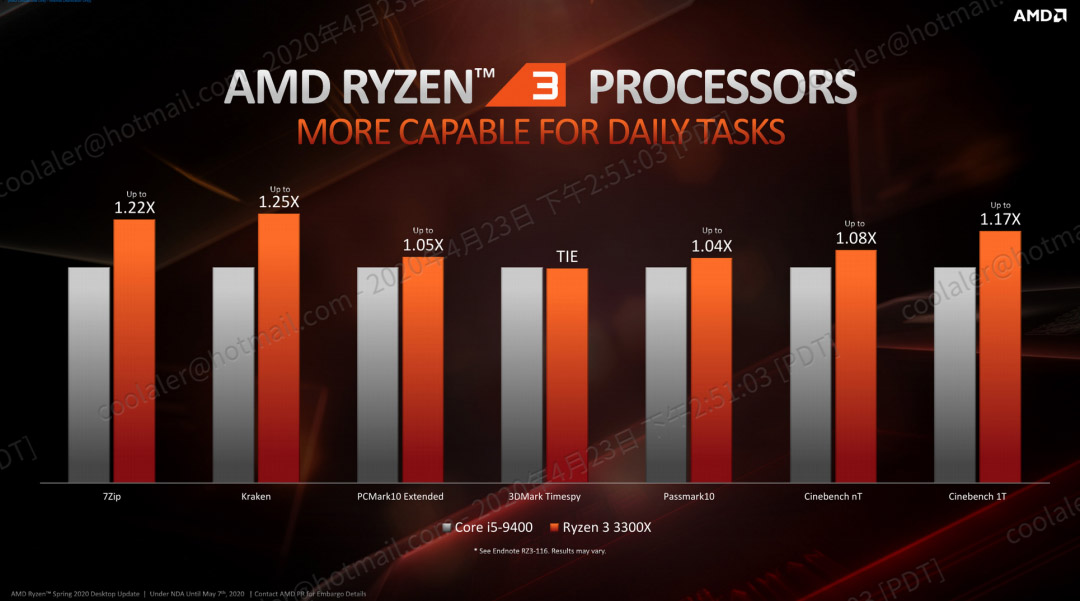 AMD will also update its APUs with the Zen 3 architecture, but we aren’t sure of the timeline for that advance.
AMD will also update its APUs with the Zen 3 architecture, but we aren’t sure of the timeline for that advance.
The Zen 3 Ryzen 5000 processors do come with a recommended $50 markup across the product stack. AMD’s suggested pricing often has little to do with what we see at retail; you can expect the CPUs to eventually retail for far lower pricing, particularly as supply improves.
Image 1 of 3
(Image credit: AMD)
(Image credit: AMD) (Image credit: AMD)AMD’s pricing increase comes as it positions itself as a premium chip supplier, as opposed to its long history as the value alternative. The continued absence of bundled coolers also serves to drive up the platform cost — in most cases, you’ll need to invest at least $40 to find a cooler that’s as capable as AMD’s stock coolers. The company specs a 280mm AIO cooler (or equivalent air cooler) for the processors, so plan accordingly.
Zen 3 has lived up to its billing, and it looks like AMD’s only constraint will be production capacity at TSMC.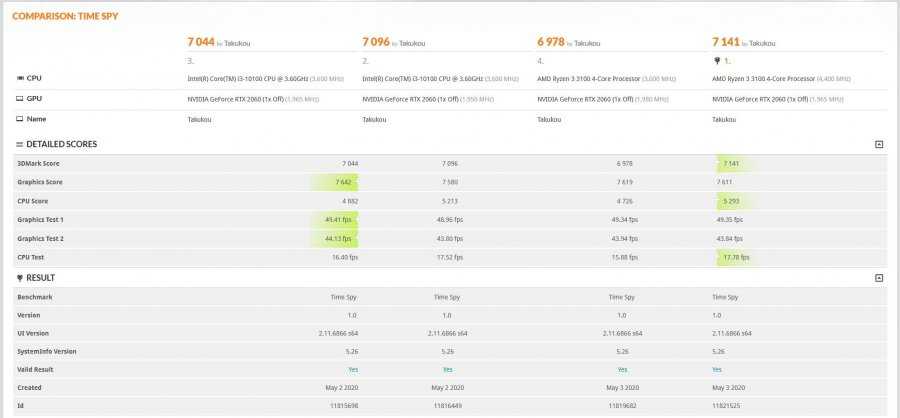 AMD is selling every Ryzen 5000 series chip it punches out, at least until Rocket Lake arrives – and we still don’t know if Intel’s new 14nm design can keep pace with AMD’s 7nm CPUs.
AMD is selling every Ryzen 5000 series chip it punches out, at least until Rocket Lake arrives – and we still don’t know if Intel’s new 14nm design can keep pace with AMD’s 7nm CPUs.
Luckily, AMD’s ecosystem of 500- and 400-series motherboard partners have plenty of relatively affordable options, so there aren’t any problems with motherboard supply.
AMD Ryzen 5000 Smart Memory Access and Radeon RX 6000 ‘Big Navi’ GPUs
AMD’s Radeon RX 6000 GPUs will now operate in tandem with AMD’s Ryzen 5000 processors (with the caveat that you need a 500-series motherboard) through a new Smart Access Memory feature that will boost gaming performance by enhancing data transfer between the CPU and GPU.
AMD isn’t sharing the new tech’s full details, but we do know the broad strokes. By enabling the Smart Memory Access feature in the Radeon RX6000’s vBIOS and the motherboard BIOS, the CPU and GPU gain unprecedented full access to each other’s memory, which maximizes data transfer performance between the CPU and the GPU’s on-card 16GB of VRAM.
Image 1 of 2
(Image credit: AMD)
(Image credit: AMD)As a basic explainer, AMD says that the CPU and GPU are usually constrained to a 256MB ‘aperture’ for data transfers. That limits game developers and requires frequent trips between the CPU and main memory if the data set exceeds that size, causing inefficiencies and capping performance. Smart Access Memory removes that limitation, thus boosting performance due to faster data transfer speeds between the CPU and GPU. This happens by leveraging the Resizable PCIe Bar feature, which is part of the PCI specification, and the same gains can be had with Nvidia GPUs, too, once the company enables it. Nvidia hasn’t given a firm timeline yet but says it has a similar feature working in its labs.
For now, you’ll need three ingredients to unlock the Smart Memory Access feature with AMD’s GPUs: A Radeon RX 6000 GPU (all models support it), a Ryzen 5000 processor, and a standard 500-series motherboard. We asked AMD if the tech will come to its previous-gen CPUs and motherboards, but the company merely tells us that it would provide updates at a future time if there is more enablement.
Should I Buy a Ryzen 5000 Series Zen 3 CPU?
Should you buy a Zen Ryzen 5000 processor? The Short answer: Yes.
The Ryzen 5000 series outperforms all of Intel’s competing Comet Lake chips and offers a better price-to-performance ratio. Until Intel reduces its pricing, we can’t recommend any Comet Lake processor that competes in the same price ranges as AMD’s Ryzen 5000 series processors. The only trick is finding AMD’s premium silicon at retail — intense demand has led to severe shortages. If you’re in need of a processor now, or if the entry-level pricing of $300 is too high for your liking, look to AMD’s Ryzen 3000 series as the value alternatives.
AMD Zen 3 Ryzen 5000 Series Microarchitecture
AMD shared the full details about the Zen 3 microarchitecture. AMD embarked on what it describes as a ground-up redesign of the Zen 2 microarchitecture to deliver the gains we would normally see with an entirely new design. In fact, the company’s ~19% increase in IPC represents its largest single-generation increase in the ‘post-Zen’ era (Zen+, Zen 2).![]() We certainly haven’t seen an increase of this magnitude for desktop CPUs from Team Blue in the recent past, either — the initial Skylake architecture achieved a similar boost, but everything since has been nearly static.
We certainly haven’t seen an increase of this magnitude for desktop CPUs from Team Blue in the recent past, either — the initial Skylake architecture achieved a similar boost, but everything since has been nearly static.
AMD calculates its 19% IPC number from the geometric mean of 25 workloads measured with two eight-core processors locked at 4.0 GHz. The impressive IPC gains required a ‘front-to-back’ series of modifications to the design, including (but not limited to) the cache subsystem, front end, branch predictor, execution engine, and load/store elements, all with a focus on boosting single-threaded performance while wringing out better instruction level parallelism (ILP). The result is improved performance across the board in both single- and multi-threaded integer and floating point workloads. However, the 142W power limit imposed by the AM4 socket does restrict the scope of performance gains in heavily-threaded workloads, though there are some advances there, too.
Image 1 of 3
(Image credit: AMD)
(Image credit: AMD) (Image credit: AMD)AMD says it uses the same enhanced version of TSMC’s 7nm process node that it used for the Ryzen XT series, but still hasn’t provided specifics. AMD’s ‘special recipe’ for 7nm is largely kept confidential, but the firm specified that it doesn’t use TSMC’s 7nm+ (an EUV node). That means that AMD uses the standard N7 from Zen 2 with improved design rules, or that the CPUs use the N7P node.
AMD’s ‘special recipe’ for 7nm is largely kept confidential, but the firm specified that it doesn’t use TSMC’s 7nm+ (an EUV node). That means that AMD uses the standard N7 from Zen 2 with improved design rules, or that the CPUs use the N7P node.
AMD’s end goal is to have undisputed best-in-class performance across the full spectrum of applications, and gaming performance was a particular focus, which brings us to the changed cache hierarchy.
(Image credit: Tom’s Hardware)
As with the Zen 2 processors, Zen 3 uses the same 12nm I/O die (IOD) paired with either one or two chiplets in an MCM (Multi-Chip Module) arrangement. In the image above, we can see the large I/O die and the two smaller eight-core chiplets.
AMD chose to stick with this basic design for its Zen 3 Ryzen 5000 processors. And just like we see with the previous-gen Zen 2 CPUs, processors with six or eight cores come with one chiplet, while CPUs with 12 or 16 cores come with two chiplets.
(Image credit: AMD)
While the overall package design is the same three-chiplet design, AMD made drastic changes to the internals of the two eight-core chiplets.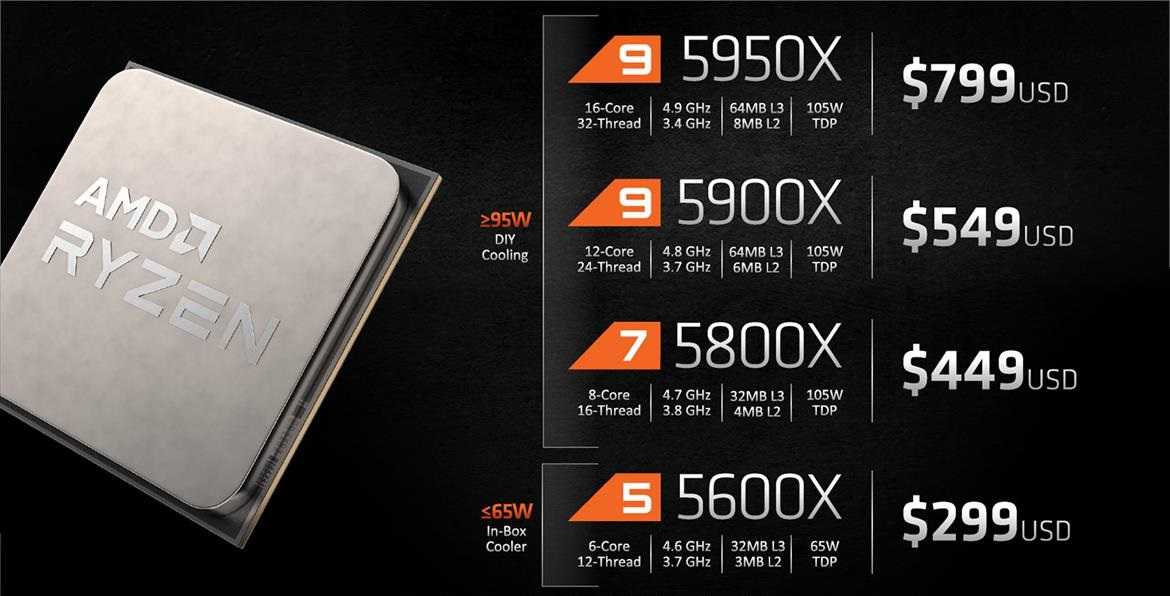 In the Zen 2 architecture (left), each Zen compute chiplet (CCD) contained two four-core clusters (CCXes) with access to an isolated 16MB slice of L3 cache. So, while the entire chiplet contained 32MB of cache, not all cores had access to all of the cache in the chiplet.
In the Zen 2 architecture (left), each Zen compute chiplet (CCD) contained two four-core clusters (CCXes) with access to an isolated 16MB slice of L3 cache. So, while the entire chiplet contained 32MB of cache, not all cores had access to all of the cache in the chiplet.
To access an adjacent slice of L3 cache, a core had to communicate with the other quad-core cluster by issuing a request that traversed the Infinity Fabric to the I/O die. The I/O die then routed the request to the second quad-core cluster, even though it was contained within the same chiplet. To fulfill the request, the data had to travel back over the fabric to the I/O die, and then back into the quad-core cluster that issued the request.
On the right side of the slide, we can see that the chiplet now contains one large unified 32MB slice of L3 cache, and all eight cores within the chiplet have full access to the shared cache. This improves not only core-to-cache latency, but also core-to-core latency within the chiplet.
While all eight cores can access the L3 cache within a single compute chiplet, in a dual-chiplet Zen 3 chip, there will be times that the cores will have to communicate with the other chiplet and its L3 cache. In those cases, the compute chiplet’s requests will still have to traverse the Infinity Fabric via signals routed through the I/O die, which incurs latency.
Still, because an entire layer of external communication between the two four-core clusters inside each chiplet has been removed, the Infinity Fabric will naturally have far less traffic. This results in less contention on the fabric, thus simplifying scheduling and routing, and it could also increase the amount of available bandwidth for this type of traffic. All of these factors will result in faster transfers (i.e., lower latency) communication between the two eight-core chiplets, and it possibly removes some of the overhead on the I/O die, too. We imagine there could also be other advantages, particularly for main memory latency, but we’ll wait for more details.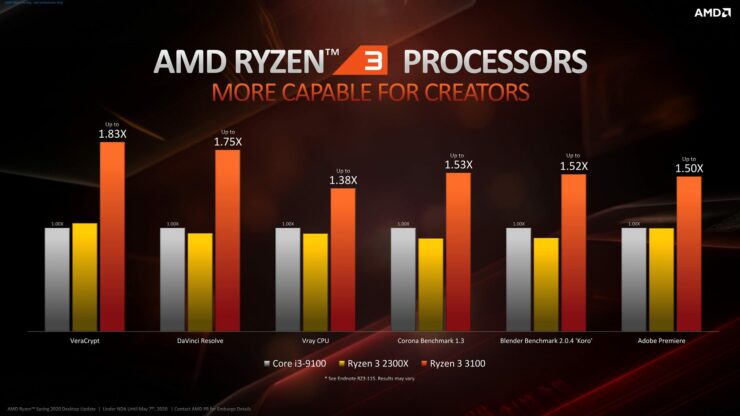 We do know that the default fabric speeds haven’t changed, though.
We do know that the default fabric speeds haven’t changed, though.
All of this is important because games rely heavily on the memory subsystem, both on-die cache and main memory (DDR4). A larger pool of cache resources keeps more data closer to the cores, thus requiring fewer high-latency accesses to the main memory. Additionally, lower cache latency can reduce the amount of time a core communicates with the L3 cache. This new design will tremendously benefit latency-sensitive applications, like games — particularly if they have a dominant thread that accesses cache heavily (which is common).
Naturally, power efficiency will improve as a function of reduced traffic on the Infinity Fabric, but that’s probably a small fraction of the performance-per-watt gains AMD has extracted from the architecture. Increased IPC and other SoC-level optimizations obviously factor in here. Still, the net result is that AMD managed to stay within the same TDP thermal and electrical ranges as the Ryzen 3000 series CPUs while delivering more performance.
Here’s AMD’s high-level bullet point list of improvements to the Zen 3 microarchitecture:
- Front-end enhancements:
- Major Design Goal: Faster fetching, especially for branchy and large-footprint code
- L1 branch target buffer (BTB) doubled to 1024 entries for better prediction latency
- Improved branch predictor bandwidth
- Faster recovery from misprediction
- «No Bubble» prediction to make back-to-back predictions faster and better handle branchy code
- Faster sequencing of op-cache fetches
- Finer granularity in switching of op-cache pipes
- Execution Engines:
- Major Design Goal: Reduce latency and enlarge to extract higher instruction-level parallelism (ILP)
- New dedicated branch and st-pickers for integer, now at 10 issues per cycle (+3 vs. Zen 2)
- Larger integer window at +32 vs Zen 2
- Reduced latency for select float and integer operations
- Floating point has increased bandwidth by +2 for a total of 6-wide dispatch and issue
- Floating point FMAC is now one cycle faster
- Load/Store:
- Major Design Goal: Larger structures and better prefetching — enhance execution engine bandwidth
- Overall higher bandwidth to feed larger/faster execution resources
- Higher load and store bandwidth vs.
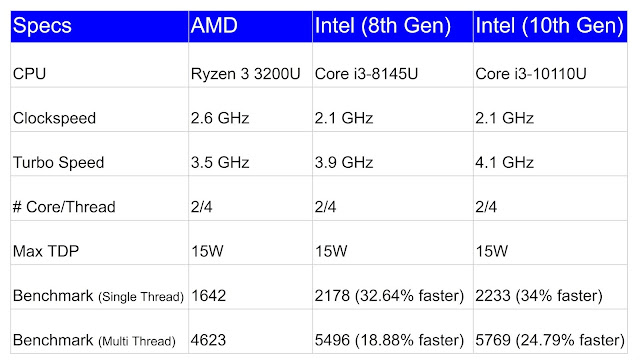 Zen 2 by +1
Zen 2 by +1 - More flexibility in load/store operations
- Improved memory dependence detection
- +4 table walkers in the Translation Look-aside Buffer (TLB)
Notably, AMD also added support for memory protection keys, added AVX2 support for VAES/VPCLMULQD instructions, and made a just-in-time update to the Zen 3 microarchitecture to provide in-silicon mitigation for the Spectre vulnerability.
Naturally, performance and power efficiency will improve as a function of architectural improvements. The reduced traffic on the Infinity Fabric also contributes (it always requires more energy to move data than to process it). Which brings us to IPC.
AMD Ryzen 5000 Zen 3 IPC (Instruction Per Cycle) Benchmarks
Image 1 of 7
(Image credit: AMD)
(Image credit: Tom’s Hardware) (Image credit: Tom’s Hardware) (Image credit: Tom’s Hardware) (Image credit: Tom’s Hardware) (Image credit: AMD) (Image credit: AMD)We tested a limited subset of single-threaded workloads to see the instruction per cycle (IPC) throughput improvements, locking all chips to a static 3. 8 GHz all-core clock with the memory dialed into the officially supported transfer rate.
8 GHz all-core clock with the memory dialed into the officially supported transfer rate.
AMD’s generational march forward is clear as we move from the left to the right of each chart. Overall, AMD’s gen-on-gen IPC increases are exceptional, and Zen 3’s IPC obviously beats Intel’s Comet Lake chips with ease. AMD has certainly delivered on its 19% improvement to IPC promise.
AMD Ryzen 5000 Zen 3 Power Consumption and Efficiency
AMD extracted more efficiency from the ‘same’ 7nm node, which is difficult and requires a combination of both better design methodologies and architectural improvements. As a result of these factors, AMD says it wrung out another 24% gen-on-gen efficiency improvement with the Ryzen 9 5900X over the Zen 2-powered Ryzen 9 3900XT. That’s impressive. Intel’s most recent Comet Lake CPUs had to increase power draw quite a bit to stay competitive, but still had far smaller performance improvements.
Image 1 of 9
(Image credit: Tom’s Hardware)
(Image credit: Tom’s Hardware) (Image credit: Tom’s Hardware) (Image credit: Tom’s Hardware) (Image credit: Tom’s Hardware) (Image credit: Tom’s Hardware) (Image credit: Tom’s Hardware) (Image credit: Tom’s Hardware) (Image credit: Tom’s Hardware)Image 1 of 4
(Image credit: Tom’s Hardware)
(Image credit: Tom’s Hardware) (Image credit: Tom’s Hardware) (Image credit: Tom’s Hardware)Here’s a roll-up of the power and efficiency testing for the Ryzen 5000 processors compared to the Intel Comet Lake series. Yes, you’ve guessed it: For deeper analysis, jump over to our reviews.
Yes, you’ve guessed it: For deeper analysis, jump over to our reviews.
Overall, these charts outline a massive power efficiency advantage for Ryzen 5000 chips. What does that mean to you? Faster, cooler, and quieter performance for your PC compared to AMD’s previous processors — and those models already posed a stiff challenge to Intel’s Comet Lake.
- MORE: Best CPUs for Gaming
- MORE: CPU Benchmark Hierarchy
- MORE: AMD vs Intel
- MORE: Zen 4 Ryzen 7000 All We Know
- MORE: How to Overclock a CPU
- MORE: How to check CPU Temperature
- MORE: All CPUs Content
Paul Alcorn is the Deputy Managing Editor for Tom’s Hardware US. He writes news and reviews on CPUs, storage and enterprise hardware.
Topics
CPUs
AMD
Release date, price, and everything else
AMD’s 2022 Product Premier included an assortment of new CPUs, desktop and mobile graphics cards, and some laptops APUs. In addition to the new Ryzen 6000 series APUs and its Ryzen 7 5800X3D V-Cache processor, AMD also announced the Ryzen 7000 series of CPUs. While there are still some details to be unveiled, most of the information is now official. Here’s everything you need to know about the AMD Ryzen 7000 series CPUs:
Navigate this article:
- AMD Ryzen 7000 Series CPUs: Specifications
- AMD Ryzen 7000 Series CPUs: AM5 Platform
- AMD Ryzen 7000 Series CPUs: Performance
- AMD Ryzen 7000 Series CPUs: Pricing & Release Date
- AMD Ryzen 7000 Series CPUs: Frequently Asked Questions
- AMD Ryzen 7000 Series CPUs: Final Thoughts
AMD Ryzen 7000 Series CPUs: Specifications
The official launch of the Ryzen 7000 series desktop CPUs was on August 29, 2022, so we know most of what there is to know.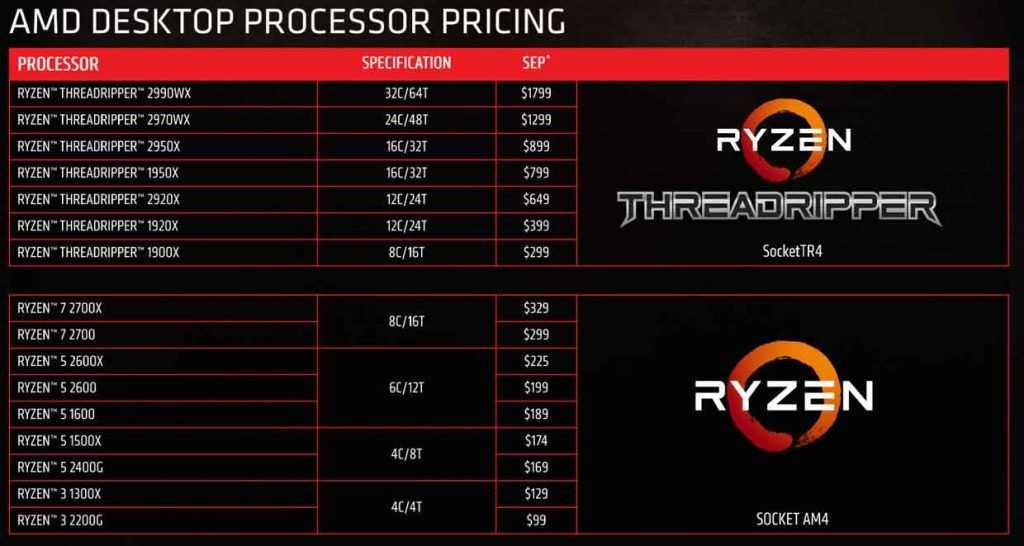 The new processors are based on AMD’s Zen 4 architecture. The new Zen 4-based chips joining the list of best AMD CPUs are built on TSMC’s 5nm process and they’ll be compatible with AMD’s new AM5 platform.
The new processors are based on AMD’s Zen 4 architecture. The new Zen 4-based chips joining the list of best AMD CPUs are built on TSMC’s 5nm process and they’ll be compatible with AMD’s new AM5 platform.
| Model | Cores/Threads | Boost / Base Frequency | Total Cache | PCIe | TDP |
|---|---|---|---|---|---|
| AMD Ryzen 9 7950X | 16C / 32T | Up to 5.7 / 4.5GHz | 80MB | Gen 5 | 170W |
| AMD Ryzen 9 7900X | 12C / 24T | Up to 5.6 / 4.7GHz | 76MB | Gen 5 | 170W |
| AMD Ryzen 7 7700X | 8C / 16T | Up to 5.4 / 4.5GHz | 40MB | Gen 5 | 105W |
| AMD Ryzen 5 7600X | 6C / 12T | Up to 5.3 / 4.7GHz | 38MB | Gen 5 | 195W |
Along with the above specs, Ryzen 7000 comes with support for DDR5, and there’s no DDR4 support. AMD said that DDR4 has seen its day, DDR5 is the future, and prices for the memory technology are starting to come down.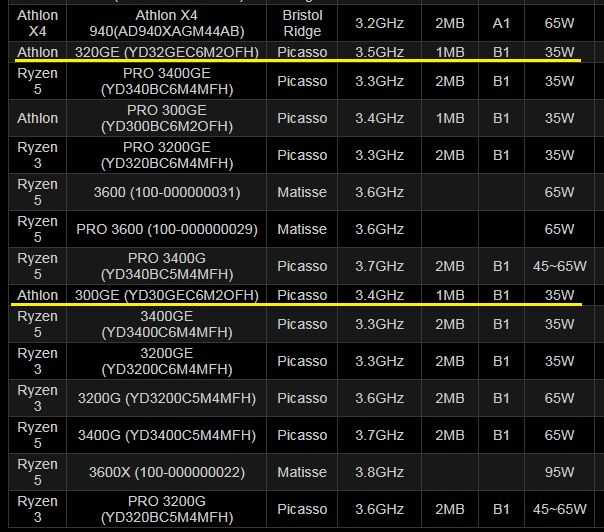
There’s also support for PCIe 5.0, which will double the bandwidth of PCIe 4.0. That means much faster SSDs, and depending on the motherboard you choose, faster graphics as well.
AMD Ryzen 7000 Series CPUs: AM5 Platform
Perhaps the most important thing to note here is AMD is going to move to a Land Grid Array (LGA) style of processor with AM5. This change will eliminate the Pin Grid Array (PGA) that has been used by AMD for Ryzen desktop CPUs since the launch. Here, take a look at the AMD AM5 socket that was shown to us during the AMD 2022 Product Premier:
Even though AMD will be using LGA for the first time for Ryzen CPUs, it’s no stranger to this socket. The company uses an LGA socket for both its EPYC enterprise processors and Threadripper processors. AMD has confirmed that it’s using an LGA1718 pin design with two different orientations of pins. The new socket is much denser than its old socket F which had 1207 pins. And just to put things into perspective, Intel’s new 12th-gen Alder Lake CPUs use an LGA1700 socket.
For those of you who don’t know, this change also means the bottom of the Zen 4 CPUs will only have contact pads now instead of pins. The pins will instead be defined at the socket level, rather than on the processor. Here’s a quick look at what the Ryzen 7000 CPUs will look like:
The AMD Ryzen 7000 CPUs will have a square package with a rather unique heatspreader design. AMD has made some space to accommodate the power circuitry between the gaps. The CPU package also has two notches along with a yellow arrow on the top left corner to help guide the user.
AMD had already confirmed the support for AM4 coolers with its upcoming AM5 platform, but it reiterated the same at CES 2022. You can expect the mounting holes for AM5 to be the same and you’ll be able to use the same CPU cooler that you’re currently using your AM4 CPUs.
Notably, AMD has also confirmed that the upcoming AM5 will be a long-lived platform, which will be used until at least 2025, but possibly even longer. In fact, the same was confirmed by AMD’s Dr. Lisa Su in a roundtable interview. She confirmed that the change from AM4 to AM5 was required due to the support for new standards including DDR5 and PCIe 5.0.
In fact, the same was confirmed by AMD’s Dr. Lisa Su in a roundtable interview. She confirmed that the change from AM4 to AM5 was required due to the support for new standards including DDR5 and PCIe 5.0.
For those of you who are curious, the AMD AM4 socket has been around since 2016, and it was used for five years over five generations. The AM2/2+ and AM3/3+ were also around for three and four years, respectively.
AMD Ryzen 7000 Series CPUs: Performance
In addition to confirming the AM5 socket and showing us the updated heatspreader design, AMD also showcased to us what the upcoming Ryzen 7000 CPU can do. AMD showcased a prototype of Zen4-based Ryzen 7000 CPU codename “Raphael” being used to play Halo Infinite. AMD confirmed that it was using one of the next-gen 7000 series chips for the demo along with a Geforce RTX 3080 graphics card attached to a prototype LGA1718 reference system.
The demo video embedded above (time-stamped) with gameplay footage lacks a lot of details including the achieved frame rates, but the company said the test CPU was hitting 5. 0GHz on all Zen4 cores. This is obviously not the kind of performance test to form an opinion on the upcoming CPUs, so we’ll for more info to decide whether or not these new chips will make it to our collection of the best gaming CPUs when we do our own testing.
0GHz on all Zen4 cores. This is obviously not the kind of performance test to form an opinion on the upcoming CPUs, so we’ll for more info to decide whether or not these new chips will make it to our collection of the best gaming CPUs when we do our own testing.
AMD Ryzen 7000 Series CPUs: Pricing & Release Date
AMD’s AM5 platform alongside the new Ryzen 7000 series CPUs are set to arrive on September 27, 2022. Pricing is as follows:
| Ryzen 9 7950X | Ryzen 9 7900X | Ryzen 7 7700X | Ryzen 5 7600X |
|---|---|---|---|
| $699 | $549 | $399 | $299 |
AMD will be launching new 3D V-Cache versions of these processors later this year.
AMD Ryzen 7000 Series CPUs: Frequently Asked Questions
Here are answers to some of the most frequently asked questions about the Ryzen 7000 series CPUs:
Can I use the same CPU cooler with Ryzen 7000 processors?
Officially, all AM4 coolers should fit AM5 boards, although AMD did tell us that around 5% of coolers might not fit.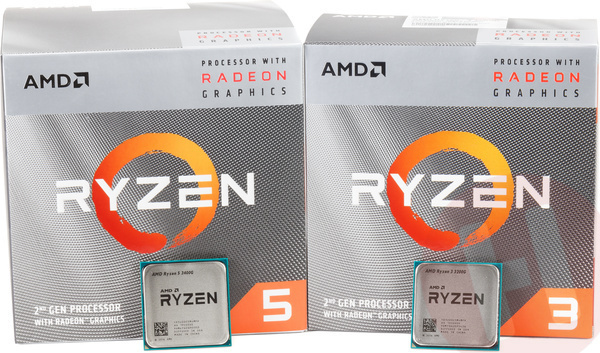 For these, most companies will just offer a new mounting kit.
For these, most companies will just offer a new mounting kit.
What CPU socket does the Ryzen 7000 series processor use?
The AMD Ryzen 7000 CPUs are built on the AM5 platform and require the new AM5 CPU socket with the new LGA1718 design.
Will Ryzen 7000 series have mobile CPUs?
AMD has only confirmed desktop CPUs but there are rumors about Ryzen 7000 mobile CPUs launching soon after the desktop parts.
We’re constantly on the lookout for more questions around the Ryzen 7000 series chips, so be sure to ask us your questions by dropping a line in the comments below.
AMD Ryzen 7000 Series CPUs: Final Thoughts
Intel’s 12th-gen Alder Lake CPUs have managed to take the lead from AMD’s current generation of CPUs. In fact, the Core i5-12600K has become our pick for the best CPU on the market right now, followed by the Ryzen 5 5600X. AMD’s upcoming V-Cache processor is expected to bridge the gap but we think it’ll be the Ryzen 7000 series chips that will truly take the lead from Alder Lake. Not to mention, the new Ryzen 7000 series CPUs will also support DDR5 and PCIe Gen 5, both of which are exclusive to Alder Lake CPUs in the desktop space right now.
Not to mention, the new Ryzen 7000 series CPUs will also support DDR5 and PCIe Gen 5, both of which are exclusive to Alder Lake CPUs in the desktop space right now.
List of All Ryzen CPUs with Integrated Graphics
Desktop Ryzen CPUs with Integrated Graphics
| Processors | Cores & Threads | Base/Boost Clock | iGPU | GPU Cores | GPU Clock Speed |
|---|---|---|---|---|---|
| Ryzen 3 2200G | 4/4 | 3.5/3.7GHz | RX Vega 8 | 8 | 1100MHz |
| Ryzen 3 2200GE | 4/4 | 3.2/3.6GHz | RX Vega 8 | 8 | 1100MHz |
| Ryzen 5 2400G | 4/8 | 3.6/3.9GHz | RX Vega 11 | 11 | 1250MHz |
| Ryzen 5 2400GE | 4/8 | 3.2/3.8GHz | RX Vega 11 | 11 | 1250MHz |
| Ryzen 3 3200G | 4/4 | 3.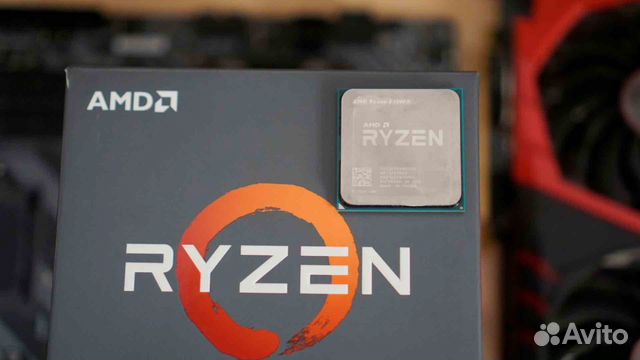 6/4.0GHz 6/4.0GHz |
RX Vega 8 | 8 | 1250MHz |
| Ryzen 3 3200GE | 4/4 | 3.3/3.8GHz | RX Vega 8 | 8 | 1200MHz |
| Ryzen 5 3400G | 4/8 | 3.7/4.2GHz | RX Vega 11 | 11 | 1400MHz |
| Ryzen 5 3400GE | 4/8 | 3.3/4.0GHz | RX Vega 11 | 11 | 1300MHz |
| Ryzen 3 4300GE | 4/8 | 3.5/4.0GHz | RX Vega 6 | 6 | 1700MHz |
| Ryzen 5 4600GE | 6/12 | 3.3/4.2GHz | RX Vega 7 | 7 | 1900MHz |
| Ryzen 7 4700GE | 8/16 | 3.1/4.3GHz | RX Vega 8 | 8 | 2000MHz |
| Ryzen 3 4300G | 4/8 | 3.8/4.0GHz | RX Vega 6 | 6 | 1700MHz |
| Ryzen 5 4600G | 6/12 | 3.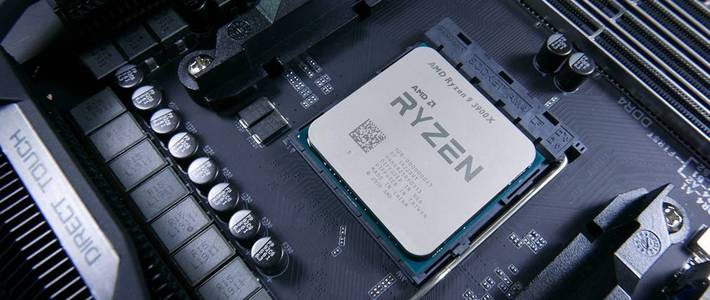 7/4.2GHz 7/4.2GHz |
RX Vega 7 | 7 | 1900MHz |
| Ryzen 7 4700G | 8/16 | 3.6/4.4GHz | RX Vega 8 | 8 | 2100MHz |
| Ryzen 3 5300GE | 4/8 | 3.6/4.2GHz | RX Vega 6 | 6 | 1700MHz |
| Ryzen 3 5300G | 4/8 | 4.2/4.2GHz | RX Vega 6 | 6 | 1700MHz |
| Ryzen 5 5600GE | 6/12 | 3.4/4.4GHz | RX Vega 7 | 7 | 1900MHz |
| Ryzen 5 5600G | 6/12 | 3.9/4.4GHz | RX Vega 7 | 7 | 1900MHz |
| Ryzen 7 5700GE | 8/16 | 3.2/4.6GHz | RX Vega 8 | 8 | 2000MHz |
| Ryzen 7 5700G | 8/16 | 3.8/4.6GHz | RX Vega 8 | 8 | 2000MHz |
Laptop Ryzen CPUs with Integrated Graphics
| Processors | Cores & Threads | BASE/BOOST CLOCK | IGPU | GPU CORES | GPU CLOCK SPEED |
|---|---|---|---|---|---|
| Ryzen 3 2200U | 2/4 | 2. 5/3.4GHz 5/3.4GHz |
RX Vega 3 | 3 | 1100MHz |
| Ryzen 3 2300U | 4/4 | 2.0/3.4GHz | RX Vega 6 | 6 | 1100MHz |
| Ryzen 5 2500U | 4/8 | 2.0/3.6GHz | RX Vega 8 | 8 | 1100MHz |
| Ryzen 7 2700U | 4/8 | 2.2/3.8GHz | RX Vega 10 | 10 | 1300MHz |
| Ryzen 5 2600H | 4/8 | 3.2/3.6GHz | RX Vega 8 | 8 | 1100MHz |
| Ryzen 7 2800H | 4/8 | 3.3/3.8GHz | RX Vega 11 | 11 | 1300MHz |
| Ryzen 3 3200U | 2/4 | 2.6/3.5GHz | RX Vega 3 | 3 | 1200MHz |
| Ryzen 5 3580U | 4/8 | 2.1/3.7GHz | RX Vega 9 | 9 | 1300MHz |
| Ryzen 3 3300U | 4/4 | 2.1/3.5GHz | RX Vega 6 | 6 | 1200MHz |
| Ryzen 5 3500U | 4/8 | 2. 1/3.7GHz 1/3.7GHz |
RX Vega 8 | 8 | 1200MHz |
| Ryzen 7 3700U | 4/8 | 2.3/4.0GHz | RX Vega 10 | 10 | 1400MHz |
| Ryzen 5 3550H | 4/8 | 2.1/3.7GHz | RX Vega 8 | 8 | 1200MHz |
| Ryzen 7 3750H | 4/8 | 2.3/4.0GHz | RX Vega 10 | 10 | 1400MHz |
| Ryzen 7 3780U | 4/8 | 2.3/4.0GHz | RX Vega 11 | 11 | 1400MHz |
| Ryzen 3 3250U | 2/4 | 2.6/3.5GHz | RX Vega 3 | 3 | 1200MHz |
| Ryzen 3 4300U | 4/4 | 2.7/3.7GHz | RX Vega 5 | 5 | 1400MHz |
| Ryzen 5 4500U | 6/6 | 2.3/4.0GHz | RX Vega 6 | 6 | 1500MHz |
| Ryzen 5 4600U | 6/12 | 2.1/4. 0GHz 0GHz |
RX Vega 6 | 6 | 1500MHz |
| Ryzen 7 4700U | 8/8 | 2.0/4.1GHz | RX Vega 7 | 7 | 1600MHz |
| Ryzen 7 4800U | 8/16 | 1.8/4.2GHz | RX Vega 8 | 8 | 1750MHz |
| Ryzen 5 4600H | 6/12 | 3.0/4.0GHz | RX Vega 6 | 6 | 1500MHz |
| Ryzen 7 4800H | 8/16 | 2.9/4.2GHz | RX Vega 7 | 7 | 1600MHz |
| Ryzen 9 4900HS | 8/16 | 3.0/4.3GHz | RX Vega 8 | 8 | 1750MHz |
| Ryzen 9 4900H | 8/16 | 3.3/4.4GHz | RX Vega 8 | 8 | 1750MHz |
| Ryzen 3 5400U | 4/8 | 2.6/4.0GHz | RX Vega 6 | 6 | 1600MHz |
| Ryzen 3 5425U | 4/8 | 2.7/4.1GHz | RX Vega 6 | 6 | 1600MHz |
| AMD Ryzen 5 5600U | 6/12 | 2. 3/4.2GHz 3/4.2GHz |
RX Vega 7 | 7 | 1800MHz |
| AMD Ryzen 5 5625U | 6/12 | 2.3/4.3GHz | RX Vega 7 | 7 | 1800MHz |
| AMD Ryzen 5 5600HS | 6/12 | 3.0/4.2GHz | RX Vega 7 | 7 | 1800MHz |
| AMD Ryzen 5 5600H | 6/12 | 3.3/4.2GHz | RX Vega 7 | 7 | 1800MHz |
| AMD Ryzen 7 5800U | 8/16 | 1.9/4.4GHz | RX Vega 8 | 8 | 2000MHz |
| AMD Ryzen 7 5800H | 8/16 | 3.2/4.4GHz | RX Vega 8 | 8 | 2000MHz |
| AMD Ryzen 7 5800HS | 8/16 | 2.8/4.4GHz | RX Vega 8 | 8 | 2000MHz |
| AMD Ryzen 7 5825U | 8/16 | 2.0/4.5GHz | RX Vega 8 | 8 | 2000MHz |
| AMD Ryzen 9 5900HS | 8/16 | 3. 0/4.6GHz 0/4.6GHz |
RX Vega 8 | 8 | 2100MHz |
| AMD Ryzen 9 5900HX | 8/16 | 3.3/4.6GHz | RX Vega 8 | 8 | 2100MHz |
| AMD Ryzen 9 5980HS | 8/16 | 3.0/4.8GHz | RX Vega 8 | 8 | 2100MHz |
| AMD Ryzen 9 5980HX | 8/16 | 3.3/4.8GHz | RX Vega 8 | 8 | 2100MHz |
| AMD Ryzen 5 6600U | 6/12 | 2.9/4.5GHz | Radeon 660M | 6 | 1900MHz |
| AMD Ryzen 5 6600HS | 6/12 | 3.3/4.5GHz | Radeon 660M | 6 | 1900MHz |
| AMD Ryzen 5 6600H | 6/12 | 3.3/4.5GHz | Radeon 660M | 6 | 1900MHz |
| AMD Ryzen 7 6800U | 8/16 | 2.7/4.7GHz | Radeon 680M | 12 | 2200MHz |
| AMD Ryzen 7 6800HS | 8/16 | 3.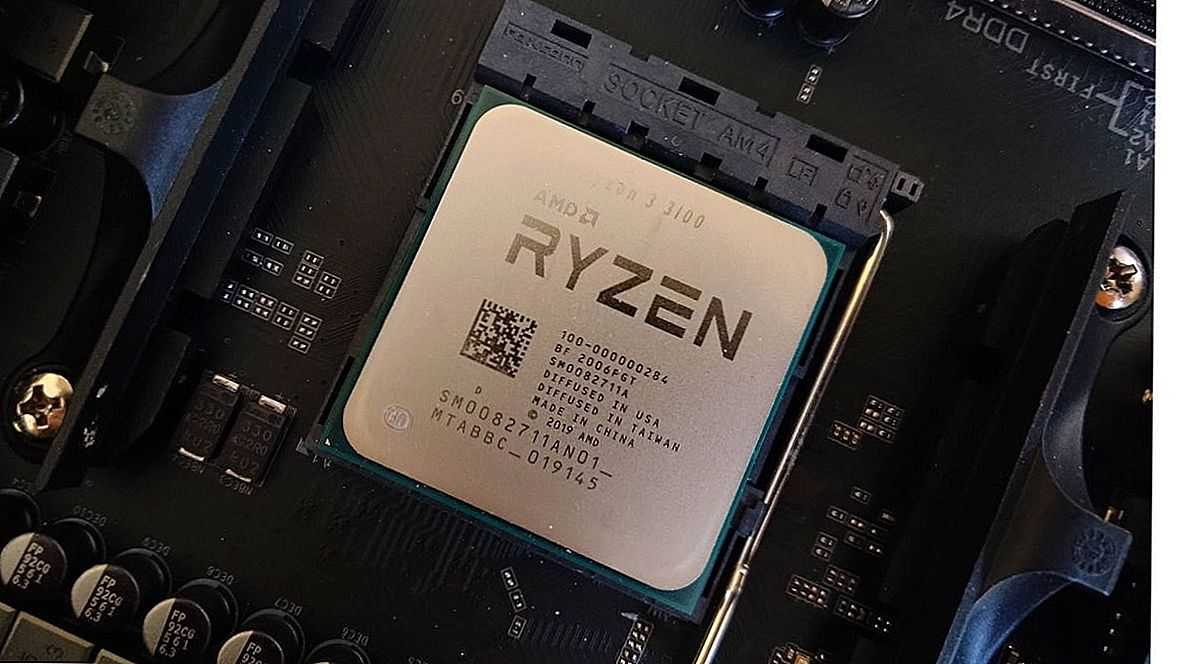 2/4.7GHz 2/4.7GHz |
Radeon 680M | 12 | 2200MHz |
| AMD Ryzen 7 6800H | 8/16 | 3.2/4.7GHz | Radeon 680M | 12 | 2200MHz |
| AMD Ryzen 9 6900HS | 8/16 | 3.3/4.9GHz | Radeon 680M | 12 | 2400MHz |
| AMD Ryzen 9 6900HX | 8/16 | 3.3/4.9GHz | Radeon 680M | 12 | 2400MHz |
| AMD Ryzen 9 6980HS | 8/16 | 3.3/5.0GHz | Radeon 680M | 12 | 2400MHz |
| AMD Ryzen 9 6980HX | 8/16 | 3.3/5.0GHz | Radeon 680M | 12 | 2400MHz |
The Best Desktop Ryzen APUs
From the first generation of Ryzen APUs to the latest one, we have only a few APUs that are worth buying. Many of them are OEM-only, making them almost unavailable to the customers. We will look at the best APUs from the first to the latest generation and why you should consider them if you are building a PC for casual gaming or content creation.
AMD Ryzen 3 2200G
Check Amazon Price
The Ryzen 3 2200G is the slowest of all the Ryzen APUs yet it brought the most value for less than $100 when it was launched. It has been replaced by the new Ryzen generations, however, it is still decent for an entry-level gaming experience.
The APU brings 4 cores and 4 threads with a base/boost clock of 3.5/3.7GHz. The boost clock is for single core only, however, the APU is overclockable and can be overclocked beyond 3.7GHz. The default TDP is 65W and it is compatible with the AM4 socket.
The iGPU is Vega 8 which features 8 cores clocked at 1100MHz. Although it seems like a great graphics unit, as the processor is based on the very first Zen architecture, the overall performance is much slower than the latest Ryzen APUs.
AMD Ryzen 5 2400G
Check Amazon Price
Ryzen 5 2400G offers a noticeable increase in both gaming and non-gaming performance as it features hyperthreading and higher clock speeds. The default core/thread count is 4/8 which gives it a big advantage in CPU-intensive applications and as many tests have shown the positive impact of hyperthreading on gaming, it is a better choice for higher gaming performance than the Ryzen 2200G.
The default core/thread count is 4/8 which gives it a big advantage in CPU-intensive applications and as many tests have shown the positive impact of hyperthreading on gaming, it is a better choice for higher gaming performance than the Ryzen 2200G.
Just like the 2200G and all other APUs, the 2400G is also overclockable but features the same default TDP of 65W. The base/boost clock speeds are 3.6/3.9GHz and the iGPU is Vega 11 which features 11 GPU cores clocked at 1250MHz.
AMD Ryzen 3 3200G
Check Amazon Price
Ryzen 3 3200G was launched to replace the 2200G and is based on the newer Zen+ architecture that gives a significant growth in IPC performance. The 3200G brings 4 cores/4 threads running at a clock speed of 3.6/4.0GHz. The default TDP is retained at 65W and overclocking is also enabled.
The iGPU is Vega 8 but features a higher core clock frequency of 1250MHz. Hence, having higher clock speeds, better architecture, and a higher GPU core clock makes it faster than the Ryzen 2200G.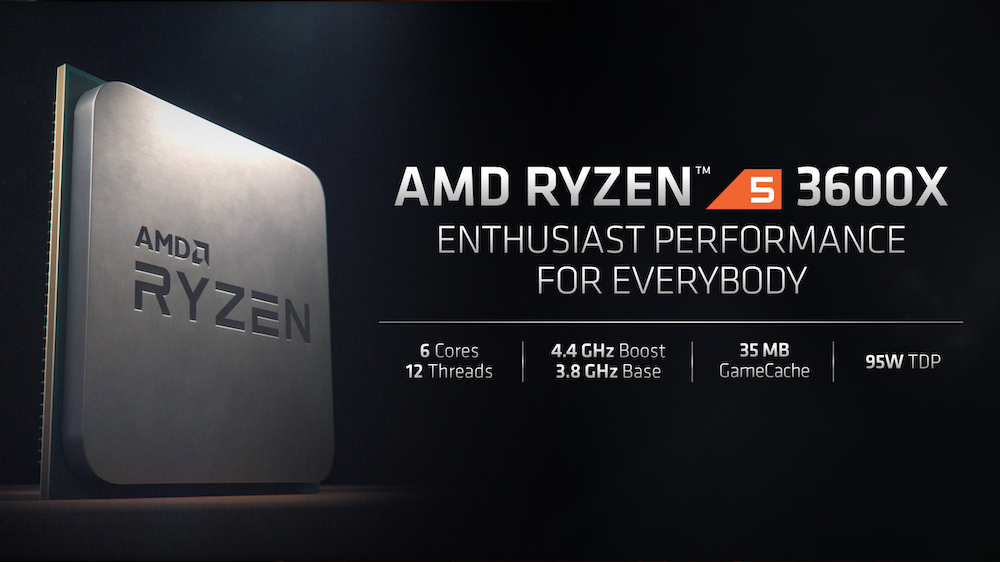
AMD Ryzen 5 3400G
Check Amazon Price
The Ryzen 3400G replaces the 2400G and shares the same family as the 3200G. It is based on the Zen+ architecture and is made on a 12nm process node, unlike the Ryzen 2200G/2400G that uses the 14nm process node. This makes it more power efficient while maintaining higher performance.
It features 4 cores and 8 threads clocked at 3.7/4.2GHz. The chip can be overclocked and features a default TDP of 65W. The iGPU is the RX Vega 11 graphics featuring 11 GPU cores clocked at 1400MHz making it the fastest Ryzen APU with the Zen+ architecture.
AMD Ryzen 5 5600G
Check Amazon Price
Ryzen 5600G is based on the Zen 3 architecture which brings 19% IPC uplift and a totally different die design where the cores are able to access 100% of the L3 cache directly. The 5600G features 6 cores/12 threads clocked at 3.9/4.4GHz. The APU is overclockable and features a default TDP of 65W.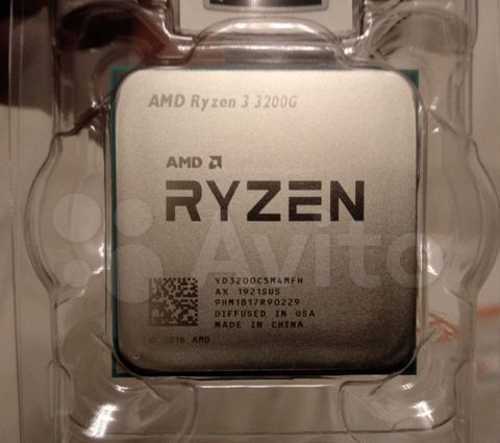
The processor’s iGPU is Vega 7 which features a high clock speed of 1900MHz. This makes it significantly faster than the previous generation Ryzen APUs. Also, being built on the TSMC’s 7nm process node, the APU brings higher performance without having an increase in power consumption.
AMD Ryzen 7 5700G
Check Amazon Price
Currently, the Ryzen 5700G is the fastest desktop APU. The APU brings 8 cores and 16 threads featuring a clock speed of 3.8/4.6GHz. The default TDP is also 65W and the processor is overclockable. The iGPU is Vega 8 clocked at 2000MHz and provides the fastest gaming and non-gaming performance among all the Ryzen APUs.
report this ad
Related Articles
Check Also
Close
-
Processors
Best CPU for RTX 2080
October 25, 2018
| xfr [1] 1-2 | L1 | L3 | The initial level | July 27, 2017 109 US dollars |
Glofo 14lp |
1 × CCD | 4 (4) | 2 × 2 | 3.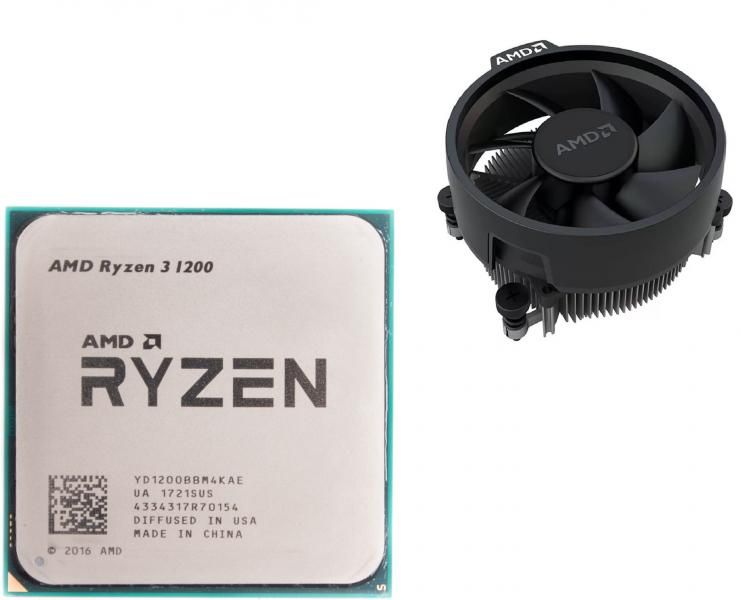 1 1 |
3.4 | 1 (3.1) (3.1) (3.1) KB inst. 32 KB data 90 | 3.5 | 3.7 (?) |
? | |||||||||||||||||||||||||||||||||||||||||||||||||||||||||||||||||||||||||||||||||||||||||||||||||||||||||
|---|---|---|---|---|---|---|---|---|---|---|---|---|---|---|---|---|---|---|---|---|---|---|---|---|---|---|---|---|---|---|---|---|---|---|---|---|---|---|---|---|---|---|---|---|---|---|---|---|---|---|---|---|---|---|---|---|---|---|---|---|---|---|---|---|---|---|---|---|---|---|---|---|---|---|---|---|---|---|---|---|---|---|---|---|---|---|---|---|---|---|---|---|---|---|---|---|---|---|---|---|---|---|---|---|---|---|---|---|---|---|---|---|---|---|---|---|---|---|---|
| Ryzen 3 1300x [5] | July 27, 2017 129 US dollars |
3.5 | 3.7 (3.5) |
April 11, 2017 169 US dollars |
Glofo 14lp |
1 × CCD | 4 (8) | 2 × 2 | 3.2 | ||||||||||||||||||||||||||||||||||||||||||||||||||||||||||||||||||||||||||||||||||||||||||||||||||||||||||||||
| Ryzen 5 1500x [8] | April 11, 2017, 189 USA |
3.5 | 3.9
00 9000 9000 9 $ 3,000 9000 9000 9000 9000 9000 9000 9,000 9000 | April 11, 2017 219 US dollars |
6 (12) | 2 × 3 | 3.2 | 3.6 (3.4) |
April 11, 2017 OEM |
3. 2 2 |
3.6 (?) |
? | |||||||||||||||||||||||||||||||||||||||||||||||||||||||||||||||||||||||||||||||||||||||||||||||||||||||||||
| Ryzen 5 1600x [11] | April 11, 2017 249 US dollars |
4.0 (3.7) |
95 B.0026 7 1700 [12] | March 2, 2017 329 US dollars |
GloFo 14LP |
1 × CCD | ? | ||||||||||||||||||||||||||||||||||||||||||||||||||||||||||||||||||||||||||||||||||||||||||||||||||||||||||||||||
| Ryzen 7 1700x [14] | March 2, 2017 399 US dollars |
3.4 | 3.8 (3.5) |
95 VT | March 2, 2017 499 US dollars |
3.6 | 4.09851 (3.7) | 4.1 | High -class table computer (Hedt) | Ryzen ThreidRipper 1900x [16] | August 31, 2017 549 US dollars |
Glofo 14lp |
(16) | 3.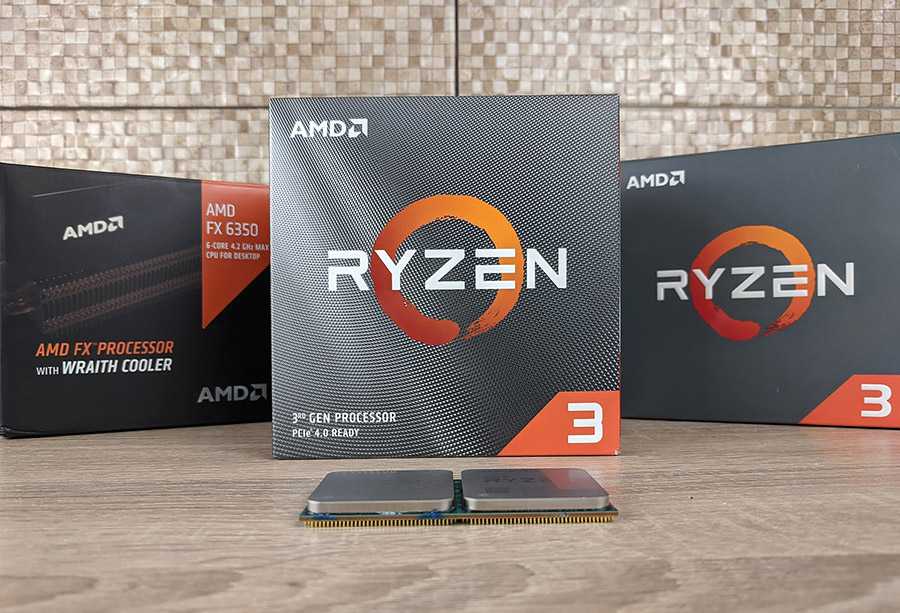 3 3.3 3.3 3.3 3.3 3.33 3.33 3.33 3.3 3.004 2 × 4 3 3.3 3.3 3.3 3.3 3.33 3.33 3.33 3.3 3.004 2 × 4
| 4.0 (3.9) |
4.2 | 64 KB inst. 32 KB data on the kernel |
512 KB on the kernel |
2 × 8 MB for CCX |
TR4 | 64 (60+4) | 64 (60+4) | 64 (60+4)0043 May 10, 2018 OEM |
||||||||||||||||||||||||||||||||||||||||||||||||||||||||||||||||||||||||||||||||||||||||||||||||
| RYZEN 5 2400GE [26] [21] | April 19, 2018 OEM |
4 (8) | 3.2 9004 14 3.26 RX | 704:44:8 11 c.u. [27] |
1250 | 1760 | 35 | ||||||||||||||||||||||||||||||||||||||||||||||||||||||||||||||||||||||||||||||||||||||||||||||||||||||||||||||||
| Ryzen 5 Pro 2400GE [28] | 10 2018 OEM |
||||||||||||||||||||||||||||||||||||||||||||||||||||||||||||||||||||||||||||||||||||||||||||||||||||||||||||||||||||||
| Ryzen 5 2400G [29] | |||||||||||||||||||||||||||||||||||||||||||||||||||||||||||||||||||||||||||||||||||||||||||||||||||||||||||||||||||||||
| Ryzen 5 2500x [35] | September 10, 2018 OEM |
GLOFO 12LP (14LP +) |
1 × CCD 9004 9004 3 (8) 9004 3 (8) 9004 1 $ 9004 (8) 9004 1 3. 6 6 |
4.0 | 64 KB inst. 32 KB data on the kernel |
512 KB on the kernel |
8 MB | AM4 | 24 (16+4+4) | DDR4-2933 | 1 | 1 | 1 | 1 | 1 | 1 | 1 0044 | ||||||||||||||||||||||||||||||||||||||||||||||||||||||||||||||||||||||||||||||||||||||||||||||||||||||
| Ryzen 5 2600e [36] | September 2018 OEM |
6 (12) | 2 × 3 | 3.1 | 2 × 8 MB 9 MMB 9 MMB 9 MMB 9 MMb DDR4-2667 Double channel |
45 W | |||||||||||||||||||||||||||||||||||||||||||||||||||||||||||||||||||||||||||||||||||||||||||||||||||||||||||||||||
| RYZEN 5 1600 AF (Update 12 Nm) [37] |
, 85 USA |
DDR4-2933 Double channel |
65 W | ||||||||||||||||||||||||||||||||||||||||||||||||||||||||||||||||||||||||||||||||||||||||||||||||||||||||||||||||||||
| RYZEN 5 2600 [38] | April 19, 2018 199 US dollars |
3. 9 9
| 9000 9649 RyZen | April 19, 2018 229 US dollars |
3.6 | 4.2 | 95 W | November 23, 2018 UK £ 221.99 |
|||||||||||||||||||||||||||||||||||||||||||||||||||||||||||||||||||||||||||||||||||||||||||||||||||||||||||||||
| Painting | Ry0025 Ryzen 5 3500 | November 15, 2019, OEM (West) Japan 16000 IEN [59] |
TSMC 7FF |
6 (6) | 1 × CCD 5 | 2 × 3 | 3.6 | 4.1 | 32 KiB inst. 32 data KIB on the kernel |
512 KIB on the kernel |
2 × 8 MB for CCX |
AM4 | 24 (16+4+4+4) 24 (16+4+4+4) 24 (16+4+4+4) 24 (16+4+4+4)0851 Double channel | 65 W | |||||||||||||||||||||||||||||||||||||||||||||||||||||||||||||||||||||||||||||||||||||||||||||||||||||||||
| Ryzen 5 3500x [60] | October 8, 2019, China ¥ 1099 |
2 × 16 MIB for CCX | July 7, 2019, US dollars |
6 (12) | 3.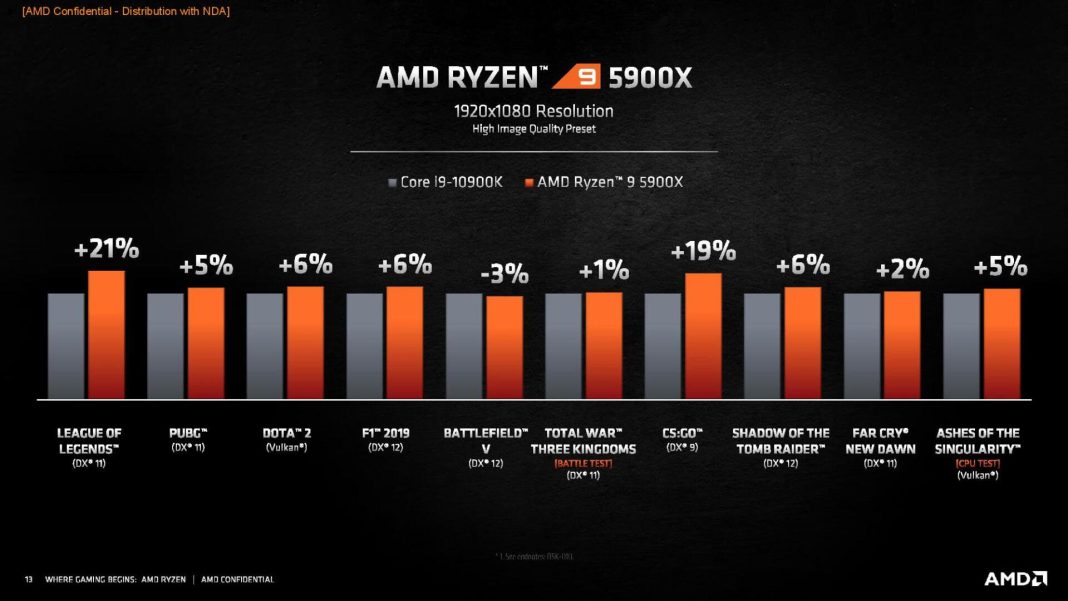 6 6 |
4.2 | |||||||||||||||||||||||||||||||||||||||||||||||||||||||||||||||||||||||||||||||||||||||||||||||||||||||||||||||||
| Ryzen 5 Pro 3600 [62] | |||||||||||||||||||||||||||||||||||||||||||||||||||||||||||||||||||||||||||||||||||||||||||||||||||||||||||||||||||||||
| Ryzen 5 3600x [63] | July 7, 2019, 249 US dollars |
3.8 | 4.4 | 95 W | RYZEN 5 3600XT [64] JU 249 US dollars 4.5 |
| |||||||||||||||||||||||||||||||||||||||||||||||||||||||||||||||||||||||||||||||||||||||||||||||||||||||||||||||||
| Play | |||||||||||||||||||||||||||||||||||||||||||||||||||||||||||||||||||||||||||||||||||||||||||||||||||||||||||||||||||||||
| Ryzen 7 Pro 3700 [65] | September 30, 2019, OEM |
TSMC 7FFF | ) CCD 1 x I/O | July 7, 2019, 499 US dollars |
3.8 | 4.6 | 105 W [III] | ||||||||||||||||||||||||||||||||||||||||||||||||||||||||||||||||||||||||||||||||||||||||||||||||||||||||||||||||
| RYZEN 9 3900XT [73] | 451 | 4.7 | |||||||||||||||||||||||||||||||||||||||||||||||||||||||||||||||||||||||||||||||||||||||||||||||||||||||||||||||||||||
| RYZEN 9 3950X [74] | November 25, 2019, 749 US dollars |
16 (32) | 4 | 3. 5 9004 5 9004 | |||||||||||||||||||||||||||||||||||||||||||||||||||||||||||||||||||||||||||||||||||||||||||||||||||||||||||||||||||
| Model | Release date and price |
Fab | CPU | GPU | memory size | 1900 MHz | 1702. 4 4 |
||||||||||||||||||||||||||||||||||||||||||||||||||||||||||||||||||||||||||||||||||||||||||||||||||||||||||||||||
|---|---|---|---|---|---|---|---|---|---|---|---|---|---|---|---|---|---|---|---|---|---|---|---|---|---|---|---|---|---|---|---|---|---|---|---|---|---|---|---|---|---|---|---|---|---|---|---|---|---|---|---|---|---|---|---|---|---|---|---|---|---|---|---|---|---|---|---|---|---|---|---|---|---|---|---|---|---|---|---|---|---|---|---|---|---|---|---|---|---|---|---|---|---|---|---|---|---|---|---|---|---|---|---|---|---|---|---|---|---|---|---|---|---|---|---|---|---|---|---|
| Ryzen 7 4700g | 8 (16) | 3.6 | 4.4 | RX VEGA 8 | 2100 MHz | 2150.4 | |||||||||||||||||||||||||||||||||||||||||||||||||||||||||||||||||||||||||||||||||||||||||||||||||||||||||||||||||
| RYZEN 3 4300GE | 4 (8) | 3.5 | 4.0 | 4 MB 7 RX VEGA 6 |
1700MHz | 1305.6 | 35W0] | 1100 MHz | 422.4 | DDR4-2400 Double channel |
12–25 W | RYZEN 3 3200U [91] | 3.5 | 1200 MHz | 460.8 | Ryzen 3 2300u [92] | January 8, 2018 | (4) | 2.0 | 14 3 8 6 c.u. [93] |
1100 MHz | 844. 8 8 |
|||||||||||||||||||||||||||||||||||||||||||||||||||||||||||||||||||||||||||||||||||||||||||||||||
| Ryzen 3 Pro 2300u [94] | May 15, 2018 | Ryzen 5 2500u [95]
| 261 [95]
| 261 [95]
| 2
| 4 (8) |
3.6 |
Vega 8 |
512:32:16 |
8 c.u. [96] 1126.4 |
| |||||||||||||||||||||||||||||||||||||||||||||||||||||||||||||||||||||||||||||||||||||||||||||||||||||||||||||
| Ryzen 5 Pro 2500U [97] | Ryzen 5 2600h [98] | September 10, 2018 | 3.2 | DDR4-3200 Double channel |
RYZEN 7 2700U [99] | 3.8 | Vega 10 | 640:40:16 10 c.u. [100] |
1300 MHz | 1664 | DDR4-2400 Double channel |
12–25 W | |||||||||||||||||||||||||||||||||||||||||||||||||||||||||||||||||||||||||||||||||||||||||||||||||||||||||||
| RYZEN 7 PRO 2700U 9UU | Ryzen 5 4500u [120] | March 16, 2020 | 6 (6) | 2 × 3 | 4. 0 0 |
8 MB 4 MB on CCX 9094 | on CCX :24:8 6 c.u. |
1500 | 1152 | ||||||||||||||||||||||||||||||||||||||||||||||||||||||||||||||||||||||||||||||||||||||||||||||||||||||||||||||
| Ryzen 5 4600U [121] | 6 (12) | 2.1 | |||||||||||||||||||||||||||||||||||||||||||||||||||||||||||||||||||||||||||||||||||||||||||||||||||||||||||||||||||||
| Ryzen 5 PRO 4650U [122] | 7 2020 | ||||||||||||||||||||||||||||||||||||||||||||||||||||||||||||||||||||||||||||||||||||||||||||||||||||||||||||||||||||||
| Ryzen 5 4600HS [123] | March 16, 2020 | 3.0 | 35 W | ||||||||||||||||||||||||||||||||||||||||||||||||||||||||||||||||||||||||||||||||||||||||||||||||||||||||||||||||||||
| RYZEN 5 4600H [124] | 35 | 8 (8) | 2 × 4 | 2.0 | 4.1 | Vega 7 448:28:8 7 cu |
1600 MHz | 1433.6 | 10-25 W | ||||||||||||||||||||||||||||||||||||||||||||||||||||||||||||||||||||||||||||||||||||||||||||||||||||||||||||||
| Ryzen 7 PRO 4750U [126] | 7 May 200431022 8 (16) | 1.7 | |||||||||||||||||||||||||||||||||||||||||||||||||||||||||||||||||||||||||||||||||||||||||||||||||||||||||||||||||||||
| Ryzen 7 4800u [127] | March 16, 2020 | 1. 8 8 |
4.2 | Vega 8 512: 32: 8 8 8, E.E.E. |
1750mhz | 1792 | |||||||||||||||||||||||||||||||||||||||||||||||||||||||||||||||||||||||||||||||||||||||||||||||||||||||||||||||||
| Ryzen 7 4800HS [128] | 2.9 | Vega 4 8:08 | 1600MHz | 1433.6 | 35 W Gartenberg, Chaim (01/06/2020). «7nm AMD Ryzen 4000 processors replace 10nm Intel Ice Lake processors for laptops.» theverge.com . Facets. Retrieved 2020-01-07.
AMD Ryzen 3 4100 vs. Ryzen 5 4500, Ryzen 3 3100, and Core i3-12100F/10100: Should I pay extra? GECID.com. ::>Processors 04-08-2022 AMD continues to pour in budget processors like from a cornucopia. We’ve already explored the new 12-thread AMD Ryzen 5 4500 and AMD Ryzen 5 5500, which now start at $95 and $120 respectively. The processor came for testing from the CompX store. The assortment in it is aimed more at gamers, so here you can always find hardware for your gaming machine. Available, both new and used components with a guarantee, which is provided for at least 1 year. Therefore, turning to CompX you can be sure of the quality and reliability of the selected components specifically for your tasks. By the way, the guys will soon open a second store in Kyiv on the right bank, where a cool event is planned, make sure not to miss it. What kind of processor is this Ryzen 3 4100? As already noted, the Ryzen 3 4100 is an affordable competitor to the Intel Core i3. While you can’t really blame AMD, times are like this, other than that the Reds are fine. Just decided to expand a little range in the lower price segment. Let’s see what is happening there now and what we will play with. Choice of CPU competitors was before. And to be honest, it was pretty good. Ryzen 3 3100 supports PCIe 4.0. Therefore, video cards with a narrow bus paired with it work a little faster than with the new product. Another internal competitor is AMD Ryzen 5 4500. This is already an option in case «what will I get if I pay a little extra.» Including 4 additional streams, a larger cache, especially L3, and a 100 MHz boost to the frequency. Now competitors from Intel. The first — the blue snowman is very close in spirit — Core i3-10100. It has the same 4 cores in 8 threads, a 300 MHz higher peak core frequency and a bottom L3 cache size. This processor came out almost simultaneously with the progenitor of the hero of the review, Ryzen 3 4300G, and both support only PCIe 3.0. And finally, the second snowman — Intel Core i3-12100F. Except for the same 4 cores in 8 threads, it is the most charged here. Supports PCIe 4.0 and even 5.0 as well as DDR5. And in general, the Alder Lake S generation turned out to be good cores. Under what conditions did you test? There were three motherboards — their names and relationship with the processors are now in front of you. Note that ASUS ROG Strix B550-F Gaming automatically increased the frequency of the Ryzen 3 4100 by 100 MHz, which it did not do for its predecessor.
So that the processors do not “burn out” from the number of tests and intense races, they were cooled with a serious dropsy — Cooler Master MasterLiquid PL240 FLUX . Its fans are no louder than a whisper of 32 dB, and the MTBF is 160,000 hours. And this is more than 18 years of continuous work. The RAM was taken not very cool, closer to the people — 2 bars PATRIOT VIPER Steel DDR4-3600 . Already a traditional guest in our system — Palit GeForce RTX 3080 Ti GameRock OC . So that in no case do the CPUs think to push their jambs and dullness to the lack of GPU power. What else helps to get rid of loading and dulling is the SSD. All games, tests and benchmarks run quickly and work with M.2 PCIe SSD PATRIOT P300 1TB. His TBW indicates 640 TB. This is a record of about 100 GB per day for 18 years. Well, or 3 months of torrents for 18+ content … that’s the way. We always provide system power supply of high quality and with a margin — for quiet and reliable operation of the system. This time Seasonic Prime PX-850 did it. Up to 40% of the load, the fan does not even move, and even after its presence it practically does not affect. In addition, it has gold-plated connectors and a 12-year warranty. We put all the iron in the be quiet! PURE BASE 500DX Black . The process of settling in was easy, and the temperatures inside were comfortable. Since the case is well ventilated, it is also equipped with three quiet 140mm fans Pure Wings 2 . But since it’s summer outside, and the case allows it, we increased the number of turntables to 6 — we added the be quiet! LIGHT WINGS 140mm PWM Triple Pack . In a word — heavenly conditions for components. Let’s see what they show us in return. Comparison with competitors How processors will behave in work tasks, we evaluate synthetic tests. Ryzen 3 4100 kinship with G-series APUs is again confirmed by benchmark AIDA64 . The location of the memory controller under the cover next to the cores has a big impact on the speed of writing to memory. So, according to this indicator, the hero of the review by 87% bypassed his predecessor. Ryzen 3 3100 bounced back in 7-ZIP Benchmark — 16% ahead of Ryzen 3 4100 in archive packing speed and 6% in overall rating. Here, the only one that the new product was able to bypass is the old Core i3-10100 — by 2-27%. The natural leader, by a wide margin, was the only 12-streamer of this test. A clear differentiation between processors can be seen in the CineBench R23 . First of all, check out how good the Core i3-12100F looks. It beats the new Ryzen 3 4100 by 42% in a single-core load and by 33% in a multi-thread. If you look at the results of the red counterpart, then he performed on equal terms with the Ryzen 3 3100 and punishes the Core i3-10100 — by 7% and 23%, respectively. No wonder the latter had nerves at the beginning of the examination. Yes, now let’s put it on the shelves, which we got on average in working tests:
Well, the first part of the quest has been completed. Now we will supplement it with gaming benchmarks. Often they ignore how processors behave in synthetics and give out completely different prizes. Assassin’s Creed Valhalla confirms this theory at ultra settings and 50% render scale. Here we can say that the Ryzen 3 4100 takes almost the last place. The only thing that saves it is 10% less frequency subsidence compared to the Core i3-10100. If you look at the average, the hero of the review is the weakest. To the winner of the Core i3-12100F, he merges from 12 to 29%. Cyberpunk 2077 was driven out twice. At first, without ray tracing, but with ultra-graphics and DLSS in maximum performance mode. Here, for sure, the Ryzen 34100 can be considered an outsider. Since the closest competitor Core i3-10100 has almost the same 0.1% Low, but noticeably better rare events and average frequency — by 19%. Enabling tracing almost equalizes the old and new Ryzen 3, but Intel is still in the lead. To the nearest of them — 12-18%. The game Forza Horizon 5 , with extreme graphics settings and rendering in performance mode, did not like the Ryzen 3 4100 the most. Moreover, it is even 13-14% worse than its predecessor. Not to mention the 17-18% lag behind the Core i3-10100. The last hope of new items on Total War Saga: Troy . The quality of the grass and the size of the armies are extreme here, maybe Intel will sag after all? And so, yes, Ryzen 3 4100, albeit a little, was ahead of its two main competitors: Ryzen 3 3100 — by 6-14%, and Core i3-10100 — by 8-20%. Well, now we are compiling the characteristics of very rare events of each benchmark and see how the places are distributed between our processors.
CPU overclocking In the meantime, overclocking. The most stable result that we managed to get with this «pebble» is +500 MHz to the maximum declared frequency. To do this, the multiplier was set to 45, and the voltage was fixed at 1.45 V, which gave a stable 4500 MHz. We saw the greatest bonus from such manipulations in a single-core load CineBench R23 — 13%. But the benchmark CPU-Z improved by 10% in both cases. And actually that’s all it’s worth talking about. In other tests, the increase is within the margin of error and does not exceed 5-8%. This also applies to games. On average, for all benchmarks, the performance of the Ryzen 3 4100 improved by only 5%. It’s not thick at all. At the same time, the CPU temperature increased significantly, from 57℃ to 77℃ — by 20℃! This is in our case with 6 fans and under a cool dropsy. Therefore, the verdict is that there is no point in overclocking the Ryzen 3 4100 at all. How does the Ryzen 3 4100 handle tough games? Well, now let’s leave all the competition behind and just see how the new AMD budget employee behaves in heavy games in conjunction with a powerful video card. Can it provide a playable FPS? We first tested Battlefield 2042 to demonstrate non-ray tracing ultragraphics. Another thing is oD: Warzone on the maximum chart. Even the rate of very rare events keeps almost 60 fps, and the average frequency is 87 fps. And such a small gap between these two indicators indicates a very good stability of the video sequence. As well as the almost even thread of the Frame Time graph. In short, there is nothing to complain about — Ryzen 3 4100 is enough here. Second most problematic after Battlefield 2042 is Dying Light 2 with maximum graphics even without rays. Deathloop quietly took over the ultra graphics. Well, how calm, there is one moment. The frame rate is not so stable, if you would like — then 80-100 fps, then sharply 40-45 fps. Of course, the 2x drop is noticeable to the naked eye, which can be caused by a very small amount of L3 cache. You can get used to this or there is another option to enable frame rate limiting. All the other games in our test set performed well at maximum graphics settings without ray tracing. The average frequency is consistently above 60 fps, often far beyond this mark, and the rate of very rare events is in the region of 40-41 fps. Somewhere there are small twitches. But they are definitely not permanent and do not strain. Conclusions and prices Important clarification. To compare processor prices, we took the Core i3-10100F. In terms of power, it is the same as in the test, only without a built-in video core and is noticeably cheaper. Consequently, by mid-July 22, the prices were as follows. Prices for processors with a boxed cooler. hotlines. Mid-July:
Motherboard prices. hotlines. Mid July:
Processor and motherboard connection prices.
Our new state employee is right in the middle, if we look at the price tags of only the processors themselves. But if you add the cost of the motherboard, the expensive-cheap rating transforms and the Ryzen 3 4100 is already at the bottom of the list. Although the blue competitor with the cheapest motherboard comes on the heels. Which is better in terms of price/feature? The Ryzen 3 4100 outperforms the Core i3 10100 by an average of 5% in workloads, but Intel is 3-13% better in games. And it could have been more if not for Total War. Ryzen 3 3100 flies all the way. It is almost gone in stores, but there is — the prices will not be. The main thing that he showed here is that the L3 cache rules. At a frequency lower by 200 MHz, it performed just as well, and in some places noticeably better than the new Ryzen 3 4100. Probably the main competitor for the hero of the review is the 6-core 12-thread Ryzen 5 4500. Surcharge is only 500 UAH. will bring 19% more value in work tasks and 19-26% in games. Here the choice is clear! Well, or you can go to the blue side. Yes, a computer with a Core i3-12100F is expensive, you need to add about 1800 hryvnia. to the price of a system with Ryzen 3 4100 or plus 44%. But here you have a new platform and a 17% bonus in work tasks and a significant 31-37% advantage in games.
In general, you can’t say that the AMD Ryzen 3 4100 is a pattern break and all. Rather, there is a re-release of the 2020 processor to increase the range. The main thing is that you can play cool games with maximum graphics on it and it is inexpensive. When there is a choice, we are all for it. That’s only if there is an opportunity to find an additional 500 UAH, then this choice will not be in favor of the novelty. Write, which of the tested processors would you take for yourself? Author: Denis Koziolek AMD Ryzen 5 1600 vs Ryzen 3 3200G:performance comparison VS AMD Ryzen 5 1600 AMD Ryzen 3 3200G Which is better: 6-core AMD Ryzen 5 1600 at 3.2 GHz or Ryzen 3 3200G with 4 cores at 3.6 GHz? To find out, read our comparative testing of these desktop processors in popular benchmarks, games and heavy applications.
OverviewOverview and comparison of the main metrics from NanoReview Single -flow performance Rating in tests using one kernel Ryzen 5 1600 48 Ryzen 3 3200G Multi -WEACH IS Tests in benchmarks, where all nuclei 9000 Ryzen 5 1,600 900 Ryzen 5 16000007 32 RYZEN 3 3200G 18 Energy efficiency Effect Energy Consumption Chip Ryzen 5 1600 44 Ryzen 3 3200G RENISENE 9000 42 Ryzen 3 3200G 41 Key differencesWhat are the main differences between 3200G and 1600 Reasons to choose AMD Ryzen 5 1600
Reasons to choose AMD Ryzen 3 3200G
Benchmark testsCompare the results of processor tests in benchmarks Cinebench R23 (single core) Ryzen 5 1600 899 Ryzen 3 3200G 937 Cinebench R23 (multi-core) Ryzen 5 1600 6195 Ryzen 3 3200G 3297 Passmark CPU (single core) Ryzen 5 1600 2059 Ryzen 3 3200G 2200 Passmark CPU (multi-core) Ryzen 5 1600 12254 Ryzen 3 3200G 7142 Geekbench 5 (Single Core) Ryzen 5 1600 927 Ryzen 3 3200G 890 Geekbench 5 (multi-core) Ryzen 5 1600 5096 Ryzen 3 3200G 3052 ▶️ Add your score to Cinebench R23 SpecificationsAMD Ryzen 5 1600 and Ryzen 3 3200G full technical specifications list General information
Performance
Power consumption
Igpu Flops Ryzen 5 1600 Ryzen 3 3200G 1.13 Teraflops Memory Support
Other
PollWhat processor do you think is the best? Ryzen 5 1600 56 (61. Ryzen 3 3200G 35 (38.5%) Total votes: 91 Competitors 1. 2. 3. 4. 5. 6. 7. 8. 9. 10. What will you choose: AMD Ryzen 3 3200G or Ryzen 5 1600? Name Message Zen 4. Launch September 27, prices from 299 dollars
AMD has officially unveiled the new AMD Ryzen 7000 Zen 4 series processors: new socket AM5, DDR5 support, PCIe 5. The release includes 4 processors, including the flagship Ryzen 9 7950X, as well as Ryzen 9 7900X, Ryzen 7 7700X and Ryzen 5 7600X. AMD builds new Ryzen 7000 Zen 4 series processors on a new 5nm process node. AMD claims that the new processors provide a 13% IPC improvement over the Ryzen 5000 Zen 3 series processors, with a maximum frequency of up to 5.7 GHz, resulting in a 29% increase in single-threaded performance. New Zen 4 processors ship on the new AM5 socket which is backwards compatible with most AM4 coolers and uses the LGA1718 socket. Along with the new Ryzen 7000 Zen 4 series processors, AMD will launch next-generation X670E, X670, B650E and B650 motherboards that support not only DDR5 memory but also PCIe 5.0 for new graphics cards and SSDs. Supports PCIe 5.0 GPU or PCIe 5.0 SSD, or both, depending on the board, if you purchase the «Extreme» motherboard, designated «E» in the X670E and B650E models. Prices for processors:
| ||||||||||||||||||||||||||||||||||||||||||||||||||||||||||||||||||||||||||||||||||||||||||||||||||||||||||||||||||

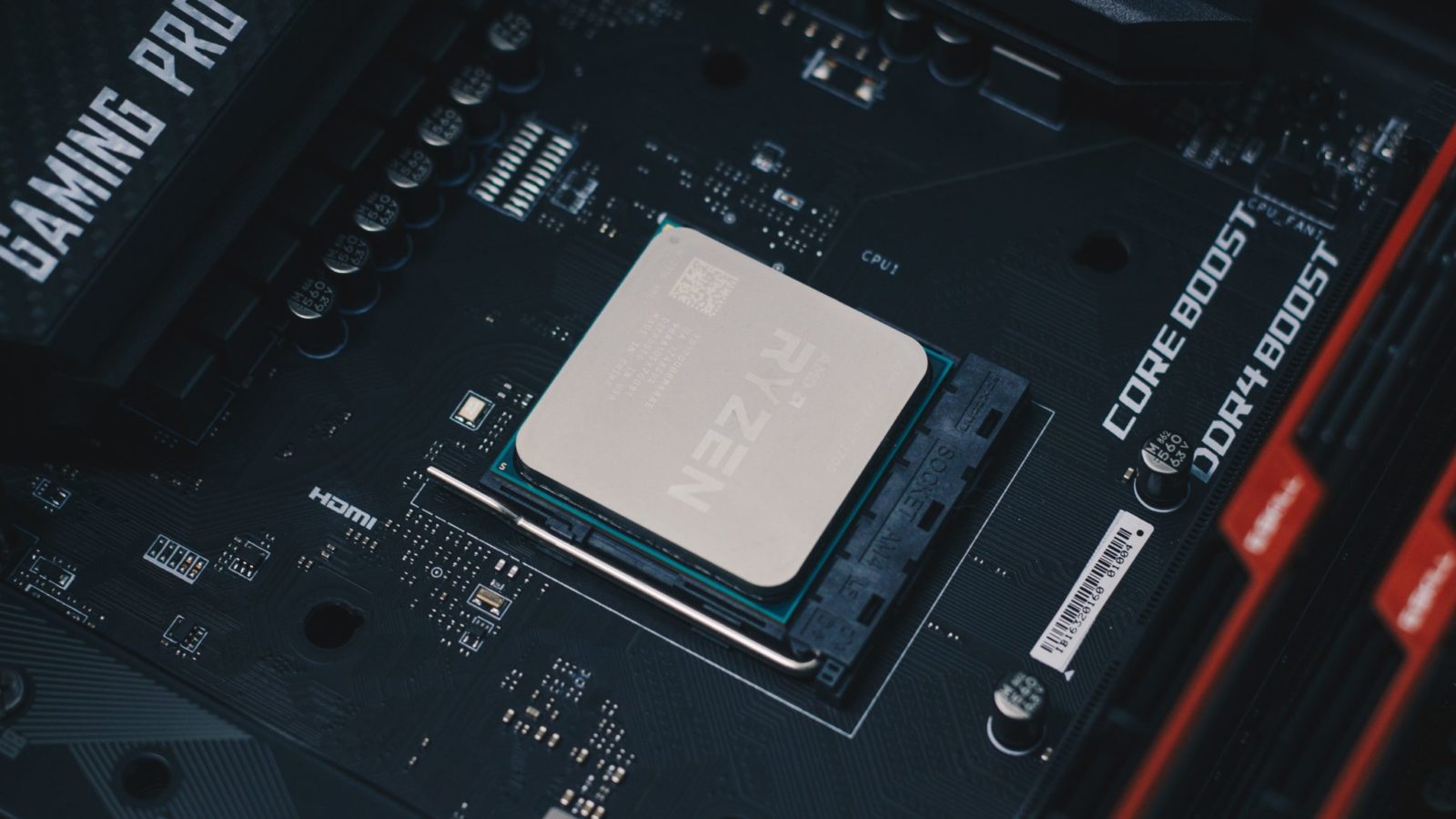 0625 TiB
0625 TiB  0625 TiB
0625 TiB  035 kW
035 kW  And now it’s time for a real competitor to the Intel Core i3, a processor that costs only $80. This is the 8-thread Ryzen 3 4100, also introduced in April, just like its older brothers. Will he be able to punish the blues or should he be bypassed? Now let’s figure it out. There will be a comparison with 4 competitors, overclocking, gameplay in heavy games and price analytics — everything you like.
And now it’s time for a real competitor to the Intel Core i3, a processor that costs only $80. This is the 8-thread Ryzen 3 4100, also introduced in April, just like its older brothers. Will he be able to punish the blues or should he be bypassed? Now let’s figure it out. There will be a comparison with 4 competitors, overclocking, gameplay in heavy games and price analytics — everything you like.  The novelty also has 4 cores with 8 threads. And a modest set of other features, at least compared to the older Ryzen 5. The maximum frequency is 4 GHz, the L3 cache is only 4 MB and support for the PCIe interface is maximum version 3.0. In fact, we are familiar with the 2020 Ryzen 3 4300G, only with the video core turned off. Then this processor was exclusively for ready-made collections, but now the “trimmings” have been put on sale. AMD fought, fought, and in the end took the «dark path» of Intel, which also liked to update and re-release.
The novelty also has 4 cores with 8 threads. And a modest set of other features, at least compared to the older Ryzen 5. The maximum frequency is 4 GHz, the L3 cache is only 4 MB and support for the PCIe interface is maximum version 3.0. In fact, we are familiar with the 2020 Ryzen 3 4300G, only with the video core turned off. Then this processor was exclusively for ready-made collections, but now the “trimmings” have been put on sale. AMD fought, fought, and in the end took the «dark path» of Intel, which also liked to update and re-release.  The maximum frequency of the Ryzen 3 3100 is 100 MHz lower, but the L3 cache is 4 times larger — 16 MB. Let’s see if this helps.
The maximum frequency of the Ryzen 3 3100 is 100 MHz lower, but the L3 cache is 4 times larger — 16 MB. Let’s see if this helps. 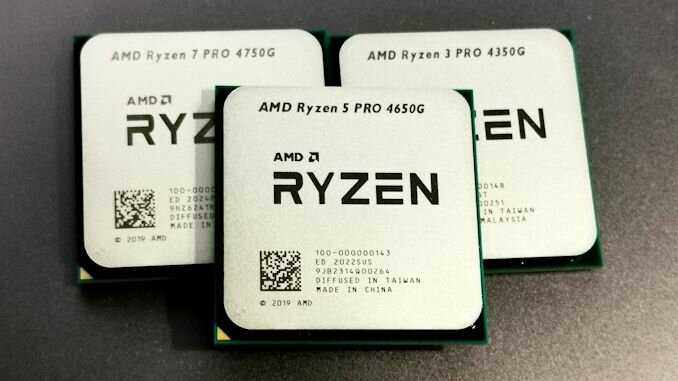 But there is a nuance here with the platform — more on that after the tests.
But there is a nuance here with the platform — more on that after the tests. 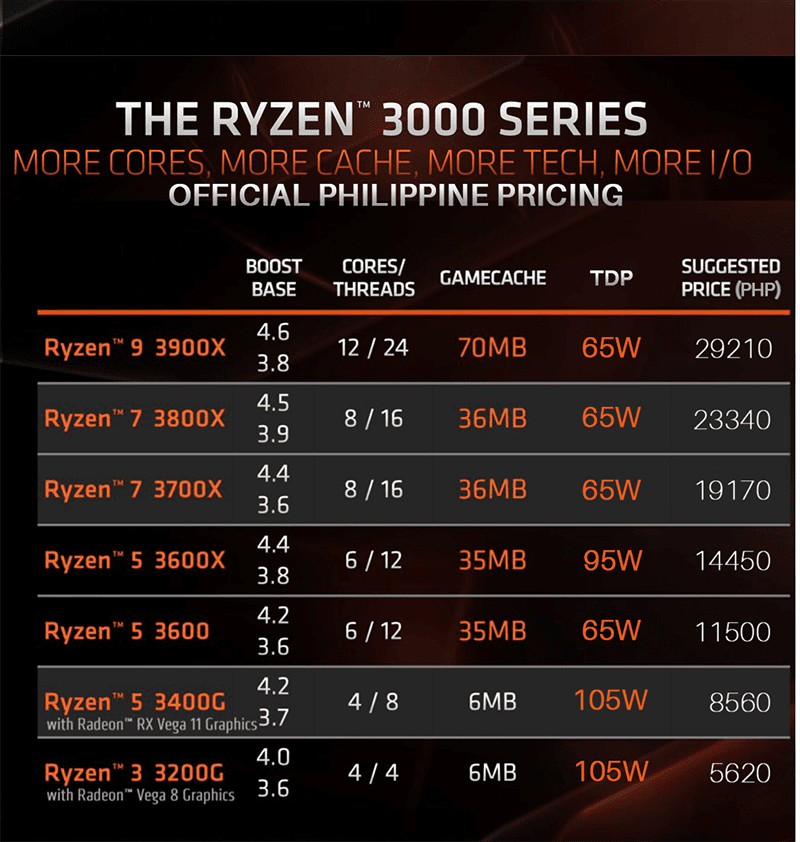 The frequency is quite high, it looks nice and the timings are good — 18-22-22-42.
The frequency is quite high, it looks nice and the timings are good — 18-22-22-42. 


 The hero of the review also lost to its predecessor, the Ryzen 3 3100 — from 2 to 9%, despite the higher clock speed. This is what happens when the L3 cache is 4 times smaller.
The hero of the review also lost to its predecessor, the Ryzen 3 3100 — from 2 to 9%, despite the higher clock speed. This is what happens when the L3 cache is 4 times smaller.  The hero of the review, who gets the 4th place, scored the least frames per second. The 3rd place is shared between the Core i3-10100 and the Ryzen 3 3100. The second is the 6-core 12-thread 4500, which does not suit him very well. Well, the first is a bandit with a Core i3-12100F pistol. In games, he is the coolest of all the participants. But it is too early to draw final conclusions — we keep in mind the important price factor. In conclusion, let’s talk about this.
The hero of the review, who gets the 4th place, scored the least frames per second. The 3rd place is shared between the Core i3-10100 and the Ryzen 3 3100. The second is the 6-core 12-thread 4500, which does not suit him very well. Well, the first is a bandit with a Core i3-12100F pistol. In games, he is the coolest of all the participants. But it is too early to draw final conclusions — we keep in mind the important price factor. In conclusion, let’s talk about this. 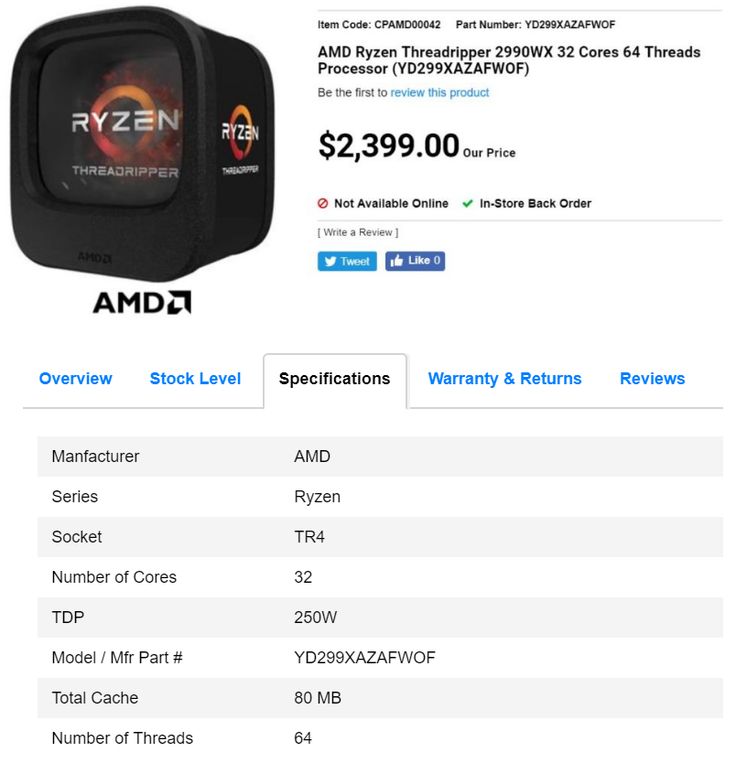 Surprisingly, in the multistream, the increase in points did not even reach 1%.
Surprisingly, in the multistream, the increase in points did not even reach 1%. 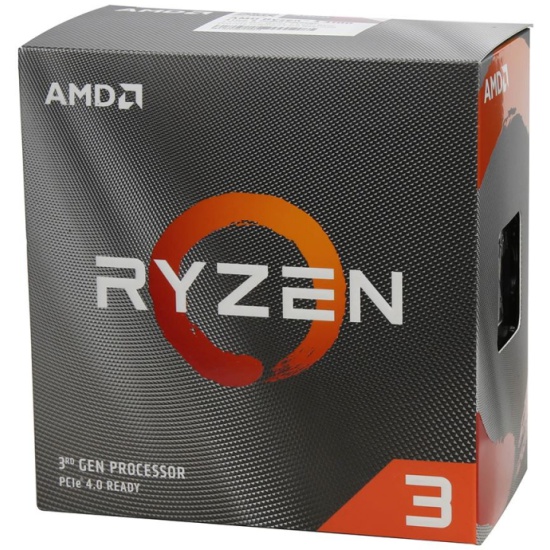 128 players ran around the Exposure map, and we in particular. What can I say, it’s not very convenient to play, but it’s possible. You have to put up with subsidence up to 40 fps, twitching and dulling. At the same time, Battlefield 2042 , although it stands out, obediently follows instructions at an average of 50 fps. Attempts to improve controllability by reducing the quality of graphics do not lead to a positive result.
128 players ran around the Exposure map, and we in particular. What can I say, it’s not very convenient to play, but it’s possible. You have to put up with subsidence up to 40 fps, twitching and dulling. At the same time, Battlefield 2042 , although it stands out, obediently follows instructions at an average of 50 fps. Attempts to improve controllability by reducing the quality of graphics do not lead to a positive result. 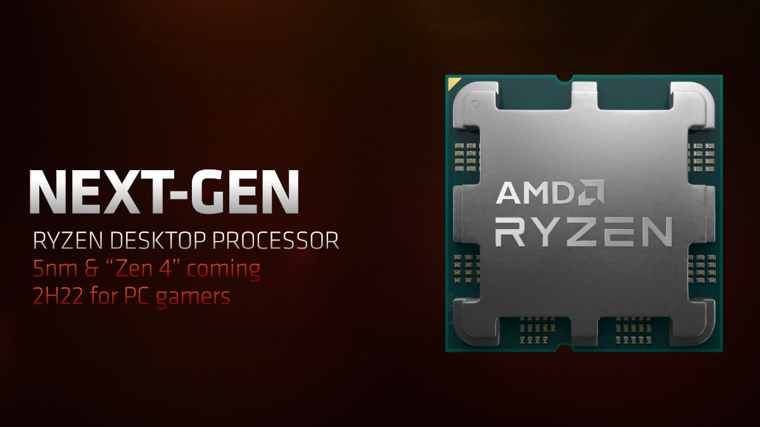 It takes a very long time to load data. For about 10 minutes we wound circles around the map, until everything finally calmed down and random subfreezes disappeared. Well, after that «the sun comes out from behind a cloud» — 122 fps on average and 0.1% low at least 97 fps!
It takes a very long time to load data. For about 10 minutes we wound circles around the map, until everything finally calmed down and random subfreezes disappeared. Well, after that «the sun comes out from behind a cloud» — 122 fps on average and 0.1% low at least 97 fps!  Since we have collected the cream of the heavy gaming community here, we can state that this processor will handle most modern titles. Except for the ill-fated Battlefield 2042 mode. And now, let’s sublimate all the information from the review to give a simple and understandable conclusion.
Since we have collected the cream of the heavy gaming community here, we can state that this processor will handle most modern titles. Except for the ill-fated Battlefield 2042 mode. And now, let’s sublimate all the information from the review to give a simple and understandable conclusion.  hotlines. Mid-July:
hotlines. Mid-July: 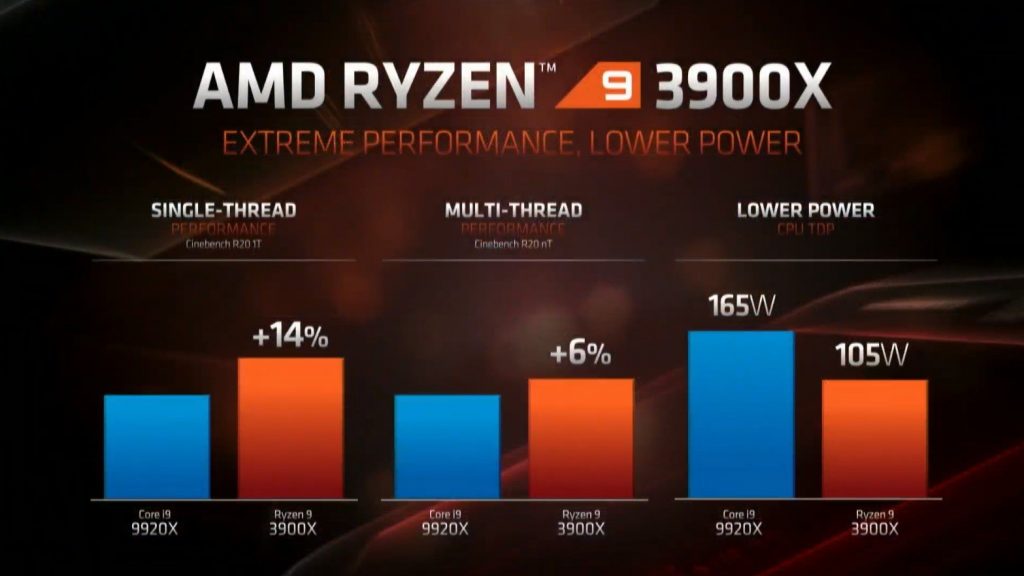 Given the very close price and the similarity of other advantages — here the choice will depend solely on the price and availability in a particular store, and personal sympathy for Intel or AMD.
Given the very close price and the similarity of other advantages — here the choice will depend solely on the price and availability in a particular store, and personal sympathy for Intel or AMD. 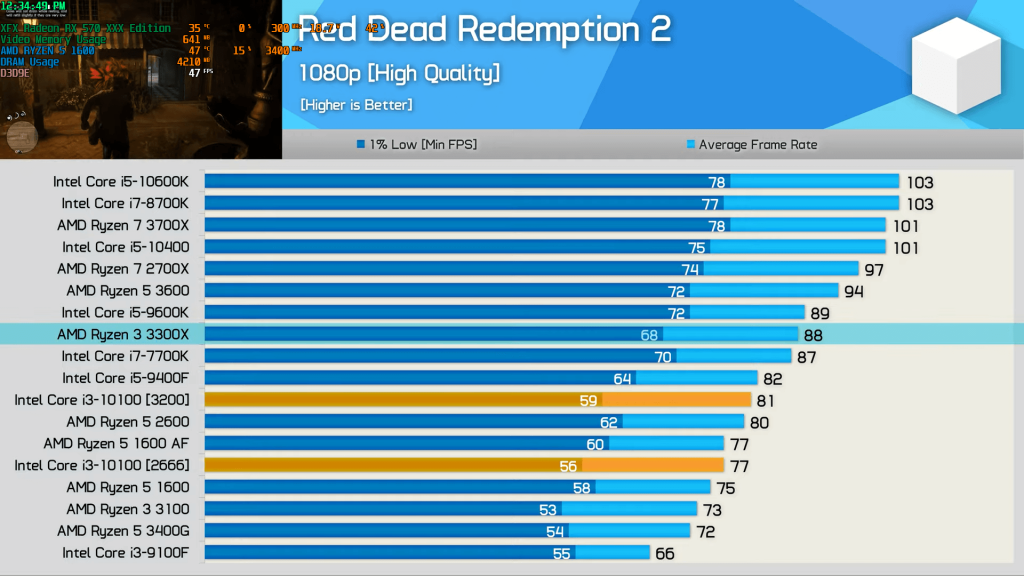
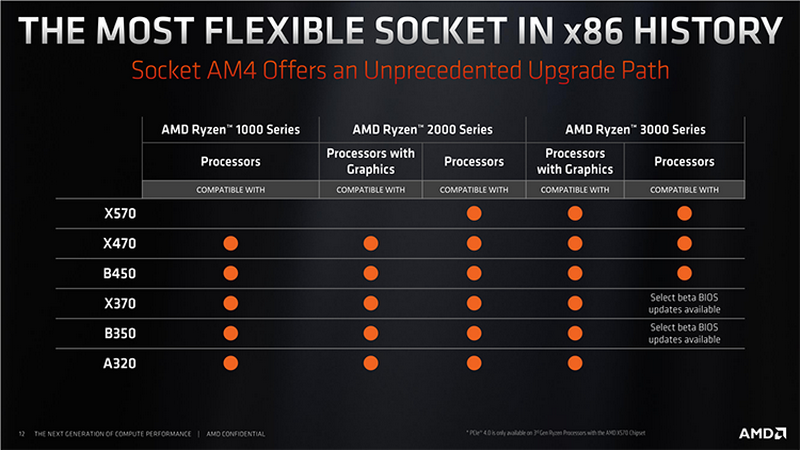 Core i5-11400, Core i5-12600K and Ryzen 5 5600X Price/Features
Core i5-11400, Core i5-12600K and Ryzen 5 5600X Price/Features
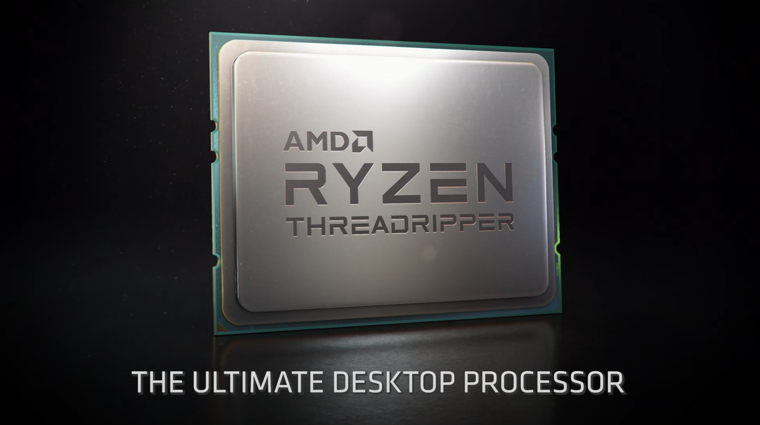 6 GHz)
6 GHz)  2 GHz
2 GHz 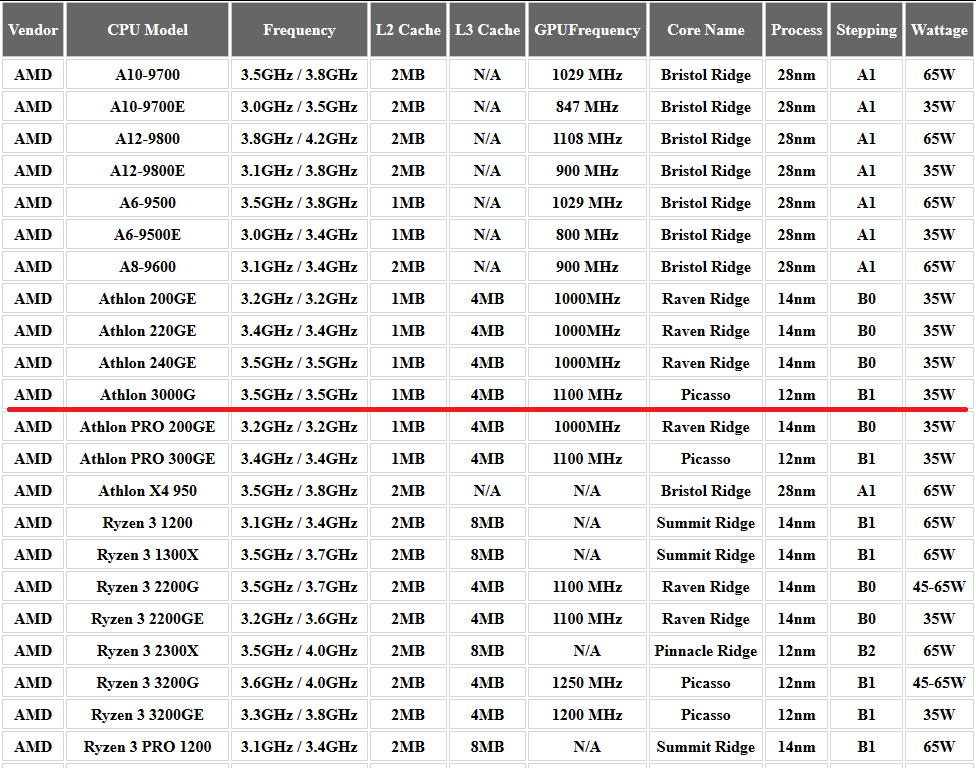 resolution
resolution 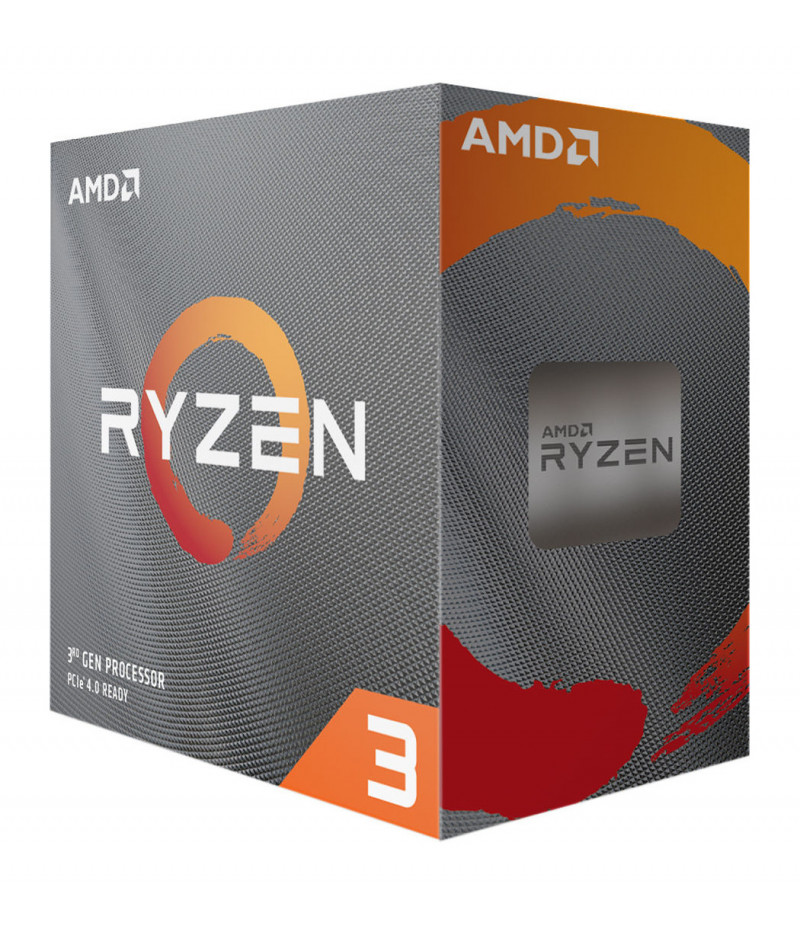 5%)
5%)  0 support, and 5nm process technology.
0 support, and 5nm process technology.
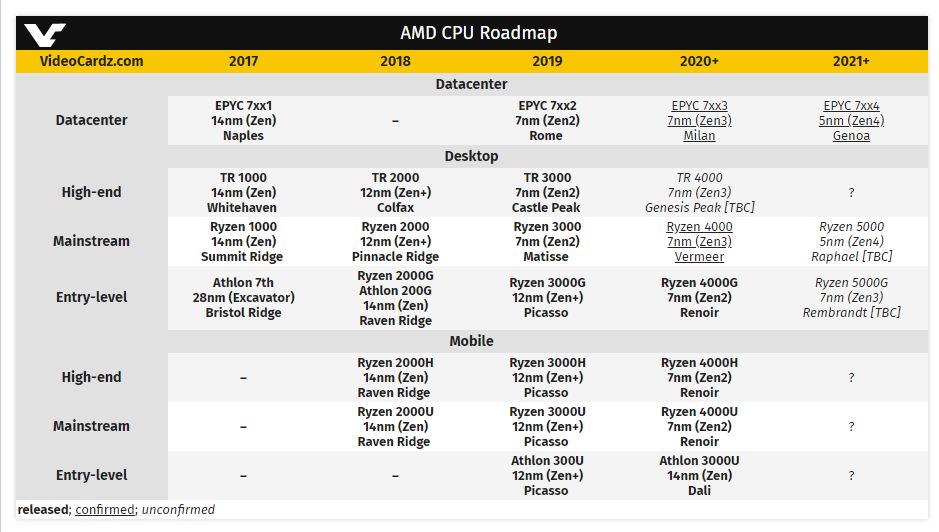
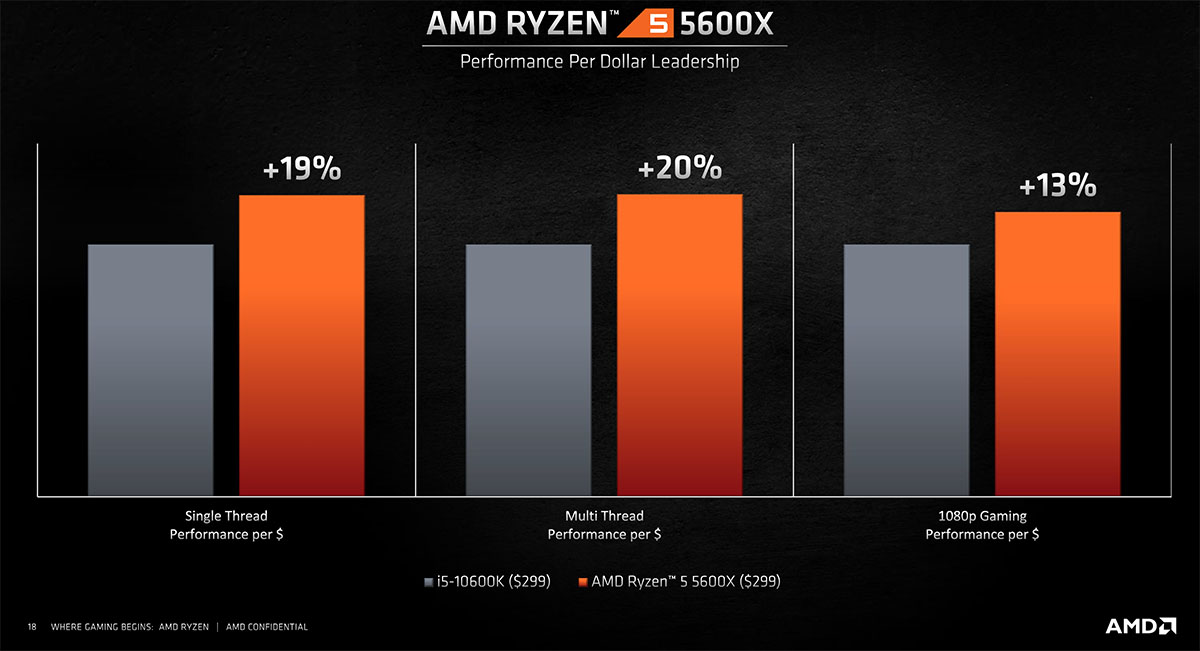 The brutality of the series will reach a new level
The brutality of the series will reach a new level  Genre diversity rolls over: action movies, tactics, global strategies, role-playing games and even slashers. In 2022, there has not been a single month that would have been so busy.
Genre diversity rolls over: action movies, tactics, global strategies, role-playing games and even slashers. In 2022, there has not been a single month that would have been so busy. 